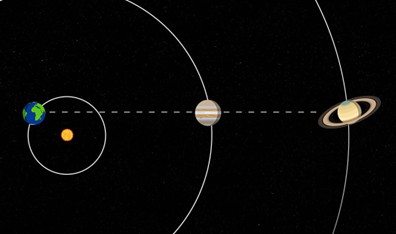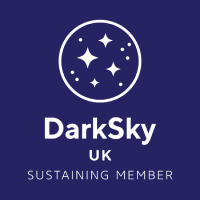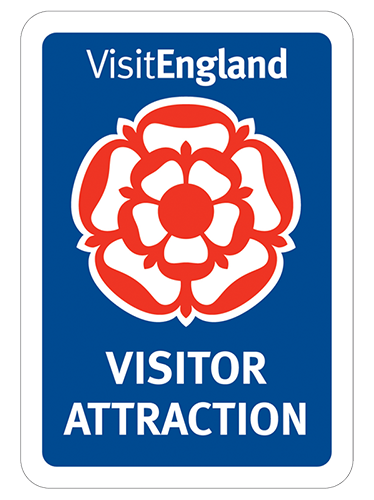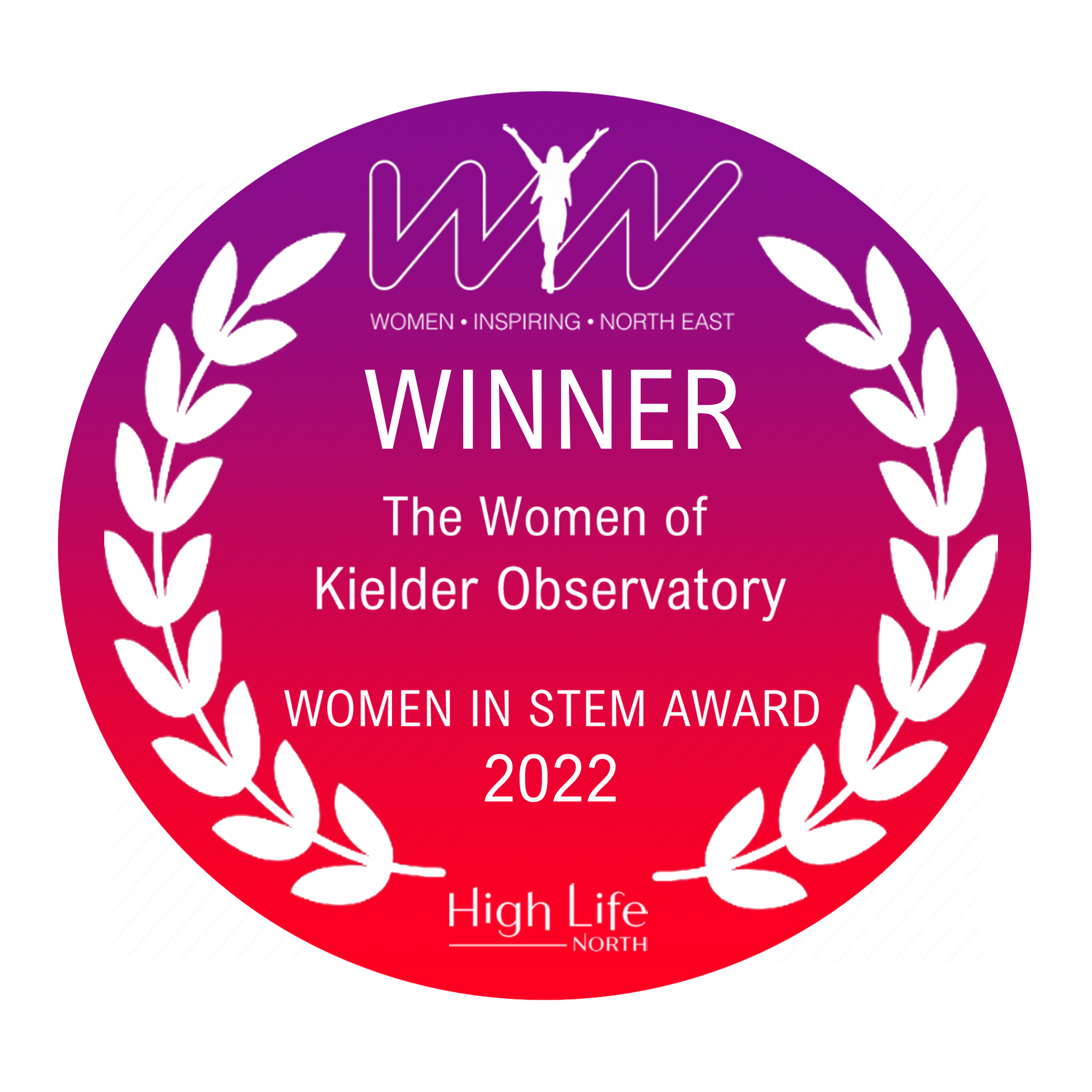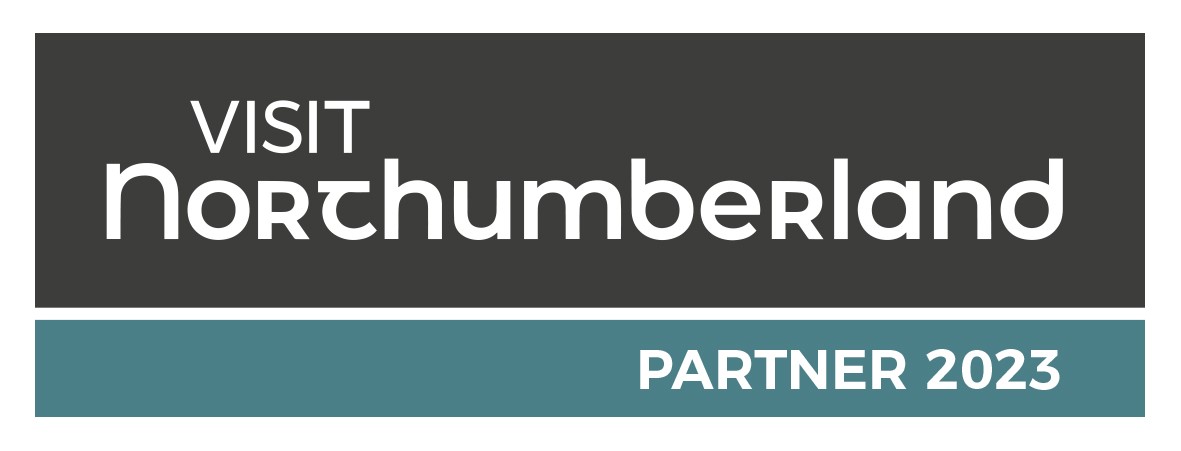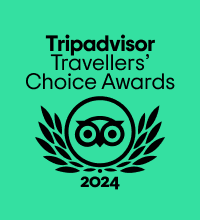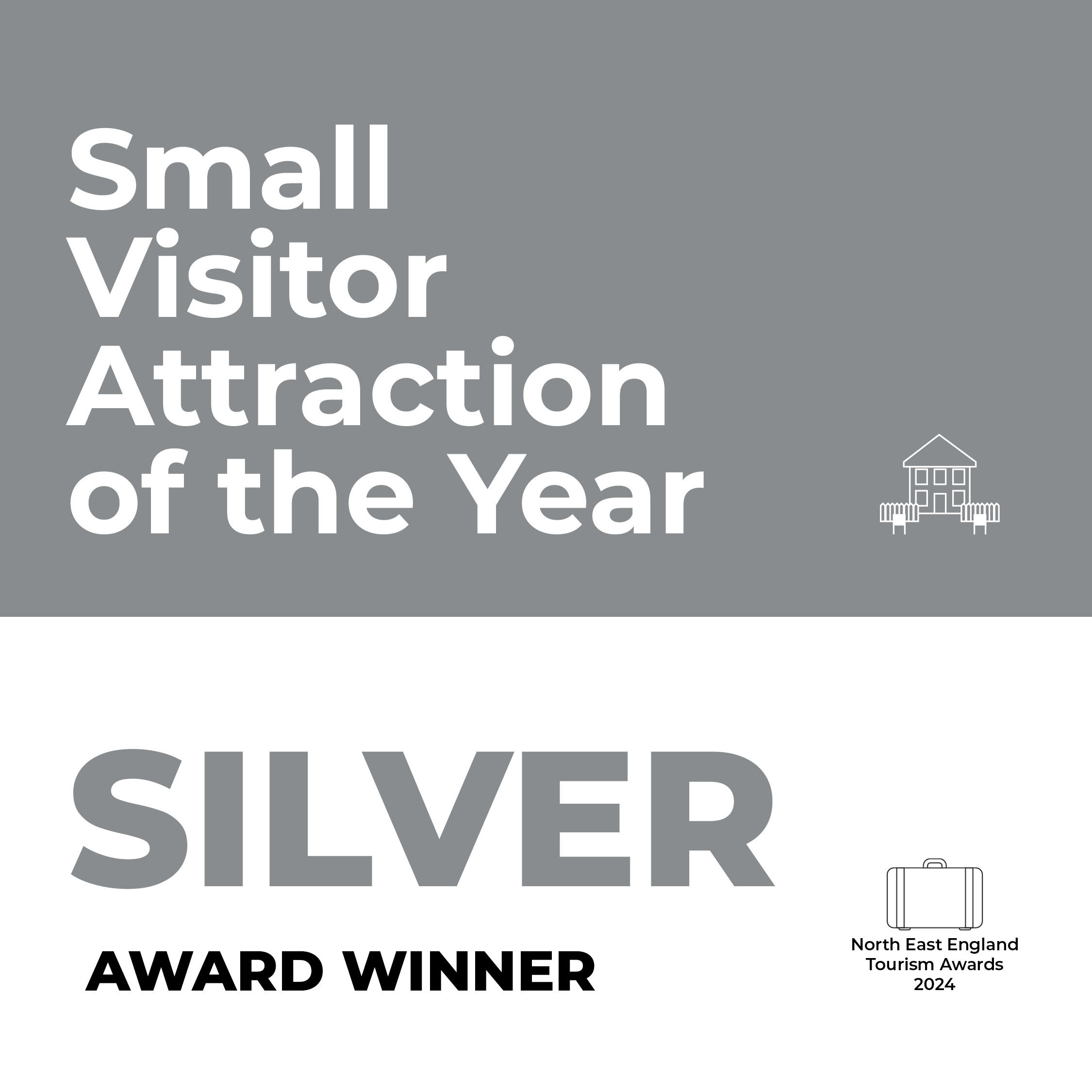- You are here:
-
Home

-
News

- Latest News
Lots of exciting things are happening at Kielder Observatory, use this page to browse the latest stories. We’ll have updates on the events we run, fantastic images our team have taken up at the observatory and occasionally science updates that our team would like to share!
We also release quarterly newsletters via email, sign up to our mailing list and view our archive of past newsletters here:

What's Up December 2025
The long winter nights are here, and while most people head indoors, stargazers know this is the best time to look up. December brings some of the brightest treats of the year, from the Geminid meteor shower to the return of Orion, shimmering planets, and even a Cold Supermoon.
There’s plenty to unwrap in the night sky this festive season…
Image credit: Sky & Telescope
Read Time
3 minutes
The long winter nights are here, and while most people head indoors, stargazers know this is the best time to look up. December brings some of the brightest treats of the year, from the Geminid meteor shower to the return of Orion, shimmering planets, and even a Cold Supermoon.
There’s plenty to unwrap in the night sky this festive season…
Image credit: Sky & Telescope
[fulltext] =>
The long dark winter nights are closing in and while some may recoil indoors, star gazers rejoice as this brings more opportunities to connect with the night sky. There’s plenty to see on the run up to Christmas with many gifts from the universe on display. Let’s take a look at what to expect this festive season.
Meteor Showers
For an early Christmas treat the Geminid meteor shower peaks on December 13th-14th and is considered one of the best meteor showers of the year due to their high frequency coupled with dark winter skies. This shower occurs when Earth intersects the dust cloud left by the asteroid 3200 Phaethon and, unlike most other meteor showers, this event originates from an asteroid rather than a comet. Observers can expect to see up to 120 meteors per hour appearing to radiate from the constellation Gemini.

Image Credit: Sky and Telescope
Constellation spotlight: Orion

Image Credit: Sky and Telescope
The constellation of Orion is a spectacular sight at this time of year, a classic and prominent set of stars visible during winter in the northern hemisphere. Named after a hunter in ancient Greek mythology, it’s reappearance at this time reminds us the long nights are closing in while the skies come alive.
Planets
Visible to the naked eye and amazing in appearance through a small telescope, or even binoculars, are the gas giants Jupiter and Saturn (positions in the sky during a mid-December evening shown below).

Screenshot: Stellarium
Moon
On December 4th we have a ‘Cold Supermoon’ which will appear larger and brighter than usual due to its proximity to Earth. The description of ‘cold’ refers to a full moon occurring at the coldest time of the year, typically in December. This marks the last supermoon until November 2026.

Image credit: Space.com
International Space Station
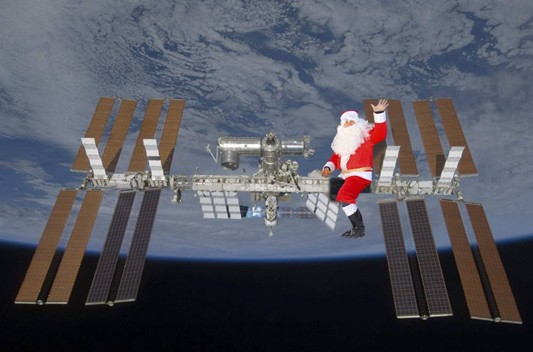
Image credit: Space.com
If you look skyward beginning in the west and moving south low on the horizon commencing 17.22pm December 4th you will be treated with a glimpse of the International Space Station, aka Santa, delivering the latest astronomical goodies we’ve all been waiting for!
We wish you a Merry Christmas, a Happy New Year and very clear skies!
[checked_out] => 0 [checked_out_time] => 0000-00-00 00:00:00 [catid] => 34 [created] => 2025-11-27 12:56:22 [created_by] => 72927 [created_by_alias] => [modified] => 2025-11-27 12:56:22 [modified_by] => 0 [modified_by_name] => [publish_up] => 2025-11-27 12:56:22 [publish_down] => 0000-00-00 00:00:00 [images] => {"image_intro":"images\/WUD1.jpg","float_intro":"","image_intro_alt":"","image_intro_caption":"","image_fulltext":"","float_fulltext":"","image_fulltext_alt":"","image_fulltext_caption":""} [urls] => {"urla":false,"urlatext":"","targeta":"","urlb":false,"urlbtext":"","targetb":"","urlc":false,"urlctext":"","targetc":""} [attribs] => {"show_title":"","link_titles":"","show_tags":"","show_intro":"","info_block_position":"","info_block_show_title":"","show_category":"","link_category":"","show_parent_category":"","link_parent_category":"","show_author":"","link_author":"","show_create_date":"","show_modify_date":"","show_publish_date":"","show_item_navigation":"","show_icons":"","show_print_icon":"","show_email_icon":"","show_vote":"","show_hits":"","show_noauth":"","urls_position":"","alternative_readmore":"","article_layout":"","show_publishing_options":"","show_article_options":"","show_urls_images_backend":"","show_urls_images_frontend":""} [metadata] => {"robots":"","author":"","rights":"","xreference":""} [metakey] => [metadesc] => [access] => 1 [hits] => 575 [xreference] => [featured] => 0 [language] => * [readmore] => 3629 [state] => 1 [category_title] => Latest News [category_route] => uncategorised/latest-news [category_access] => 1 [category_alias] => latest-news [author] => Lindsey Brown [author_email] => lindsey@kielderobservatory.org [parent_title] => ROOT [parent_id] => 1 [parent_route] => [parent_alias] => root [rating] => [rating_count] => [published] => 1 [parents_published] => 1 [alternative_readmore] => [layout] => [params] => Joomla\Registry\Registry Object ( [data:protected] => stdClass Object ( [article_layout] => _:default [show_title] => 1 [link_titles] => 0 [show_intro] => 1 [info_block_position] => 0 [info_block_show_title] => 0 [show_category] => 0 [link_category] => 0 [show_parent_category] => 0 [link_parent_category] => 0 [show_author] => 0 [link_author] => 0 [show_create_date] => 0 [show_modify_date] => 0 [show_publish_date] => 0 [show_item_navigation] => 0 [show_vote] => 0 [show_readmore] => 1 [show_readmore_title] => 0 [readmore_limit] => 100 [show_tags] => 0 [show_icons] => 0 [show_print_icon] => 0 [show_email_icon] => 0 [show_hits] => 0 [show_noauth] => 0 [urls_position] => 0 [show_publishing_options] => 1 [show_article_options] => 1 [save_history] => 1 [history_limit] => 10 [show_urls_images_frontend] => 0 [show_urls_images_backend] => 1 [targeta] => 0 [targetb] => 0 [targetc] => 0 [float_intro] => right [float_fulltext] => none [category_layout] => _:blog [show_category_heading_title_text] => 1 [show_category_title] => 0 [show_description] => 1 [show_description_image] => 0 [maxLevel] => 1 [show_empty_categories] => 0 [show_no_articles] => 1 [show_subcat_desc] => 1 [show_cat_num_articles] => 0 [show_cat_tags] => 1 [show_base_description] => 1 [maxLevelcat] => -1 [show_empty_categories_cat] => 0 [show_subcat_desc_cat] => 1 [show_cat_num_articles_cat] => 1 [num_leading_articles] => 0 [num_intro_articles] => 27 [num_columns] => 1 [num_links] => 4 [multi_column_order] => 0 [show_subcategory_content] => 0 [show_pagination_limit] => 1 [filter_field] => hide [show_headings] => 1 [list_show_date] => 0 [date_format] => [list_show_hits] => 1 [list_show_author] => 1 [orderby_pri] => order [orderby_sec] => rdate [order_date] => published [show_pagination] => 1 [show_pagination_results] => 1 [show_featured] => show [show_feed_link] => 1 [feed_summary] => 0 [feed_show_readmore] => 0 [show_page_heading] => 0 [layout_type] => blog [menu_text] => 1 [menu_show] => 0 [secure] => 0 [page_title] => Latest News [page_description] => Kielder Observatory Astronomical Society [page_rights] => [robots] => [access-view] => 1 ) [separator] => . ) [displayDate] => 2025-11-27 12:56:22 [slug] => 484:what-s-up-december-2026 [parent_slug] => [catslug] => 34:latest-news [event] => stdClass Object ( [afterDisplayTitle] => [beforeDisplayContent] => [afterDisplayContent] => ) [text] =>
The long winter nights are here, and while most people head indoors, stargazers know this is the best time to look up. December brings some of the brightest treats of the year, from the Geminid meteor shower to the return of Orion, shimmering planets, and even a Cold Supermoon.
There’s plenty to unwrap in the night sky this festive season…
Image credit: Sky & Telescope
)
What's Up? November 2025
Stargazing season is here! With longer nights and clear skies, November brings the Leonid meteor shower (peaking 17–18 November) and stunning views of Jupiter, Saturn, and even distant Uranus and Neptune.
Discover the best times to look up, moon phase dates, and what else to spot in this month’s night sky by reading our monthly What's Up? Guide.
Read Time
3 minutes
Stargazing season is here! With longer nights and clear skies, November brings the Leonid meteor shower (peaking 17–18 November) and stunning views of Jupiter, Saturn, and even distant Uranus and Neptune.
Discover the best times to look up, moon phase dates, and what else to spot in this month’s night sky by reading our monthly What's Up? Guide.
[fulltext] =>
It’s truly stargazing season, the clocks have gone back and now you can star gaze all evening and still go to sleep at a decent time! Let’s have a look at what to expect this month:
Meteor showers
Leonid’s peak 17th-18th November
This meteor shower was historically one of the most spectacular to grace our skies in 1883. Well Americas skies. Europe was not in line of sight for the shooting star show. Depictions of it give the idea of a sparkling rain storm. However now a days we get maybe 10-15 per hour. A roar turned to a whimper. Meteor showers, as is shooting stars scientific name, are caused Earth orbiting into trails of debris left by Comet tails. Comets are these huge dirty snowballs, made of dirt and ice that orbit round our solar system. Sometimes they take decades, sometime millennia to complete one orbit, all the while leaving a tail of leftovers as they go. If there is a large deposit of even sand size particles, those can cause bright flashes of light when they are attracted to Earth and hit our atmosphere. Back in 1883 there must have been a huge deposit from what we now know was Comet Tempel-Tuttle.
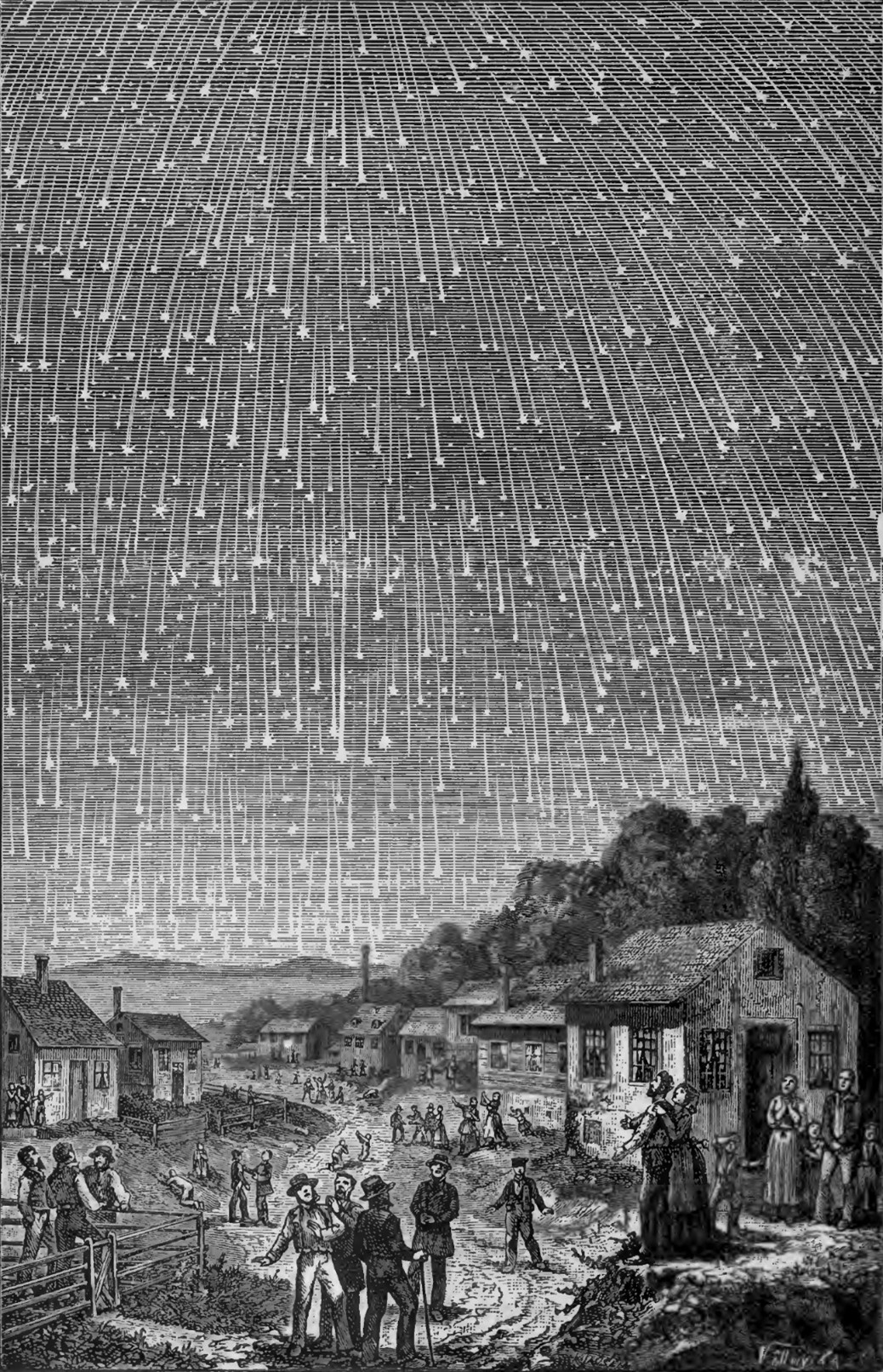
Fig 1: A depiction of the Leonids over America in 1883. Drawing published in 1888 based on eye witness accounts.
Planets

Figure 2. Screenshot taken from Stellarium of evening sky in mid-November, showing planet positions.
Saturn and Jupiter are both of great visibility throughout the month, Saturn rising first, bold in the mid to low southern sky most of the night and Jupiter following. If you can spot Orion you can use his shoulders as a good indicator towards the bright Gas Giants to the east and west. Uranus, whilst never visible to the naked eye, is right next to the Pleiades Cluster (also known as the seven sisters) so get those binoculars and telescopes out and see if you can catch it! It should look like a small blue dot underneath the cluster. Not as sparkly as the stars, but a solid iridescent dot. An extra addition: Neptune is hidden in that picture but is also hiding in the sky, just above and east of Saturn. Again a small blue dot compared to the whiter stars surrounding it. All the gas giants are available for the tick off stargazing list!
Moon Phases
5th: Full moon
11th: Half moon (Third quarter)
20th: New moon
27th: Half moon (First quarter)
Clears Skies and Happy Star-Gazing!
[checked_out] => 42928 [checked_out_time] => 2025-11-13 19:53:51 [catid] => 34 [created] => 2025-10-29 12:01:12 [created_by] => 72927 [created_by_alias] => [modified] => 2025-11-13 19:53:51 [modified_by] => 42928 [modified_by_name] => Dan Pye [publish_up] => 2025-10-29 12:01:12 [publish_down] => 0000-00-00 00:00:00 [images] => {"image_intro":"images\/WU-NOV-25-Picture2.jpg","float_intro":"","image_intro_alt":"","image_intro_caption":"","image_fulltext":"","float_fulltext":"","image_fulltext_alt":"","image_fulltext_caption":""} [urls] => {"urla":false,"urlatext":"","targeta":"","urlb":false,"urlbtext":"","targetb":"","urlc":false,"urlctext":"","targetc":""} [attribs] => {"show_title":"","link_titles":"","show_tags":"","show_intro":"","info_block_position":"","info_block_show_title":"","show_category":"","link_category":"","show_parent_category":"","link_parent_category":"","show_author":"","link_author":"","show_create_date":"","show_modify_date":"","show_publish_date":"","show_item_navigation":"","show_icons":"","show_print_icon":"","show_email_icon":"","show_vote":"","show_hits":"","show_noauth":"","urls_position":"","alternative_readmore":"","article_layout":"","show_publishing_options":"","show_article_options":"","show_urls_images_backend":"","show_urls_images_frontend":""} [metadata] => {"robots":"","author":"","rights":"","xreference":""} [metakey] => [metadesc] => [access] => 1 [hits] => 1233 [xreference] => [featured] => 0 [language] => * [readmore] => 3329 [state] => 1 [category_title] => Latest News [category_route] => uncategorised/latest-news [category_access] => 1 [category_alias] => latest-news [author] => Lindsey Brown [author_email] => lindsey@kielderobservatory.org [parent_title] => ROOT [parent_id] => 1 [parent_route] => [parent_alias] => root [rating] => [rating_count] => [published] => 1 [parents_published] => 1 [alternative_readmore] => [layout] => [params] => Joomla\Registry\Registry Object ( [data:protected] => stdClass Object ( [article_layout] => _:default [show_title] => 1 [link_titles] => 0 [show_intro] => 1 [info_block_position] => 0 [info_block_show_title] => 0 [show_category] => 0 [link_category] => 0 [show_parent_category] => 0 [link_parent_category] => 0 [show_author] => 0 [link_author] => 0 [show_create_date] => 0 [show_modify_date] => 0 [show_publish_date] => 0 [show_item_navigation] => 0 [show_vote] => 0 [show_readmore] => 1 [show_readmore_title] => 0 [readmore_limit] => 100 [show_tags] => 0 [show_icons] => 0 [show_print_icon] => 0 [show_email_icon] => 0 [show_hits] => 0 [show_noauth] => 0 [urls_position] => 0 [show_publishing_options] => 1 [show_article_options] => 1 [save_history] => 1 [history_limit] => 10 [show_urls_images_frontend] => 0 [show_urls_images_backend] => 1 [targeta] => 0 [targetb] => 0 [targetc] => 0 [float_intro] => right [float_fulltext] => none [category_layout] => _:blog [show_category_heading_title_text] => 1 [show_category_title] => 0 [show_description] => 1 [show_description_image] => 0 [maxLevel] => 1 [show_empty_categories] => 0 [show_no_articles] => 1 [show_subcat_desc] => 1 [show_cat_num_articles] => 0 [show_cat_tags] => 1 [show_base_description] => 1 [maxLevelcat] => -1 [show_empty_categories_cat] => 0 [show_subcat_desc_cat] => 1 [show_cat_num_articles_cat] => 1 [num_leading_articles] => 0 [num_intro_articles] => 27 [num_columns] => 1 [num_links] => 4 [multi_column_order] => 0 [show_subcategory_content] => 0 [show_pagination_limit] => 1 [filter_field] => hide [show_headings] => 1 [list_show_date] => 0 [date_format] => [list_show_hits] => 1 [list_show_author] => 1 [orderby_pri] => order [orderby_sec] => rdate [order_date] => published [show_pagination] => 1 [show_pagination_results] => 1 [show_featured] => show [show_feed_link] => 1 [feed_summary] => 0 [feed_show_readmore] => 0 [show_page_heading] => 0 [layout_type] => blog [menu_text] => 1 [menu_show] => 0 [secure] => 0 [page_title] => Latest News [page_description] => Kielder Observatory Astronomical Society [page_rights] => [robots] => [access-view] => 1 ) [separator] => . ) [displayDate] => 2025-10-29 12:01:12 [slug] => 474:what-s-up-november-2025 [parent_slug] => [catslug] => 34:latest-news [event] => stdClass Object ( [afterDisplayTitle] => [beforeDisplayContent] => [afterDisplayContent] => ) [text] =>
Stargazing season is here! With longer nights and clear skies, November brings the Leonid meteor shower (peaking 17–18 November) and stunning views of Jupiter, Saturn, and even distant Uranus and Neptune.
Discover the best times to look up, moon phase dates, and what else to spot in this month’s night sky by reading our monthly What's Up? Guide.
)
From Dark Skies to London: Kielder Observatory at New Scientist Live 2025
Ever wondered what the Milky Way looks like away from city lights? Kielder Observatory brought the magic of the night sky to London with telescopes, VR experiences, stunning astrophotography, and interactive activities - inspiring thousands to look up, explore, and protect our stars. Discover how we engaged curious minds of all ages and shared the wonder of the cosmos.
Read Time
3 minutes
Ever wondered what the Milky Way looks like away from city lights? Kielder Observatory brought the magic of the night sky to London with telescopes, VR experiences, stunning astrophotography, and interactive activities - inspiring thousands to look up, explore, and protect our stars. Discover how we engaged curious minds of all ages and shared the wonder of the cosmos.
[fulltext] =>
Kielder Observatory Shines at New Scientist Live 2025
Earlier this month, Kielder Observatory took to the stage at New Scientist Live 2025, the UK’s biggest festival of ideas and discovery, and what an incredible weekend it was!

We brought a little piece of Northumberland’s starry skies to London, giving attendees a taste of the wonder that awaits under truly dark skies. Our Dobsonian telescope, equipped with a digital eyepiece, showcased pre-recorded footage captured at our observatory - a mesmerising experience for many visitors who had never looked through a telescope before.
Throughout the weekend, our team enjoyed in-depth discussions with people passionate about the cosmos, sharing knowledge, stories, and inspiration about astronomy and our place in the universe.
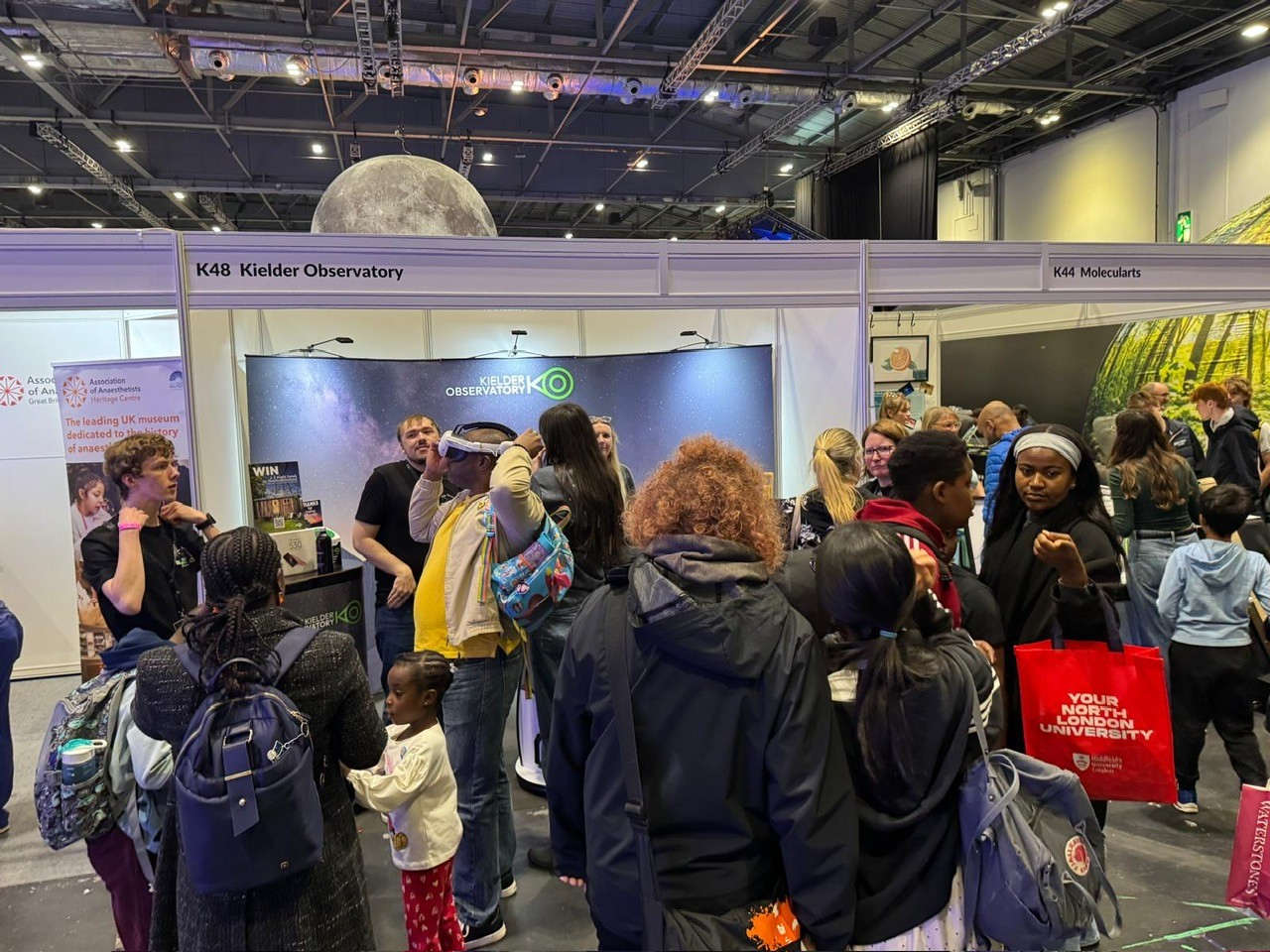
We also gave attendees a glimpse into the future of astrophotography with the cutting-edge Seestar smart telescope, demonstrating how accessible capturing the night sky is becoming. Alongside this, we displayed a stunning collection of images taken from Kielder Observatory, including shots of the Aurora Borealis - which surprised many guests, who were amazed to learn that the northern lights can often be seen right here in the UK!
To highlight the importance of protecting our night skies, we invited visitors to take part in an interactive activity: three large boards featuring our signature image of the Milky Way - but with the stars removed. Guests were asked to “put the stars back in our sky” as a pledge to tackle light pollution. Many were shocked to learn that 99% of Europeans can no longer see the stars in great detail due to excessive artificial lighting.

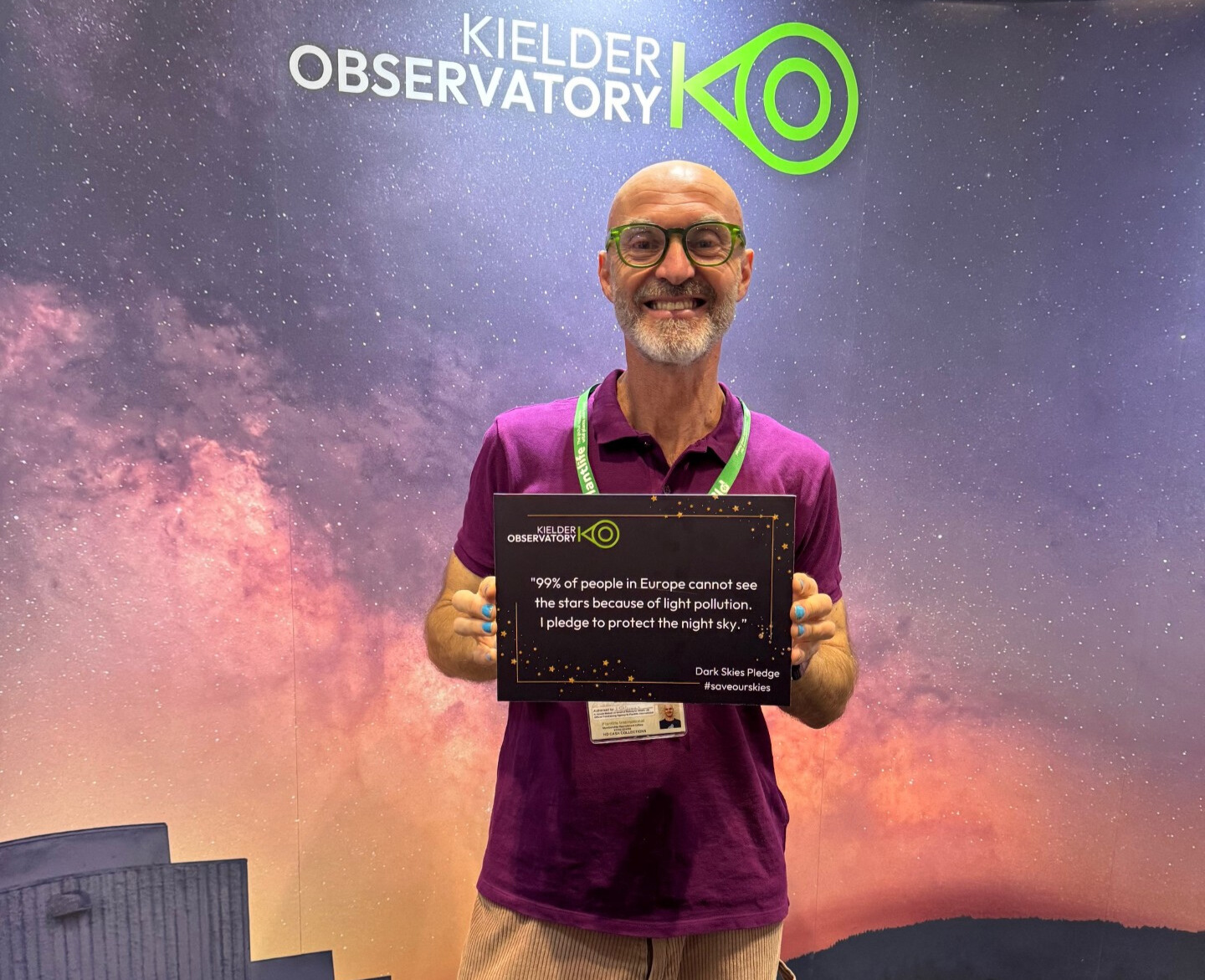
Our VR experience was another big hit, allowing guests to explore what the night sky could look like from London if light pollution disappeared, an inspiring, immersive reminder of what we’re all missing.
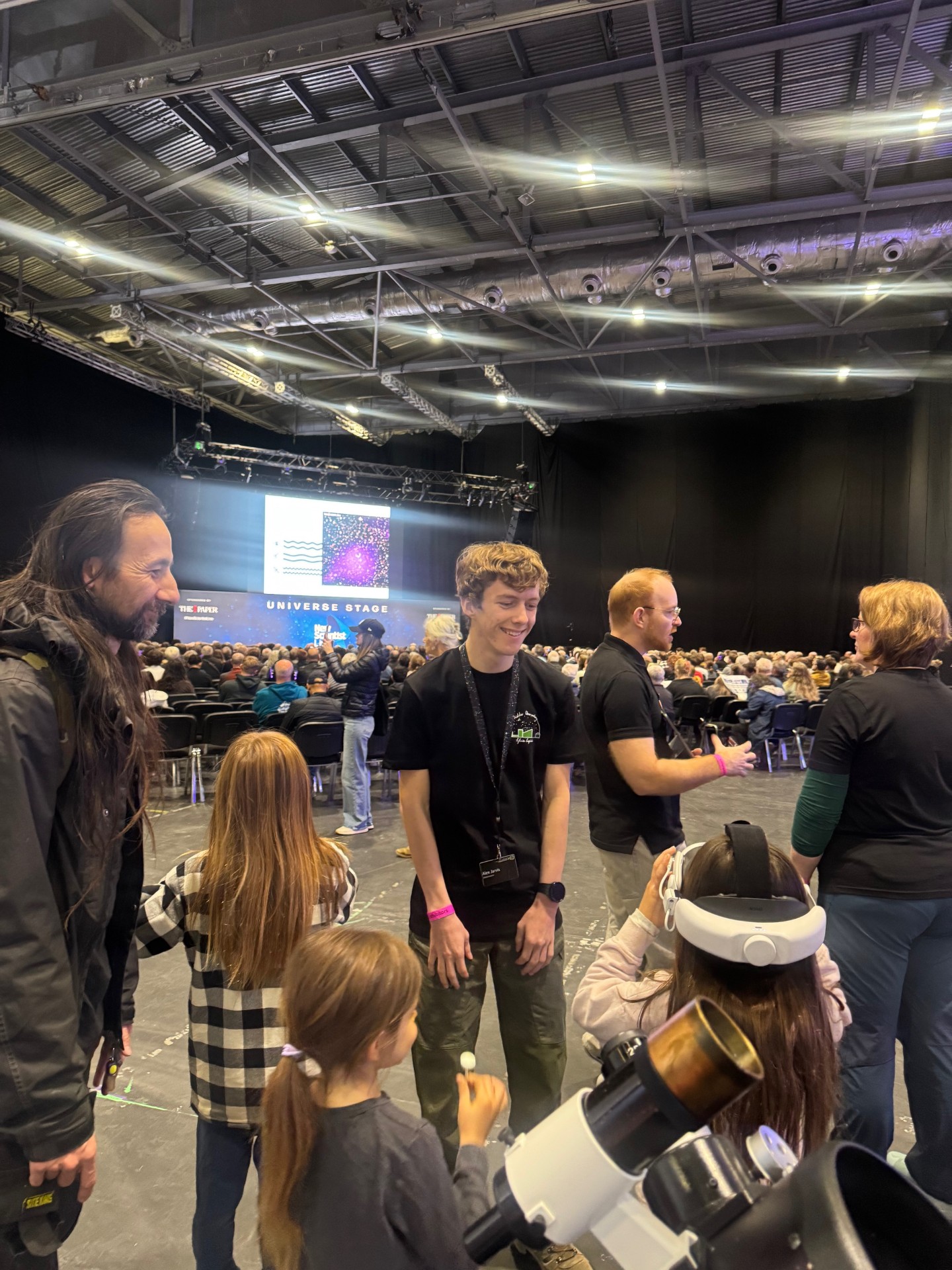
On Schools Day, things got creative with origami star-making and a chance for students to write a question to an astronomer… or even an alien! The results were brilliant - keep an eye out for a future blog where we’ll share some of our favourites.
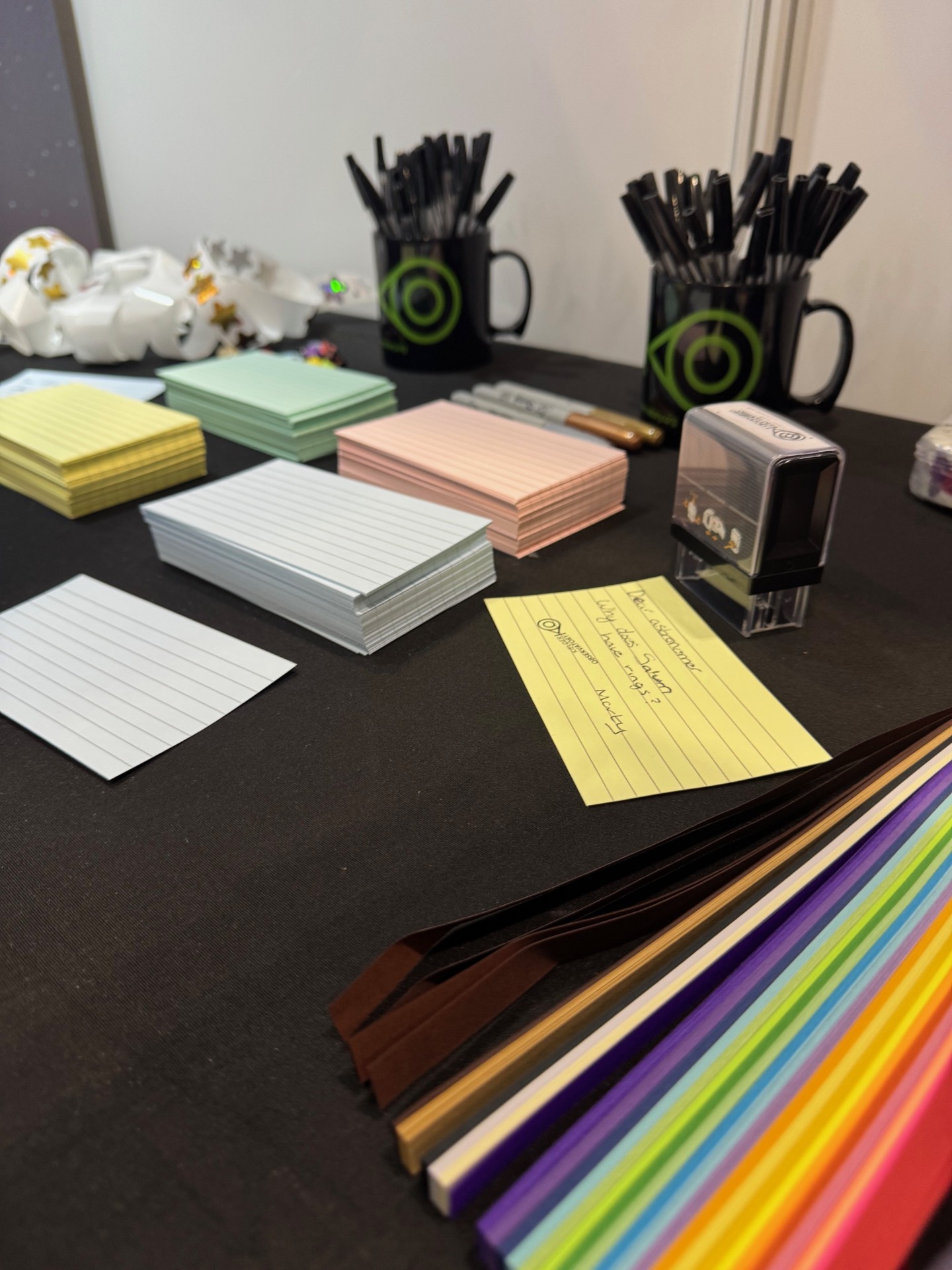

We couldn’t have done it without our fantastic team. Huge thanks to our volunteers who joined Lindsey, our Experience & Communications Coordinator, and Dan, our Director of Astronomy and Science Communication. Jo inspired visitors with her passion for our mission to spark curiosity and wonder in science. Alex guided guests through the constellations in our VR night sky safari, and Finn - a former Kielder astronomer now at the prestigious Greenwich Observatory - shared his expertise on our digital telescope.
Their enthusiasm and dedication truly captured what Kielder Observatory is all about: inspiring people to look up, discover, and protect our night skies.
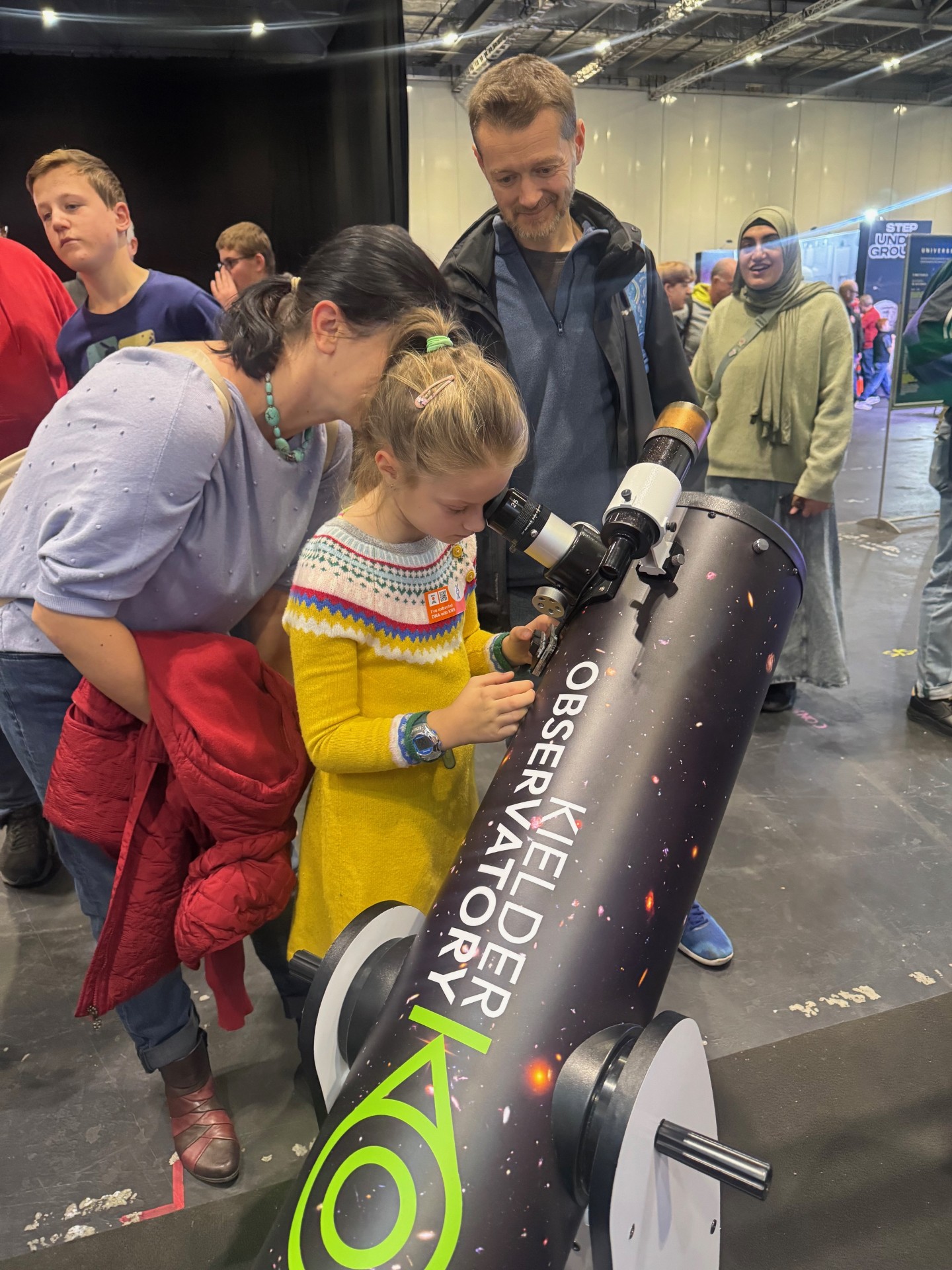
We’re so proud of what we achieved and thrilled to have connected with so many new audiences who may never have experienced dark skies before. Hopefully, we’ve inspired a few more people to look up, and think differently about our universe and our place within it.
We hope to return to New Scientist Live in 2026, bigger, better, and continuing to bring the magic of the Kielder dark skies and astronomy to the public.
Learn more about the event, and maybe we will see you there next year! : live.newscientist.com
[checked_out] => 0 [checked_out_time] => 0000-00-00 00:00:00 [catid] => 34 [created] => 2025-10-24 16:27:33 [created_by] => 72927 [created_by_alias] => [modified] => 2025-10-24 16:31:28 [modified_by] => 72927 [modified_by_name] => Lindsey Brown [publish_up] => 2025-10-24 16:27:33 [publish_down] => 0000-00-00 00:00:00 [images] => {"image_intro":"images\/NSL19.jpg","float_intro":"","image_intro_alt":"","image_intro_caption":"","image_fulltext":"","float_fulltext":"","image_fulltext_alt":"","image_fulltext_caption":""} [urls] => {"urla":false,"urlatext":"","targeta":"","urlb":false,"urlbtext":"","targetb":"","urlc":false,"urlctext":"","targetc":""} [attribs] => {"show_title":"","link_titles":"","show_tags":"","show_intro":"","info_block_position":"","info_block_show_title":"","show_category":"","link_category":"","show_parent_category":"","link_parent_category":"","show_author":"","link_author":"","show_create_date":"","show_modify_date":"","show_publish_date":"","show_item_navigation":"","show_icons":"","show_print_icon":"","show_email_icon":"","show_vote":"","show_hits":"","show_noauth":"","urls_position":"","alternative_readmore":"","article_layout":"","show_publishing_options":"","show_article_options":"","show_urls_images_backend":"","show_urls_images_frontend":""} [metadata] => {"robots":"","author":"","rights":"","xreference":""} [metakey] => [metadesc] => [access] => 1 [hits] => 426 [xreference] => [featured] => 0 [language] => * [readmore] => 4600 [state] => 1 [category_title] => Latest News [category_route] => uncategorised/latest-news [category_access] => 1 [category_alias] => latest-news [author] => Lindsey Brown [author_email] => lindsey@kielderobservatory.org [parent_title] => ROOT [parent_id] => 1 [parent_route] => [parent_alias] => root [rating] => [rating_count] => [published] => 1 [parents_published] => 1 [alternative_readmore] => [layout] => [params] => Joomla\Registry\Registry Object ( [data:protected] => stdClass Object ( [article_layout] => _:default [show_title] => 1 [link_titles] => 0 [show_intro] => 1 [info_block_position] => 0 [info_block_show_title] => 0 [show_category] => 0 [link_category] => 0 [show_parent_category] => 0 [link_parent_category] => 0 [show_author] => 0 [link_author] => 0 [show_create_date] => 0 [show_modify_date] => 0 [show_publish_date] => 0 [show_item_navigation] => 0 [show_vote] => 0 [show_readmore] => 1 [show_readmore_title] => 0 [readmore_limit] => 100 [show_tags] => 0 [show_icons] => 0 [show_print_icon] => 0 [show_email_icon] => 0 [show_hits] => 0 [show_noauth] => 0 [urls_position] => 0 [show_publishing_options] => 1 [show_article_options] => 1 [save_history] => 1 [history_limit] => 10 [show_urls_images_frontend] => 0 [show_urls_images_backend] => 1 [targeta] => 0 [targetb] => 0 [targetc] => 0 [float_intro] => right [float_fulltext] => none [category_layout] => _:blog [show_category_heading_title_text] => 1 [show_category_title] => 0 [show_description] => 1 [show_description_image] => 0 [maxLevel] => 1 [show_empty_categories] => 0 [show_no_articles] => 1 [show_subcat_desc] => 1 [show_cat_num_articles] => 0 [show_cat_tags] => 1 [show_base_description] => 1 [maxLevelcat] => -1 [show_empty_categories_cat] => 0 [show_subcat_desc_cat] => 1 [show_cat_num_articles_cat] => 1 [num_leading_articles] => 0 [num_intro_articles] => 27 [num_columns] => 1 [num_links] => 4 [multi_column_order] => 0 [show_subcategory_content] => 0 [show_pagination_limit] => 1 [filter_field] => hide [show_headings] => 1 [list_show_date] => 0 [date_format] => [list_show_hits] => 1 [list_show_author] => 1 [orderby_pri] => order [orderby_sec] => rdate [order_date] => published [show_pagination] => 1 [show_pagination_results] => 1 [show_featured] => show [show_feed_link] => 1 [feed_summary] => 0 [feed_show_readmore] => 0 [show_page_heading] => 0 [layout_type] => blog [menu_text] => 1 [menu_show] => 0 [secure] => 0 [page_title] => Latest News [page_description] => Kielder Observatory Astronomical Society [page_rights] => [robots] => [access-view] => 1 ) [separator] => . ) [displayDate] => 2025-10-24 16:27:33 [slug] => 473:from-dark-skies-to-london-kielder-observatory-at-new-scientist-live-2025 [parent_slug] => [catslug] => 34:latest-news [event] => stdClass Object ( [afterDisplayTitle] => [beforeDisplayContent] => [afterDisplayContent] => ) [text] =>Ever wondered what the Milky Way looks like away from city lights? Kielder Observatory brought the magic of the night sky to London with telescopes, VR experiences, stunning astrophotography, and interactive activities - inspiring thousands to look up, explore, and protect our stars. Discover how we engaged curious minds of all ages and shared the wonder of the cosmos.
)
AAA The Twilight Zone
From golden sunsets to the deep darkness of astronomical night, Astronomer Rosie reveals what really happens as our world turns from day to night, and why twilight is one of the most fascinating times for skywatchers
Read Time
7 minutes
From golden sunsets to the deep darkness of astronomical night, Astronomer Rosie reveals what really happens as our world turns from day to night, and why twilight is one of the most fascinating times for skywatchers
[fulltext] =>Introduction
Astronomers in the UK start getting very excited at the beginning of autumn because after being away for most of summer, night returns to us.
But what have we determined “night” to be? You might say it’s whenever the Sun sets, or whenever you are asleep to be night. But in astronomy, we have distinct and strict rules for what day, and night is.

[Image: Perpetual Twilight at Earth's Terminator. Taken by astronaut Don Pettit, 01/20/12. Credit: NASA, International Space Station]
Day
Daytime, you can probably guess, is when the Sun is above the horizon. The sky is a brilliant blue, the birds are singing, and you can feel the rays on your face. There’s usually only one object that astronomers look at during the daytime, and that’s the Sun. Many observatories around the world will point their optical, radio or infrared telescopes towards the big ball of gas in the sky.
Then towards the end of the day, the Sun starts to get lower in the sky and head towards that horizon. This is the famous golden hour, the light is soft and red due to the Sun’s light having to penetrate through more atmosphere. It makes a great time for photography.
Then we get to sunset when the sun has just gone over the horizon. At this time we get very dramatic colours of pinks and oranges due to the Earth scattering the Sun’s light.
Twilight
When the Sun has set it doesn’t get dark immediately, there is still some ambient light around. What do we call this period? Twilight.
Astronomers have three distinct stages of twilight: civil twilight (just after sunset), nautical twilight, and astronomical twilight (the darkest of the three).
Let’s go over the three stages of twilight.
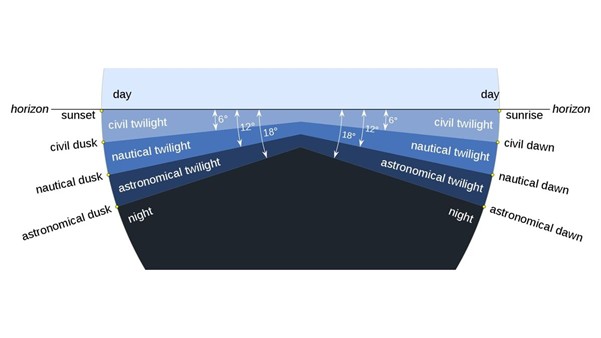
[Image credit: TWCARLSON/WIKIPEDIA/CC BY-SA 3.0]
Civil Twilight
This is the first stage that happens just after sunset. It's when the Sun is between 0 and 6 degrees below the horizon. The sky is still light enough to remain doing activities outside.
You might catch the brightest planets like Venus or Jupiter if they're well-placed in the sky. The Moon, if it's up, will be clearly visible, and sometimes you can spot bright stars like Sirius or Vega starting to peek through.
During these early stages of darkness is also a great time to see earthshine – sunlight that has bounced off the Earth and then back onto the Moon. Earth is actually much more reflective than the Moon (and a lot bigger), and so sometimes we can see that reflected light shining on our nearest neighbour! This only happens during new moon or when we have a thin crescent, because that’s when it’s a “full Earth” from the Moon’s perspective.

[Image. A thin crescent Moon exhibiting Earthshine in Kielder Forest. Credit: Dan Monk]
Nautical Twilight
Named so because this is where it looks like the sea and the sky merge together and it becomes difficult to find the horizon. This is when the Sun is between 6 and 12 degrees below the horizon. The sky will dim and you will be able to spot a few stars, which was important during the days of early navigation, as sailors could use the stars to find directions. We'll see constellations and asterisms begin to take shape - Orion, Cassiopeia, and the Summer Triangle become easier to identify. You’ll also start seeing more planets if they’re above the horizon, and satellites may be visible as they reflect sunlight before plunging into Earth’s shadow.
During nautical twilight in summer, you might also spot noctilucent clouds - ghostly wisps that drift high above the Earth. They’re not typical clouds, but layers of ice crystals floating in the mesosphere, around 85 km above sea level. Because of their extreme altitude, they can still catch sunlight even after the Sun has dipped well below the horizon - usually between 6 and 16 degrees, according to the World Meteorological Organization.
They appear as wispy, silvery streaks against the twilight sky. The further north you are, the better your chances of seeing them—especially if you’ve got a clear view to the northern horizon and the sky is still faintly lit by the Sun below.
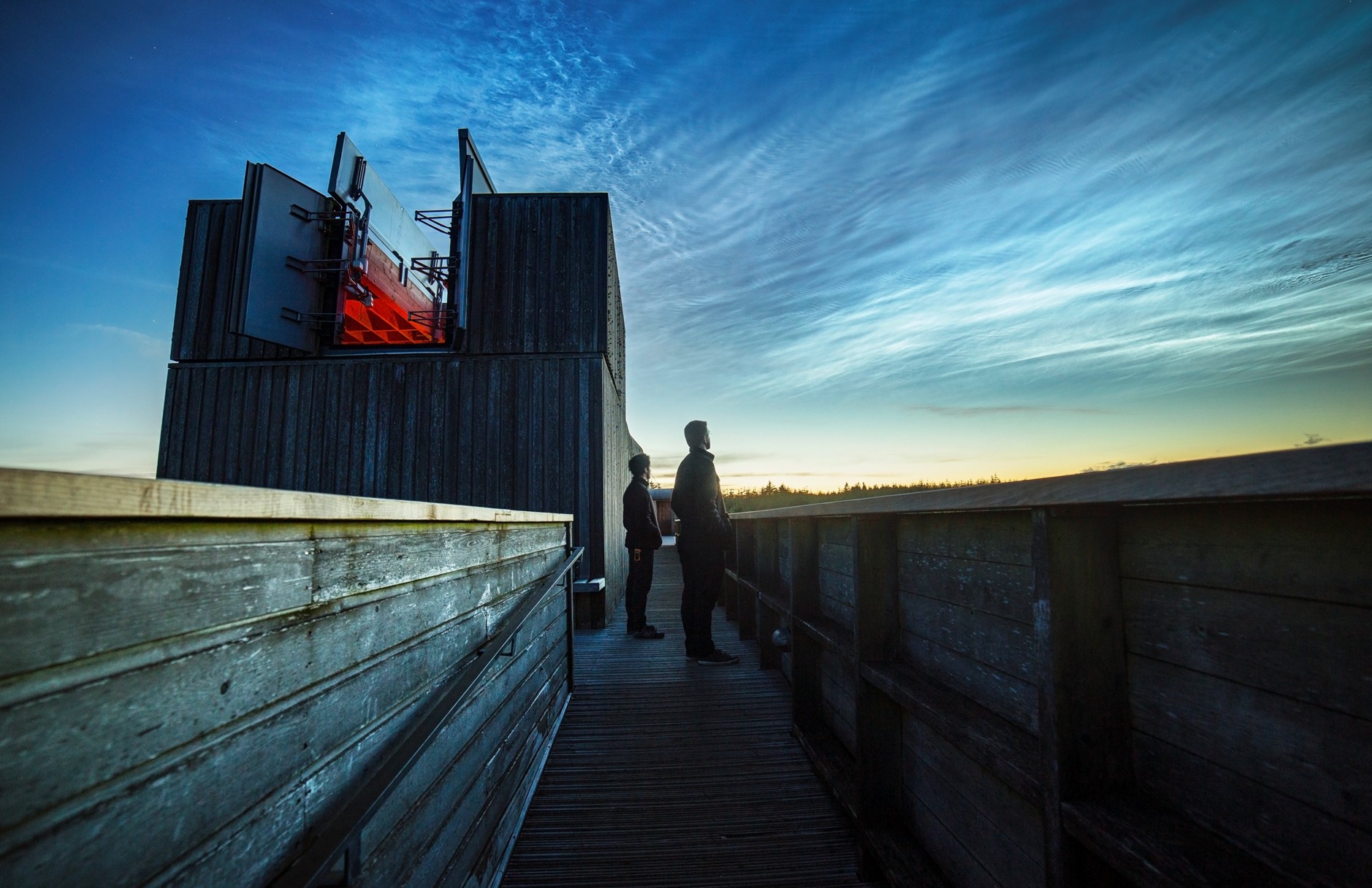
[Image: Noctilucent clouds at Kielder Observatory. Credit: Jesse Beaman]
Astronomical Twilight
This is the darkest of the three, when the Sun is between 12 and 18 degrees below the horizon. There is still a remnant of light from the Sun, however faint stars and a few deep sky objects will start to appear (albeit dimly). This is where we can start to see the Milky Way appearing on a moonless evening.
Galaxies like Andromeda (M31) and nebulae such as the Orion Nebula become visible to the naked eye or with binoculars, depending on sky conditions. Star clusters like the Pleiades or the Hercules Cluster (M13) also start to emerge. For astrophotographers, this is the point where long exposures begin to reveal rich detail in the night sky. Even though the night sky isn’t at its absolute darkest during astronomical twilight, some features—like city skylines, planets near the horizon, and noctilucent clouds—are actually best captured before full darkness sets in.

[Image: Milky Way during the summer months at Kielder Observatory. Credit: Dan Monk]
Night
Astronomers call “night” by another name - astronomical darkness. When astronomical darkness falls, astronomers yell “hoorary” and take out their telescopes again to view objects in the night sky. It’s when the Sun has gone so far below the horizon that there is no more ambient light ie. 18 degrees or more below the horizon. This is when the sky is darkest and clearest to see faint, far away things such as galaxies, nebulae, also our lovely Milky Way.

[Image: Astronomical darkness at Kielder Observatory. The darkest skies occur during this period when the Sun is more than 18 degrees below the horizon.]
When do we get Astronomical Darkness in the UK?
The time when astronomical darkness occurs depends on your location. During the early summer months in the UK, the Sun rests between 8 and 18 degrees below the horizon at night, meaning it never gets truly dark. Instead, all summer long we observe through twilight. In the northern parts of Scotland, they won’t even get astronomical twilight during the month of June.
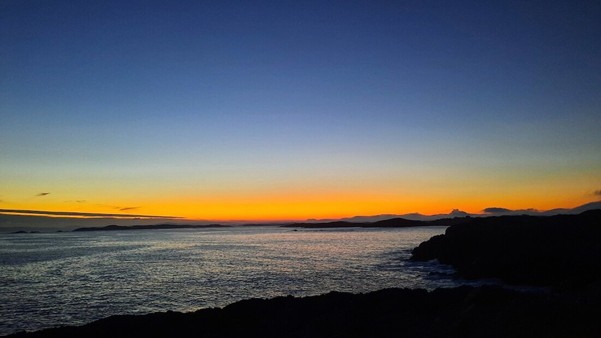
[Image: Simmer Dim on Shetland during midsummer. Where sunset and sunrise merge together. Catherine Munroe]
However, by the time August comes around in England, we start to receive a few minutes of astronomical darkness in the early hours of the morning. By September that extends to 5 or 6 hours. This is why UK astronomers get very happy around autumn as there’ll be plenty of darkness to see very faint objects such as galaxies, nebula, and the pearly Milky Way.

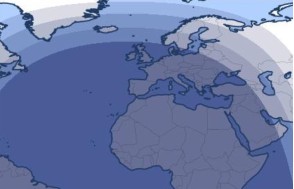
[Image: A comparison between June and August. The darkest shade is astronomical darkness, the lighter shades are twilight. Left: 01:00 on the 21st of June. Right: 01:00 on the 21st of August. Credit: timeanddate.com]
We hope you enjoyed this article all about the twilight zone. See you at the observatory soon!
[checked_out] => 0 [checked_out_time] => 0000-00-00 00:00:00 [catid] => 34 [created] => 2025-10-10 15:53:17 [created_by] => 72927 [created_by_alias] => [modified] => 2025-10-10 15:56:45 [modified_by] => 72927 [modified_by_name] => Lindsey Brown [publish_up] => 2025-10-10 15:56:45 [publish_down] => 0000-00-00 00:00:00 [images] => {"image_intro":"images\/AAA\/AAAIMG1.jpg","float_intro":"","image_intro_alt":"","image_intro_caption":"","image_fulltext":"","float_fulltext":"","image_fulltext_alt":"","image_fulltext_caption":""} [urls] => {"urla":false,"urlatext":"","targeta":"","urlb":false,"urlbtext":"","targetb":"","urlc":false,"urlctext":"","targetc":""} [attribs] => {"show_title":"","link_titles":"","show_tags":"","show_intro":"","info_block_position":"","info_block_show_title":"","show_category":"","link_category":"","show_parent_category":"","link_parent_category":"","show_author":"","link_author":"","show_create_date":"","show_modify_date":"","show_publish_date":"","show_item_navigation":"","show_icons":"","show_print_icon":"","show_email_icon":"","show_vote":"","show_hits":"","show_noauth":"","urls_position":"","alternative_readmore":"","article_layout":"","show_publishing_options":"","show_article_options":"","show_urls_images_backend":"","show_urls_images_frontend":""} [metadata] => {"robots":"","author":"","rights":"","xreference":""} [metakey] => [metadesc] => [access] => 1 [hits] => 553 [xreference] => [featured] => 0 [language] => * [readmore] => 8945 [state] => 1 [category_title] => Latest News [category_route] => uncategorised/latest-news [category_access] => 1 [category_alias] => latest-news [author] => Lindsey Brown [author_email] => lindsey@kielderobservatory.org [parent_title] => ROOT [parent_id] => 1 [parent_route] => [parent_alias] => root [rating] => [rating_count] => [published] => 1 [parents_published] => 1 [alternative_readmore] => [layout] => [params] => Joomla\Registry\Registry Object ( [data:protected] => stdClass Object ( [article_layout] => _:default [show_title] => 1 [link_titles] => 0 [show_intro] => 1 [info_block_position] => 0 [info_block_show_title] => 0 [show_category] => 0 [link_category] => 0 [show_parent_category] => 0 [link_parent_category] => 0 [show_author] => 0 [link_author] => 0 [show_create_date] => 0 [show_modify_date] => 0 [show_publish_date] => 0 [show_item_navigation] => 0 [show_vote] => 0 [show_readmore] => 1 [show_readmore_title] => 0 [readmore_limit] => 100 [show_tags] => 0 [show_icons] => 0 [show_print_icon] => 0 [show_email_icon] => 0 [show_hits] => 0 [show_noauth] => 0 [urls_position] => 0 [show_publishing_options] => 1 [show_article_options] => 1 [save_history] => 1 [history_limit] => 10 [show_urls_images_frontend] => 0 [show_urls_images_backend] => 1 [targeta] => 0 [targetb] => 0 [targetc] => 0 [float_intro] => right [float_fulltext] => none [category_layout] => _:blog [show_category_heading_title_text] => 1 [show_category_title] => 0 [show_description] => 1 [show_description_image] => 0 [maxLevel] => 1 [show_empty_categories] => 0 [show_no_articles] => 1 [show_subcat_desc] => 1 [show_cat_num_articles] => 0 [show_cat_tags] => 1 [show_base_description] => 1 [maxLevelcat] => -1 [show_empty_categories_cat] => 0 [show_subcat_desc_cat] => 1 [show_cat_num_articles_cat] => 1 [num_leading_articles] => 0 [num_intro_articles] => 27 [num_columns] => 1 [num_links] => 4 [multi_column_order] => 0 [show_subcategory_content] => 0 [show_pagination_limit] => 1 [filter_field] => hide [show_headings] => 1 [list_show_date] => 0 [date_format] => [list_show_hits] => 1 [list_show_author] => 1 [orderby_pri] => order [orderby_sec] => rdate [order_date] => published [show_pagination] => 1 [show_pagination_results] => 1 [show_featured] => show [show_feed_link] => 1 [feed_summary] => 0 [feed_show_readmore] => 0 [show_page_heading] => 0 [layout_type] => blog [menu_text] => 1 [menu_show] => 0 [secure] => 0 [page_title] => Latest News [page_description] => Kielder Observatory Astronomical Society [page_rights] => [robots] => [access-view] => 1 ) [separator] => . ) [displayDate] => 2025-10-10 15:53:17 [slug] => 472:aaa-the-twilight-zone [parent_slug] => [catslug] => 34:latest-news [event] => stdClass Object ( [afterDisplayTitle] => [beforeDisplayContent] => [afterDisplayContent] => ) [text] =>
From golden sunsets to the deep darkness of astronomical night, Astronomer Rosie reveals what really happens as our world turns from day to night, and why twilight is one of the most fascinating times for skywatchers
)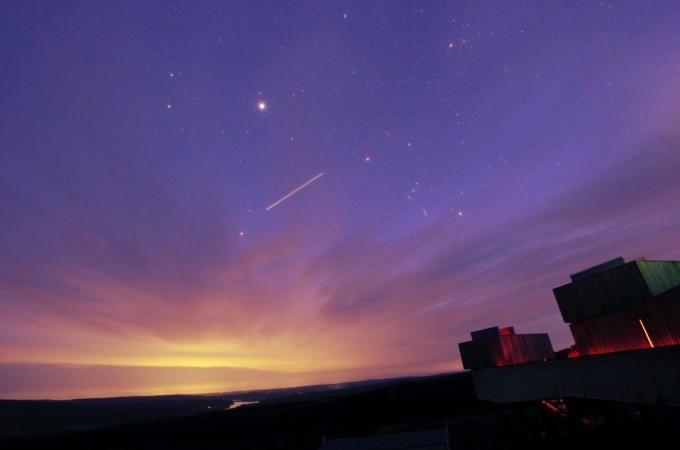
World Space Week - The Future of Space Travel & Living in Space
This World Space Week, discover what it’s really like to live beyond Earth. From sleeping and eating aboard the International Space Station to the challenges of surviving on the Moon and Mars, humans are learning how to live and work in space. Explore how astronauts adapt to life in space, the experiments that help us survive off-world, and what the next steps in lunar and Martian exploration could mean for the future of humanity.
Read Time
7 minutes
This World Space Week, discover what it’s really like to live beyond Earth. From sleeping and eating aboard the International Space Station to the challenges of surviving on the Moon and Mars, humans are learning how to live and work in space. Explore how astronauts adapt to life in space, the experiments that help us survive off-world, and what the next steps in lunar and Martian exploration could mean for the future of humanity.
[fulltext] =>The Future of Space Travel: Where Curiosity Takes Us Next
For as long as we’ve looked up at the stars, we’ve imagined what it might be like to travel among them. At Kielder Observatory, that same curiosity drives everything we do - exploring, learning, and wondering about our place in the universe. And now, as technology takes bold new steps, the dream of venturing deeper into space is closer than ever before.
Living and Working in Space
Above our heads, about 250 miles up, the International Space Station (ISS) has become our home in orbit. A unique laboratory where astronauts from around the world live, sleep, eat, and work while circling Earth every 90 minutes. It might sound glamorous, but life in space is far from easy. Being in constant freefall, and floating around all the time, means simple tasks like brushing your teeth, eating a meal, or getting a good night’s sleep require practice and patience.
The ISS is more than a home; it’s a scientific laboratory where thousands of experiments are carried out in microgravity. These studies help us understand how the human body changes in space, how muscles weaken, bones lose density, and how our minds adapt to isolation and confined living. The lessons learned here are essential for our next big steps: living on the Moon and eventually Mars.

This image of the International Space Station (ISS) was photographed by one of the crewmembers of the STS-105 mission from the Shuttle Orbiter Discovery after separating from the ISS. Image: NASA
The Challenges of Living Beyond Earth
Surviving away from Earth is a huge challenge. The Moon has no breathable atmosphere and experiences extreme temperature swings, scorching hot in sunlight and freezing cold in darkness. Mars, still with some significant temperature swings, just not as extreme as the Moon, has a thin atmosphere made mostly of carbon dioxide, and dust storms that can last for months.
Astronauts will need habitats that can shield them from radiation, generate power, recycle air and water, and grow food in conditions unlike anything on Earth. Scientists are already testing 3D-printed lunar bases, space-grown plants, and robotic support systems that could one day make long-term living on other worlds possible.
Even something as simple as a meal will change. Future explorers might eat fresh vegetables grown under artificial light or rely on carefully designed nutrient packs. Sleep cycles will also be different, with long days and nights that can last weeks or months depending on where they are in the solar system.
Despite these difficulties, each challenge brings innovation. Learning how to live off-world helps us design new technologies that make life better here on Earth, from clean energy systems to medical advances and sustainable living practices.
Back to the Moon, and on to Mars
NASA’s Artemis programme is preparing to return humans to the Moon for the first time in over 50 years, not just to visit, but to stay. The next few years promise to be some of the most exciting in space exploration for a generation.
Artemis II, planned for launch soon, will carry astronauts beyond Earth’s orbit and around the Moon, marking the first time humans have left Earth orbit since 1972. The following mission, Artemis III, aims to return astronauts to the lunar surface for the first time in over half a century. While earlier plans highlighted the goal of landing the first woman and the first person of colour on the Moon, NASA has since updated its public language in line with recent U.S. government policy changes. Regardless of administration, the Artemis programme continues to represent a major step forward in human exploration, paving the way for a sustained presence on and around the Moon, and eventually, the journey to Mars.
These missions are laying the groundwork for a sustainable human presence on and around the Moon. Plans for the Lunar Gateway, a small space station that will orbit the Moon, will allow astronauts to live and work there for longer periods and serve as a launch point for future missions to Mars. Each step brings us closer to becoming a multi-planet species, one small step at a time.
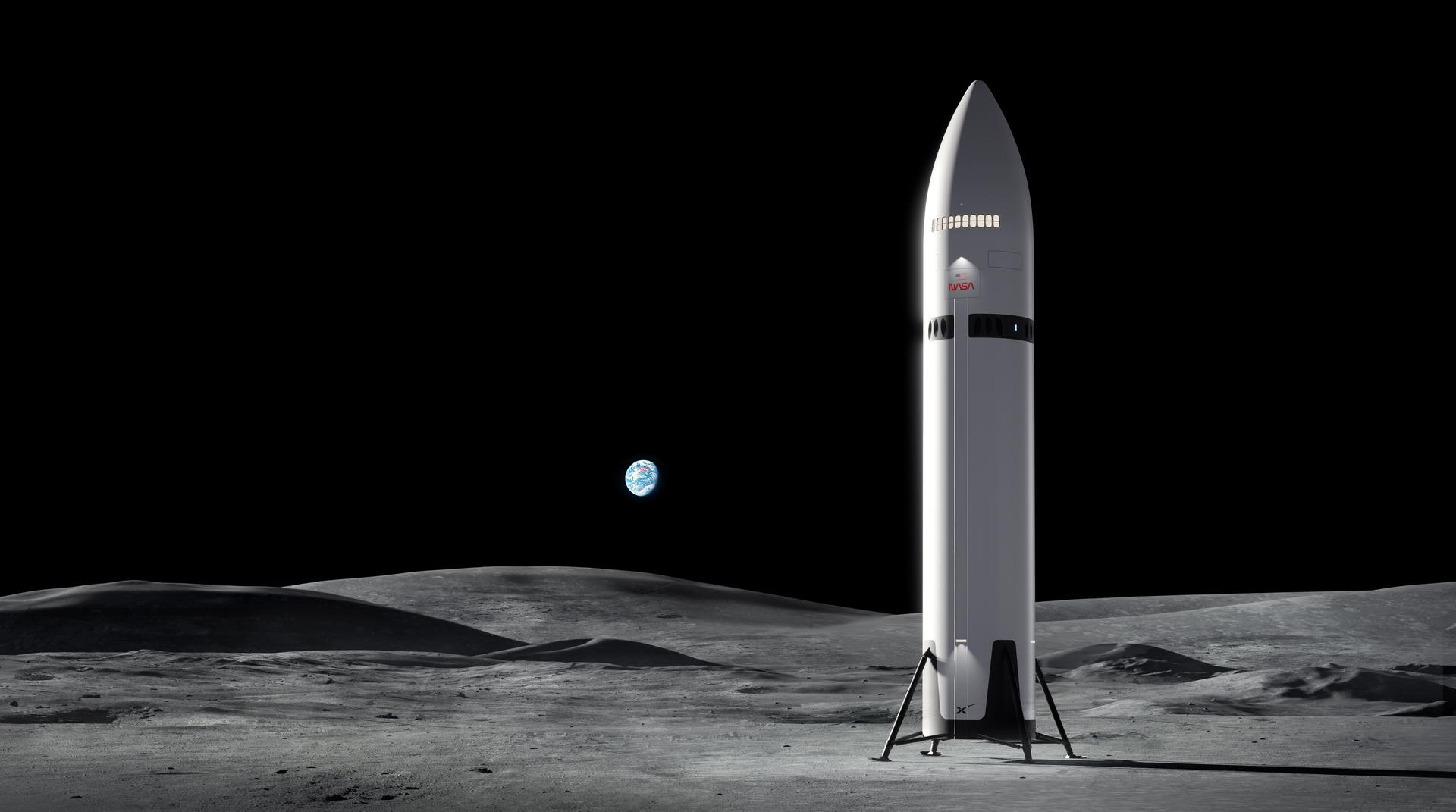
These artist’s concepts show SpaceX’s Starship Human Landing System (HLS) on the Moon. Image: NASA
A Global Effort
Space exploration has become a truly international adventure. The European Space Agency (ESA) is developing its own lunar lander and working closely with NASA on Artemis. India recently made history with its Chandrayaan-3 lunar mission, and Japan, China, and the United Arab Emirates are all sending their own missions to the Moon and Mars. Each nation contributes its own expertise, showing that space exploration thrives when we share knowledge and ambition.

Launch vehicle lifting off from the Second Launch Pad (SLP) of SDSC-SHAR, Sriharikota. Image: Indian Space Research Organisation (GODL-India)
The New Space Race — Private and Public
It’s not just governments reaching for the stars. Companies like SpaceX and Blue Origin are revolutionising how we travel beyond Earth, developing reusable rockets that make spaceflight more sustainable and affordable. These partnerships between private industry and national space agencies are shaping a new era of exploration, one that could soon open the door to commercial flights, tourism, and research in orbit.

NASA astronaut Matthew Dominick, commander of NASA’s SpaceX Crew-8 mission, is suited up to participate in a Crew Equipment Interface Test (CEIT) at Cape Canaveral Space Force Station in Florida on Friday, Jan. 12, 2024. Image: NASA
Why It Matters
Exploring space is about more than discovery, it’s about progress. The technologies developed for space travel often lead to breakthroughs on Earth: medical devices, water purification systems, solar energy, and even the camera sensors in our smartphones all trace their origins to space research. By pushing our boundaries, we push innovation forward.
It’s also a powerful investment in the future. Countries that fund space programmes don’t just explore the cosmos, they fuel their own economies. These projects create hundreds of thousands of jobs and spark industries in engineering, computing, and manufacturing. Studies from 1971 and again in 2016 found that for every dollar the U.S. government invested in space exploration, the return was between $7 and $14, depending on the mission. That’s a remarkable return, and a reminder that when we reach for the stars, we lift up life here on Earth too.
Keeping Wonder Alive
Here on Earth, our journeys into space remind us to look up and stay curious. Every rocket launch, every new discovery, and every shimmering star above Kielder’s dark skies tells part of a much bigger story - one of human imagination, collaboration, and courage.
So next time you visit Kielder Observatory and gaze at the Milky Way stretching above Northumberland, remember: the future of space travel isn’t just about reaching other worlds, it’s about continuing the greatest journey of all, fuelled by curiosity and the human spirit.
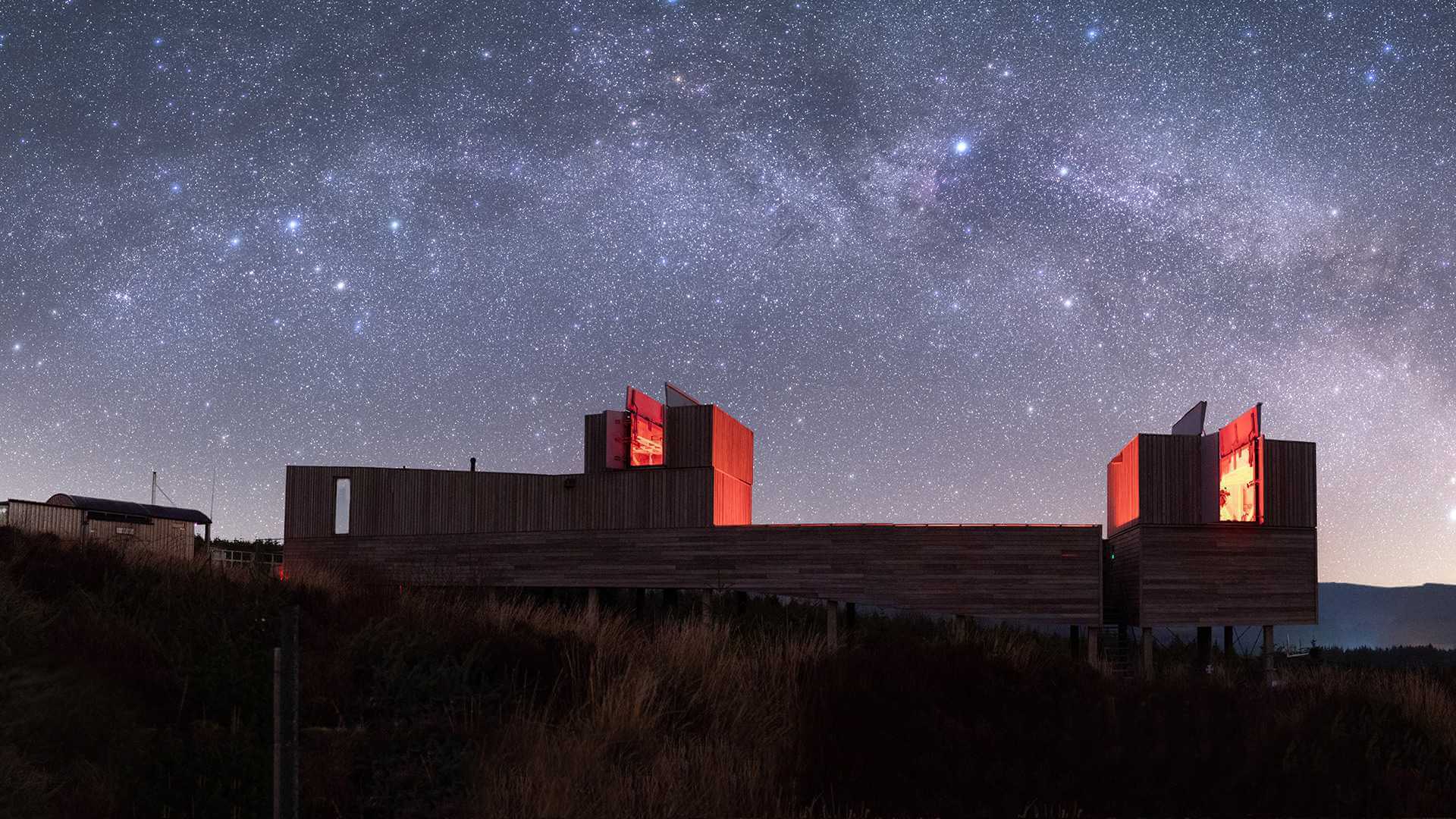
The Milky Way stretching across the dark skies in Kielder. Image: Kielder Observatory
[checked_out] => 0 [checked_out_time] => 0000-00-00 00:00:00 [catid] => 34 [created] => 2025-10-10 15:02:53 [created_by] => 72927 [created_by_alias] => [modified] => 2025-10-10 15:02:53 [modified_by] => 0 [modified_by_name] => [publish_up] => 2025-10-10 15:02:53 [publish_down] => 0000-00-00 00:00:00 [images] => {"image_intro":"images\/ISS-at-obs-680x450.jpg","float_intro":"","image_intro_alt":"","image_intro_caption":"","image_fulltext":"","float_fulltext":"","image_fulltext_alt":"","image_fulltext_caption":""} [urls] => {"urla":false,"urlatext":"","targeta":"","urlb":false,"urlbtext":"","targetb":"","urlc":false,"urlctext":"","targetc":""} [attribs] => {"show_title":"","link_titles":"","show_tags":"","show_intro":"","info_block_position":"","info_block_show_title":"","show_category":"","link_category":"","show_parent_category":"","link_parent_category":"","show_author":"","link_author":"","show_create_date":"","show_modify_date":"","show_publish_date":"","show_item_navigation":"","show_icons":"","show_print_icon":"","show_email_icon":"","show_vote":"","show_hits":"","show_noauth":"","urls_position":"","alternative_readmore":"","article_layout":"","show_publishing_options":"","show_article_options":"","show_urls_images_backend":"","show_urls_images_frontend":""} [metadata] => {"robots":"","author":"","rights":"","xreference":""} [metakey] => [metadesc] => [access] => 1 [hits] => 468 [xreference] => [featured] => 0 [language] => * [readmore] => 8871 [state] => 1 [category_title] => Latest News [category_route] => uncategorised/latest-news [category_access] => 1 [category_alias] => latest-news [author] => Lindsey Brown [author_email] => lindsey@kielderobservatory.org [parent_title] => ROOT [parent_id] => 1 [parent_route] => [parent_alias] => root [rating] => [rating_count] => [published] => 1 [parents_published] => 1 [alternative_readmore] => [layout] => [params] => Joomla\Registry\Registry Object ( [data:protected] => stdClass Object ( [article_layout] => _:default [show_title] => 1 [link_titles] => 0 [show_intro] => 1 [info_block_position] => 0 [info_block_show_title] => 0 [show_category] => 0 [link_category] => 0 [show_parent_category] => 0 [link_parent_category] => 0 [show_author] => 0 [link_author] => 0 [show_create_date] => 0 [show_modify_date] => 0 [show_publish_date] => 0 [show_item_navigation] => 0 [show_vote] => 0 [show_readmore] => 1 [show_readmore_title] => 0 [readmore_limit] => 100 [show_tags] => 0 [show_icons] => 0 [show_print_icon] => 0 [show_email_icon] => 0 [show_hits] => 0 [show_noauth] => 0 [urls_position] => 0 [show_publishing_options] => 1 [show_article_options] => 1 [save_history] => 1 [history_limit] => 10 [show_urls_images_frontend] => 0 [show_urls_images_backend] => 1 [targeta] => 0 [targetb] => 0 [targetc] => 0 [float_intro] => right [float_fulltext] => none [category_layout] => _:blog [show_category_heading_title_text] => 1 [show_category_title] => 0 [show_description] => 1 [show_description_image] => 0 [maxLevel] => 1 [show_empty_categories] => 0 [show_no_articles] => 1 [show_subcat_desc] => 1 [show_cat_num_articles] => 0 [show_cat_tags] => 1 [show_base_description] => 1 [maxLevelcat] => -1 [show_empty_categories_cat] => 0 [show_subcat_desc_cat] => 1 [show_cat_num_articles_cat] => 1 [num_leading_articles] => 0 [num_intro_articles] => 27 [num_columns] => 1 [num_links] => 4 [multi_column_order] => 0 [show_subcategory_content] => 0 [show_pagination_limit] => 1 [filter_field] => hide [show_headings] => 1 [list_show_date] => 0 [date_format] => [list_show_hits] => 1 [list_show_author] => 1 [orderby_pri] => order [orderby_sec] => rdate [order_date] => published [show_pagination] => 1 [show_pagination_results] => 1 [show_featured] => show [show_feed_link] => 1 [feed_summary] => 0 [feed_show_readmore] => 0 [show_page_heading] => 0 [layout_type] => blog [menu_text] => 1 [menu_show] => 0 [secure] => 0 [page_title] => Latest News [page_description] => Kielder Observatory Astronomical Society [page_rights] => [robots] => [access-view] => 1 ) [separator] => . ) [displayDate] => 2025-10-10 15:02:53 [slug] => 471:world-space-week-the-future-of-space-travel-living-in-space [parent_slug] => [catslug] => 34:latest-news [event] => stdClass Object ( [afterDisplayTitle] => [beforeDisplayContent] => [afterDisplayContent] => ) [text] =>
This World Space Week, discover what it’s really like to live beyond Earth. From sleeping and eating aboard the International Space Station to the challenges of surviving on the Moon and Mars, humans are learning how to live and work in space. Explore how astronauts adapt to life in space, the experiments that help us survive off-world, and what the next steps in lunar and Martian exploration could mean for the future of humanity.
)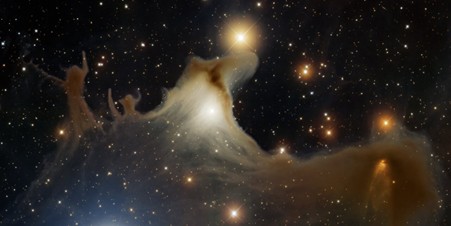
What's Up? October 2025
October skies are full of magic, and we’ve got clear nights lined up for stargazers!
Say goodbye to summer constellations and hello to winter favourites like the Pleiades, Taurus, and Orion, which brings the spectacular Orionid meteor shower later in the month. For telescope users, the Ghost Nebula and the Swimming Alligator Cluster are October highlights. Plus, catch Saturn and Jupiter rising as the nights grow longer.
Read on to plan your perfect night under the stars!
Read Time
5 minutes
October skies are full of magic, and we’ve got clear nights lined up for stargazers!
Say goodbye to summer constellations and hello to winter favourites like the Pleiades, Taurus, and Orion, which brings the spectacular Orionid meteor shower later in the month. For telescope users, the Ghost Nebula and the Swimming Alligator Cluster are October highlights. Plus, catch Saturn and Jupiter rising as the nights grow longer.
Read on to plan your perfect night under the stars!
[fulltext] =>
“Double, double toil and trouble; Fire burn and cauldron bubble.” We’ve been casting all sorts of spells to bring clear skies to October because what a month it is! Hopefully the spells work, in which case you have the following to look forward to-
Constellations
As aware as I am that the sky is always moving and changing, there is something about October that always feels extra transitional. It almost like the sky jumps from Summer to Winter out of nowhere. In the west Arcturus in Boötes will be setting a few hours after the Sun and not far behind are summer favourites like Hercules with his glob, and by the end of the month the Summer Triangle will be firmly in the western quadrant of the sky.
As we wave goodbye to Summer in the west, the eastern sky is looking increasingly wintery. We’ve already spied the Seven Sisters, a.k.a the Pleiades, a few times at the Observatory during late night events in August and September, but by October they are rising at far more sociable hours and should be visible through much of the night. With the Seven Sisters, we of course start to regain Taurus in the sky.
And then, guess who’s back in the house? Orion! At the beginning of October you’ll need to wait until after 1am to see the Hunter up in the sky, but by the end he’ll be around from 11pm. Orion doesn’t come emptyhanded either- the Orionid meteor shower is active from October 2nd to November 7th with the peak falling on the 21st/22nd which is during the New Moon.
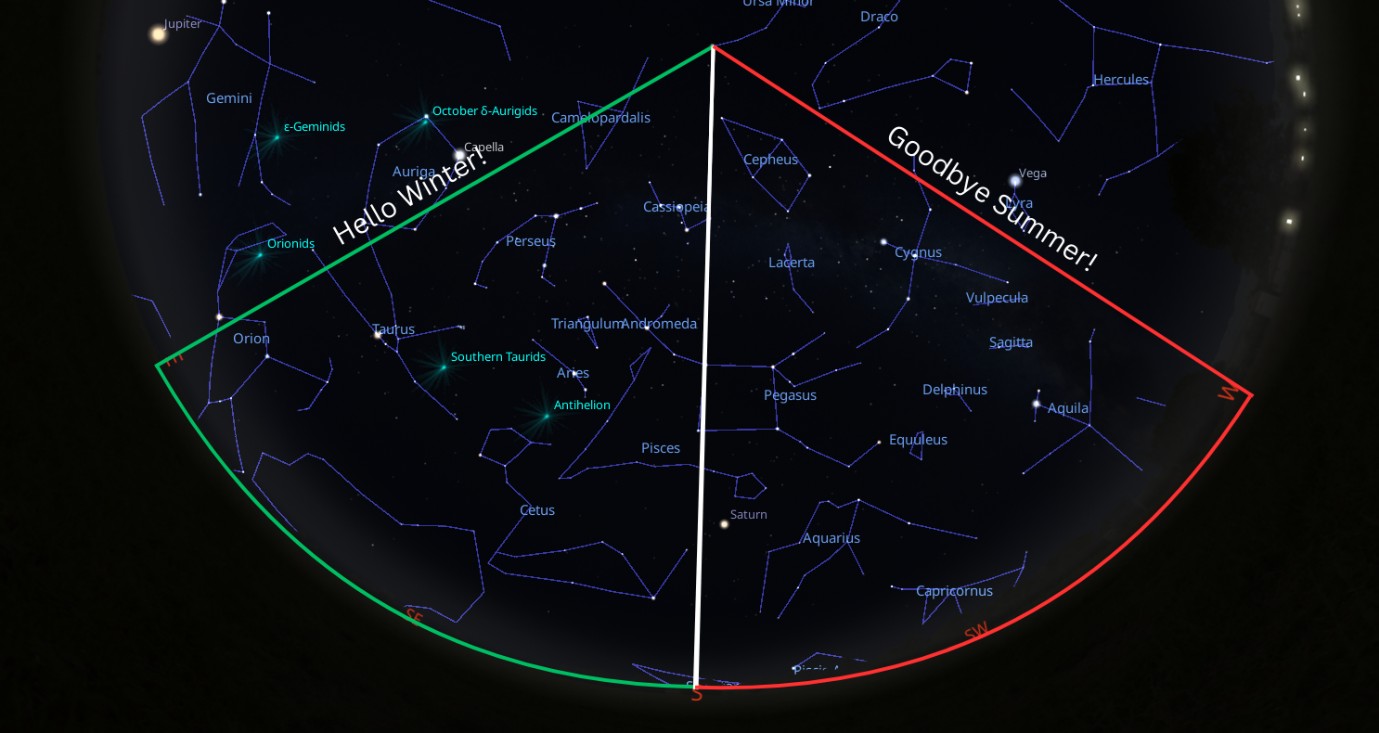
The sky on the 15th October around midnight. The green coloured quadrant on the left shows a typically “winter” sky rising in the East, where the red quadrant on the right shows typical “summer” constellations setting in the west. Credit: Stellarium
Object of the Month
Ghost Nebula (Bonus: Swimming Alligator Cluster).

The Ghost Nebula (Sh 2-136, LDN 1177, VdB 141). Image taken with the Mayall 4 m telescope on Kitt Peak. T.A. Rector, H. Schweiker, NOIRLab/NSF/AURA, 2009
This is one for the astrophotographers really, the Ghost Nebula has a visual brightness of 9.4 mag which will make it faint even through a telescope, but it’s high position and seasonally appropriate name makes it my main pick for the month. However, in light of it’s visual dimness I will take the opportunity to shout out another near-by object for those who only have their eyes and a moderately powerful telescope.
The Ghost Nebula is a reflection nebula in Cepheus which appears to have two ghosts reaching up to escape the interstellar dust. Reflection nebulae are clouds of dust which reflect the light of nearby stars, as opposed to emission nebulae which are themselves ionised to produce light. Another example of a reflection nebula can be found in the Seven Sisters with the Merope Nebula.
For those who lack astrophotography equipment, my bonus object for you is the Swimming Alligator Cluster, also in Cepheus. This open cluster is still rather small, in fact you will find it described in some places as a “poor cluster”, but it’s a great target for those with a telescope. It’s also relatively straightforward to locate.

NGC 7160 - Swimming Alligator Cluster. Credit: Herseycart SeeStar S50
Last month we taught you how to locate Mu Cephei, also known as the Garnet Star, and that is step 1. To find the Swimming Alligator, imagine the bottom line that makes the ‘house’ of Cepheus as a mirror and the Swimming Alligator is the mirror image of Mu Cephei.
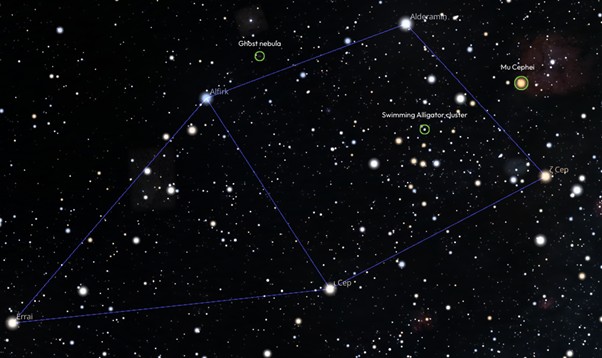 The locations of the Ghost Nebula, Swimming Alligator Cluster, and Mu Cephei in Cepheus. Credit: Stellarium
The locations of the Ghost Nebula, Swimming Alligator Cluster, and Mu Cephei in Cepheus. Credit: Stellarium
The Orionids
As briefly mentioned in the constellations section, in October we see the peak of the Orionids meteor shower. It’s not the only shower going on, the Draconids are active 6-10 October and peak on the 8th but that falls too close to the full moon to expect much activity. The Orionids, by contrast, will peak around the 21/22 which is right around new moon.
The peak rate of the Orionids is 15 per hour making it only moderately active, but it’s association with Halley’s comet makes it special. As Halley’s comet swings into the inner solar system once every 75-76 years it leaves behind a trail of debris which crosses the Earth’s orbital path around the Sun. When the Earth reaches this intersection point the debris enters our atmosphere producing meteors.
The Moon
Full Moon: 7th October
Last Quarter: 13th October
New Moon: 21st October
First Quarter: 29th October
The Planets
Mercury: not visible at night
Venus: rising later each night
Mars: not visible at night
Jupiter: will rise earlier as the month goes on, located in Gemini
Saturn: visible through the night, located in Pisces
[checked_out] => 0 [checked_out_time] => 0000-00-00 00:00:00 [catid] => 34 [created] => 2025-09-26 14:31:25 [created_by] => 72927 [created_by_alias] => [modified] => 2025-09-26 15:40:13 [modified_by] => 72927 [modified_by_name] => Lindsey Brown [publish_up] => 2025-09-26 14:31:25 [publish_down] => 0000-00-00 00:00:00 [images] => {"image_intro":"images\/OCT2502.jpg","float_intro":"","image_intro_alt":"","image_intro_caption":"","image_fulltext":"","float_fulltext":"","image_fulltext_alt":"","image_fulltext_caption":""} [urls] => {"urla":false,"urlatext":"","targeta":"","urlb":false,"urlbtext":"","targetb":"","urlc":false,"urlctext":"","targetc":""} [attribs] => {"show_title":"","link_titles":"","show_tags":"","show_intro":"","info_block_position":"","info_block_show_title":"","show_category":"","link_category":"","show_parent_category":"","link_parent_category":"","show_author":"","link_author":"","show_create_date":"","show_modify_date":"","show_publish_date":"","show_item_navigation":"","show_icons":"","show_print_icon":"","show_email_icon":"","show_vote":"","show_hits":"","show_noauth":"","urls_position":"","alternative_readmore":"","article_layout":"","show_publishing_options":"","show_article_options":"","show_urls_images_backend":"","show_urls_images_frontend":""} [metadata] => {"robots":"","author":"","rights":"","xreference":""} [metakey] => [metadesc] => [access] => 1 [hits] => 1127 [xreference] => [featured] => 0 [language] => * [readmore] => 6132 [state] => 1 [category_title] => Latest News [category_route] => uncategorised/latest-news [category_access] => 1 [category_alias] => latest-news [author] => Lindsey Brown [author_email] => lindsey@kielderobservatory.org [parent_title] => ROOT [parent_id] => 1 [parent_route] => [parent_alias] => root [rating] => [rating_count] => [published] => 1 [parents_published] => 1 [alternative_readmore] => [layout] => [params] => Joomla\Registry\Registry Object ( [data:protected] => stdClass Object ( [article_layout] => _:default [show_title] => 1 [link_titles] => 0 [show_intro] => 1 [info_block_position] => 0 [info_block_show_title] => 0 [show_category] => 0 [link_category] => 0 [show_parent_category] => 0 [link_parent_category] => 0 [show_author] => 0 [link_author] => 0 [show_create_date] => 0 [show_modify_date] => 0 [show_publish_date] => 0 [show_item_navigation] => 0 [show_vote] => 0 [show_readmore] => 1 [show_readmore_title] => 0 [readmore_limit] => 100 [show_tags] => 0 [show_icons] => 0 [show_print_icon] => 0 [show_email_icon] => 0 [show_hits] => 0 [show_noauth] => 0 [urls_position] => 0 [show_publishing_options] => 1 [show_article_options] => 1 [save_history] => 1 [history_limit] => 10 [show_urls_images_frontend] => 0 [show_urls_images_backend] => 1 [targeta] => 0 [targetb] => 0 [targetc] => 0 [float_intro] => right [float_fulltext] => none [category_layout] => _:blog [show_category_heading_title_text] => 1 [show_category_title] => 0 [show_description] => 1 [show_description_image] => 0 [maxLevel] => 1 [show_empty_categories] => 0 [show_no_articles] => 1 [show_subcat_desc] => 1 [show_cat_num_articles] => 0 [show_cat_tags] => 1 [show_base_description] => 1 [maxLevelcat] => -1 [show_empty_categories_cat] => 0 [show_subcat_desc_cat] => 1 [show_cat_num_articles_cat] => 1 [num_leading_articles] => 0 [num_intro_articles] => 27 [num_columns] => 1 [num_links] => 4 [multi_column_order] => 0 [show_subcategory_content] => 0 [show_pagination_limit] => 1 [filter_field] => hide [show_headings] => 1 [list_show_date] => 0 [date_format] => [list_show_hits] => 1 [list_show_author] => 1 [orderby_pri] => order [orderby_sec] => rdate [order_date] => published [show_pagination] => 1 [show_pagination_results] => 1 [show_featured] => show [show_feed_link] => 1 [feed_summary] => 0 [feed_show_readmore] => 0 [show_page_heading] => 0 [layout_type] => blog [menu_text] => 1 [menu_show] => 0 [secure] => 0 [page_title] => Latest News [page_description] => Kielder Observatory Astronomical Society [page_rights] => [robots] => [access-view] => 1 ) [separator] => . ) [displayDate] => 2025-09-26 14:31:25 [slug] => 470:what-s-up-october-2025 [parent_slug] => [catslug] => 34:latest-news [event] => stdClass Object ( [afterDisplayTitle] => [beforeDisplayContent] => [afterDisplayContent] => ) [text] =>
October skies are full of magic, and we’ve got clear nights lined up for stargazers!
Say goodbye to summer constellations and hello to winter favourites like the Pleiades, Taurus, and Orion, which brings the spectacular Orionid meteor shower later in the month. For telescope users, the Ghost Nebula and the Swimming Alligator Cluster are October highlights. Plus, catch Saturn and Jupiter rising as the nights grow longer.
Read on to plan your perfect night under the stars!
)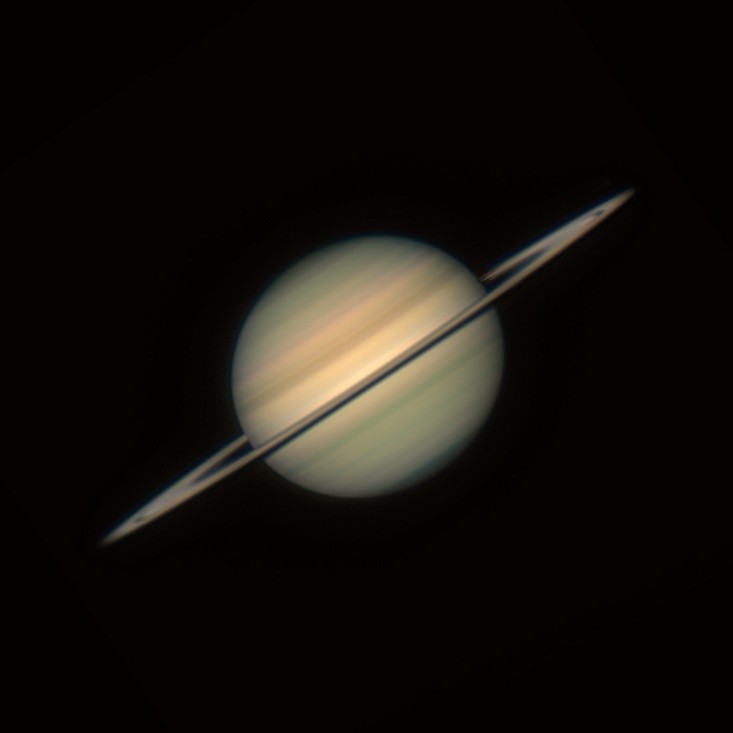
What's Up? September 2025
The nights are drawing in, the skies are darkening, and September is one of the very best times of year to look up! From Glittering summer favourites like the ring nebula to autumns first appearance of the Pleiades, the heavens are alive with wonders! Add saturn at its brightest, the Milky Way stretching overhead, and even the chance of a lunar eclipse - this month promises something special for every stargazer. Read our What's Up guide for September, written by our astronomers, and don't miss a thing!
Read Time
6 minutes
The nights are drawing in, the skies are darkening, and September is one of the very best times of year to look up! From Glittering summer favourites like the ring nebula to autumns first appearance of the Pleiades, the heavens are alive with wonders! Add saturn at its brightest, the Milky Way stretching overhead, and even the chance of a lunar eclipse - this month promises something special for every stargazer. Read our What's Up guide for September, written by our astronomers, and don't miss a thing!
[fulltext] =>Greetings fellow stargazers!
Welcome to the September edition of What's Up!
September in the Northern Hemisphere is arguably one of the best months of the year for observing, making it one of our favourite times of the year. The nights continue to draw in offering us some fantastic views of the best objects. We can also still find objects from the summer skies like M13 (The Great Globular Cluster in Hercules) and M57 (The Ring Nebula).A small apeture telescope would be required to see both these deep sky objects, but what a treat they are! By the end of the month, Taurus will be rising earlier, enabling us to see the gorgeous open cluster that is M45 (The Seven Sisters or Pleiades) marking the onset of autumn and to top it all off, we still have the Milky Way arching overhead too.
Constellations
Pegasus
Rising higher in the East shortly after sunset this month is the constellation of Pegasus. In Greek mythology, Pegasus is a divine, winged, white horse born from the blood of the Gorgon Medusa, when she was beheaded by the hero Perseus. The main characteristic feature of this constellation is the "Great Square of Pegasus", a prominent asterism, or pattern of stars, that appears as a large square in the autumn sky.
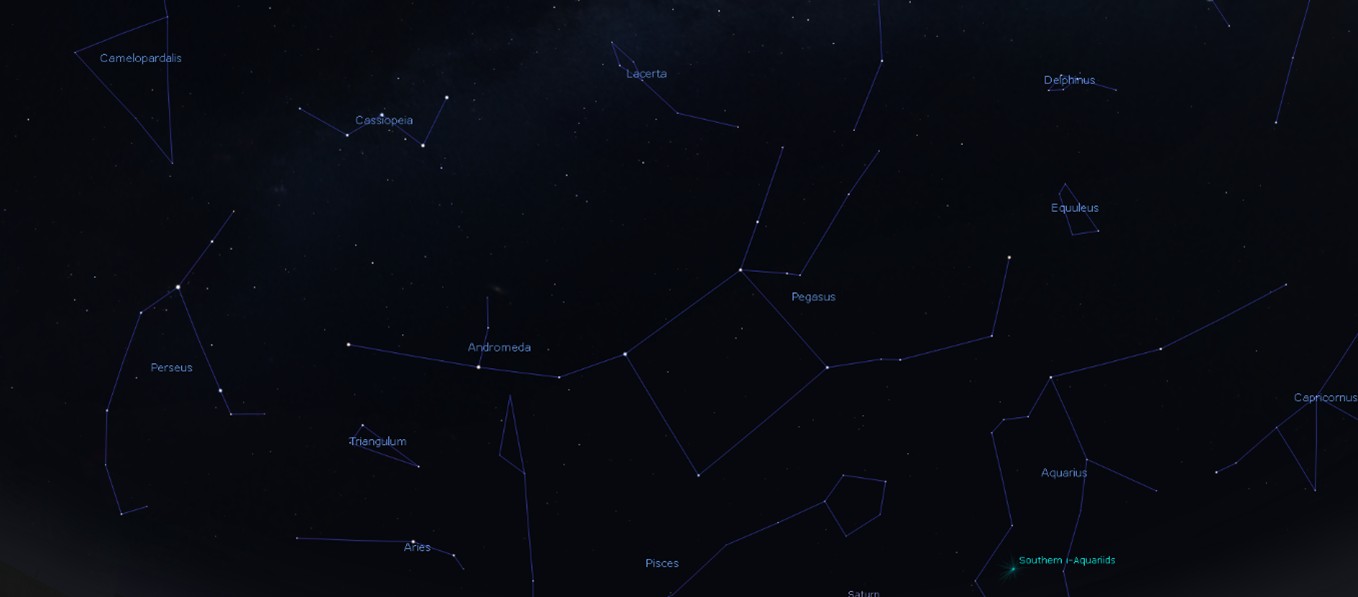
Image showing the location of Pegasus looking east shortly after sunset. Credit: Stellarium
The square is ofter used in dark sky surveys to see how dark the sky is in different areas. People are asked to see how many stars can be seen with the naked eye. From the observatory on a clear, moonless night, we can see up to around 30! Why not try to see how many you see from where you live?
Cephus
High up close to the zenith (the point directly above your head) this month will be the constellation of Cepheus. The constellation looks like a kid's drawing of a house! It's sandwiched between Ursa Major (The Great Bear) and Cassiopeia.
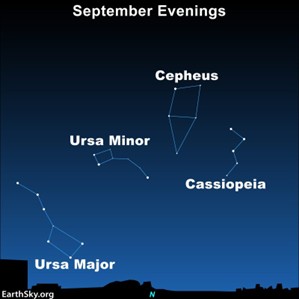
The image shows Cephus along side (or just above) Cassiopeia and where these constellations are in relation to the North star located at the end of the tail in Ursa Minor and the "Plough" or "Big Dipper" which forms part of the constellation Ursa Major. Credit: EarthSky.org
Object of the month: The Garnet star (Mu Cephei)
If you imagine the constellation cephus as a house and then imagine a path leading to where the front door would be, you may be able to observe a small slightly orange looking star. This star is called Mu Cephei but goes by the more common name of the "Garnet" star. This star is unimaginably huge at a whopping 1.7 to 2 billion miles across compared to our Sun's diameter of about 865 thousand miles. This equivalates to about 2840 times the diameter of our Sun. If this star was placed where our sun was in our Solar System, its immense size would extend beyond the orbit of Saturn!

The Garnet star can be located within the constellation of Cephus as seen in this image.The constellations of Cassiopia and Andromeda can also be seen, as can the location of the North star, Polaris. Credit: Stellarium
The star holds the accolade of being one of the most distant stars visible to the unaided eye from anywhere on Earth. It is estimated to be about 6000 light years distant and is only visible due to its immense size. Most stars visible in the night sky tend to only be a few tens or hundreds of light years away.
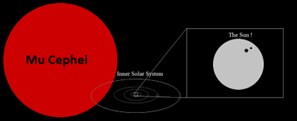
This image shows the scale of how large the Garnet star is compared to our Sun. Credit: Wikimedia
Planets
Saturn will be the highlight planet this month as it reaches opposition (highest point south) on the 21st making September the best month of the year for observing the ringed planet. Even a small telescope would pick up its magnificent rings which are almost edge-on to us this year making them look like a line through the planet. In fact Saturn will be the only planet visible with the naked eye this month, unless you include Jupiter which will be rising in the East around midnight near the very end of the month and will be visible until sunrise when Venus will just becoming visible just before dawn.

Saturns rings are almost edge on to us this year making the rings almost look like a line through the planet. Credit: Sky & Telescope
Uranus will be close to M45 (the Pleiades) and Neptune will be close by to Saturn, but both require a large aperture telescope for observing.
September Moon phases & other notable dates
7th - Full Moon and a lunar eclipse! The lunar eclipse will be happening at around 6pm, but the Moon won't be rising in the UK until around 8pm. It will be rising just as it's coming out of totality, so you will see the Moon partially in a red shadow, it will become more obvious as the sky gets darker.
14th - Last Quarter
21st - New Moon & Saturn at opposition. Saturn will appear at its brightest and most visible of the year, offering a great opportunity for viewing its rings.
23rd - Neptune at Opposition. Neptune will be at its brightest and most visible of the year, though it will still require a good telescope to view.
30th - First Quarter
From late September - Aurora Borealis. The probability of seeing the northern lights starts increasing from this period due to heightened solar activity, but it is always best to check forecasts closer to the time using apps like 'Spaceweather live' on your mobile device.
That's about it for this month, wishing you all clear skies!
[checked_out] => 0 [checked_out_time] => 0000-00-00 00:00:00 [catid] => 34 [created] => 2025-09-04 16:07:04 [created_by] => 72927 [created_by_alias] => [modified] => 2025-09-04 16:13:57 [modified_by] => 72927 [modified_by_name] => Lindsey Brown [publish_up] => 2025-09-04 16:07:04 [publish_down] => 0000-00-00 00:00:00 [images] => {"image_intro":"images\/whatsup\/WUSEPT255.jpg","float_intro":"","image_intro_alt":"","image_intro_caption":"","image_fulltext":"","float_fulltext":"","image_fulltext_alt":"","image_fulltext_caption":""} [urls] => {"urla":false,"urlatext":"","targeta":"","urlb":false,"urlbtext":"","targetb":"","urlc":false,"urlctext":"","targetc":""} [attribs] => {"show_title":"","link_titles":"","show_tags":"","show_intro":"","info_block_position":"","info_block_show_title":"","show_category":"","link_category":"","show_parent_category":"","link_parent_category":"","show_author":"","link_author":"","show_create_date":"","show_modify_date":"","show_publish_date":"","show_item_navigation":"","show_icons":"","show_print_icon":"","show_email_icon":"","show_vote":"","show_hits":"","show_noauth":"","urls_position":"","alternative_readmore":"","article_layout":"","show_publishing_options":"","show_article_options":"","show_urls_images_backend":"","show_urls_images_frontend":""} [metadata] => {"robots":"","author":"","rights":"","xreference":""} [metakey] => [metadesc] => [access] => 1 [hits] => 1592 [xreference] => [featured] => 0 [language] => * [readmore] => 6945 [state] => 1 [category_title] => Latest News [category_route] => uncategorised/latest-news [category_access] => 1 [category_alias] => latest-news [author] => Lindsey Brown [author_email] => lindsey@kielderobservatory.org [parent_title] => ROOT [parent_id] => 1 [parent_route] => [parent_alias] => root [rating] => [rating_count] => [published] => 1 [parents_published] => 1 [alternative_readmore] => [layout] => [params] => Joomla\Registry\Registry Object ( [data:protected] => stdClass Object ( [article_layout] => _:default [show_title] => 1 [link_titles] => 0 [show_intro] => 1 [info_block_position] => 0 [info_block_show_title] => 0 [show_category] => 0 [link_category] => 0 [show_parent_category] => 0 [link_parent_category] => 0 [show_author] => 0 [link_author] => 0 [show_create_date] => 0 [show_modify_date] => 0 [show_publish_date] => 0 [show_item_navigation] => 0 [show_vote] => 0 [show_readmore] => 1 [show_readmore_title] => 0 [readmore_limit] => 100 [show_tags] => 0 [show_icons] => 0 [show_print_icon] => 0 [show_email_icon] => 0 [show_hits] => 0 [show_noauth] => 0 [urls_position] => 0 [show_publishing_options] => 1 [show_article_options] => 1 [save_history] => 1 [history_limit] => 10 [show_urls_images_frontend] => 0 [show_urls_images_backend] => 1 [targeta] => 0 [targetb] => 0 [targetc] => 0 [float_intro] => right [float_fulltext] => none [category_layout] => _:blog [show_category_heading_title_text] => 1 [show_category_title] => 0 [show_description] => 1 [show_description_image] => 0 [maxLevel] => 1 [show_empty_categories] => 0 [show_no_articles] => 1 [show_subcat_desc] => 1 [show_cat_num_articles] => 0 [show_cat_tags] => 1 [show_base_description] => 1 [maxLevelcat] => -1 [show_empty_categories_cat] => 0 [show_subcat_desc_cat] => 1 [show_cat_num_articles_cat] => 1 [num_leading_articles] => 0 [num_intro_articles] => 27 [num_columns] => 1 [num_links] => 4 [multi_column_order] => 0 [show_subcategory_content] => 0 [show_pagination_limit] => 1 [filter_field] => hide [show_headings] => 1 [list_show_date] => 0 [date_format] => [list_show_hits] => 1 [list_show_author] => 1 [orderby_pri] => order [orderby_sec] => rdate [order_date] => published [show_pagination] => 1 [show_pagination_results] => 1 [show_featured] => show [show_feed_link] => 1 [feed_summary] => 0 [feed_show_readmore] => 0 [show_page_heading] => 0 [layout_type] => blog [menu_text] => 1 [menu_show] => 0 [secure] => 0 [page_title] => Latest News [page_description] => Kielder Observatory Astronomical Society [page_rights] => [robots] => [access-view] => 1 ) [separator] => . ) [displayDate] => 2025-09-04 16:07:04 [slug] => 469:what-s-up-september [parent_slug] => [catslug] => 34:latest-news [event] => stdClass Object ( [afterDisplayTitle] => [beforeDisplayContent] => [afterDisplayContent] => ) [text] =>
The nights are drawing in, the skies are darkening, and September is one of the very best times of year to look up! From Glittering summer favourites like the ring nebula to autumns first appearance of the Pleiades, the heavens are alive with wonders! Add saturn at its brightest, the Milky Way stretching overhead, and even the chance of a lunar eclipse - this month promises something special for every stargazer. Read our What's Up guide for September, written by our astronomers, and don't miss a thing!
)
Kielder Observatory Expands to the Twice Brewed Inn
Kielder Observatory is thrilled to announce a stellar new partnership, taking over residency of the Twice Brewed Inn Observatory - a beloved stargazing venue nestled near Sycamore Gap and Hadrian’s Wall. From 1st September 2025, this exciting expansion marks a significant milestone in bringing world-class astronomy outreach to even more people.
Read Time
3 minutes
Kielder Observatory is thrilled to announce a stellar new partnership, taking over residency of the Twice Brewed Inn Observatory - a beloved stargazing venue nestled near Sycamore Gap and Hadrian’s Wall. From 1st September 2025, this exciting expansion marks a significant milestone in bringing world-class astronomy outreach to even more people.
[fulltext] =>A New Chapter in Stargazing: Kielder Observatory Expands to the Twice Brewed Inn
Kielder Observatory is thrilled to announce a stellar new partnership, taking over residency of the Twice Brewed Inn Observatory - a beloved stargazing venue nestled near Sycamore Gap and Hadrian’s Wall. From 1st September 2025, this exciting expansion marks a significant milestone in bringing world-class astronomy outreach to even more people.
Two Locations, One Passion for the Night Sky
Perched within the expansive Northumberland International Dark Sky Park, the Twice Brewed Inn hosts a fantastic 30-seater planetarium and array of dobsonian telescopes, and has run successful stargazing events since its launch in early 2020. Kielder Observatory, which has welcomed over 250,000 visitors since opening in 2008, now hosts more than 20,000 visitors a year alongside our work in schools and other community venues across the region. The Kielder Observatory team will now also run the stargazing events which take place regularly onsite at Twice Brewed, in dedicated astronomy outreach buildings that are onsite adjacent to the Inn, close to the comforts of tasty hot meals, comfortable rooms and a good range of beers on tap.
Leigh Venus, CEO of Kielder Observatory, shared his excitement: “The Twice Brewed Inn gives us an amazing new way to share the night sky. Imagine stepping out from their cosy pub or luxury accommodation straight into a stargazing adventure… with great food, great beer from an award winning microbrewery, and the whole universe waiting overhead. This is the biggest leap forward for Kielder Observatory since we opened back in 2008." And the two venues will offer “different but perfectly complementary experiences,” united by a shared spirit of wonder under some of the UK’s most spectacular dark skies.
Steve Blair, Manager of the Twice Brewed Inn, couldn’t be more delighted: “We’re really proud of the Twice Brewed Planetarium… located in the heart of Northumberland International Dark Sky Park … This collaboration, linking up with the world renowned Kielder Observatory, will be a new chapter for Twice Brewed stargazing… Together… we’ll go from strength to strength…”
What’s Next
Kielder Observatory begins operations at Twice Brewed Inn on 1st September 2025. Tickets for Twice Brewed Inn events are booked attwicebrewedinn.co.uk, where you can also book a meal and room at the Inn; and tickets for Kielder Observatory's events can be booked as usual at kielderobservatory.org. With two beautiful rural locations, visitors will have more opportunities to stargaze - whether surrounded by the wild deep forest of Kielder or at the scenic, history-rich land at Hadrian's Wall. From planetarium presentations, in-depth talks and outdoor telescope sessions in atmospheric dark sky conditions, our new venue promises a unique experience enriched by expert astronomers.
[checked_out] => 0 [checked_out_time] => 0000-00-00 00:00:00 [catid] => 34 [created] => 2025-08-19 16:18:22 [created_by] => 21099 [created_by_alias] => [modified] => 2025-11-20 17:03:21 [modified_by] => 42928 [modified_by_name] => Dan Pye [publish_up] => 2025-08-19 16:18:22 [publish_down] => 0000-00-00 00:00:00 [images] => {"image_intro":"images\/Twice_Brewed_planetarium.jpg","float_intro":"","image_intro_alt":"Twice Brewed Inn planetarium","image_intro_caption":"","image_fulltext":"images\/Twice_Brewed_Arrival.jpg","float_fulltext":"","image_fulltext_alt":"Twice Brewed Inn observatory","image_fulltext_caption":""} [urls] => {"urla":false,"urlatext":"","targeta":"","urlb":false,"urlbtext":"","targetb":"","urlc":false,"urlctext":"","targetc":""} [attribs] => {"show_title":"0","link_titles":"","show_tags":"","show_intro":"0","info_block_position":"","info_block_show_title":"","show_category":"","link_category":"","show_parent_category":"","link_parent_category":"","show_author":"","link_author":"","show_create_date":"","show_modify_date":"","show_publish_date":"","show_item_navigation":"","show_icons":"","show_print_icon":"","show_email_icon":"","show_vote":"","show_hits":"","show_noauth":"","urls_position":"","alternative_readmore":"","article_layout":"190325KIE:news","show_publishing_options":"","show_article_options":"","show_urls_images_backend":"","show_urls_images_frontend":""} [metadata] => {"robots":"","author":"","rights":"","xreference":""} [metakey] => Kielder Observatory expansion; residency of the Twice Brewed Inn Observatory; stargazing events; astronomy outreach; telescopes; universe [metadesc] => Kielder Observatory is thrilled to announce a stellar new partnership, taking over residency of the Twice Brewed Inn Observatory [access] => 1 [hits] => 1868 [xreference] => [featured] => 0 [language] => * [readmore] => 3257 [state] => 1 [category_title] => Latest News [category_route] => uncategorised/latest-news [category_access] => 1 [category_alias] => latest-news [author] => Miss Heather Woodfine [author_email] => Heather@kielderobservatory.org [parent_title] => ROOT [parent_id] => 1 [parent_route] => [parent_alias] => root [rating] => [rating_count] => [published] => 1 [parents_published] => 1 [alternative_readmore] => [layout] => [params] => Joomla\Registry\Registry Object ( [data:protected] => stdClass Object ( [article_layout] => _:default [show_title] => 1 [link_titles] => 0 [show_intro] => 1 [info_block_position] => 0 [info_block_show_title] => 0 [show_category] => 0 [link_category] => 0 [show_parent_category] => 0 [link_parent_category] => 0 [show_author] => 0 [link_author] => 0 [show_create_date] => 0 [show_modify_date] => 0 [show_publish_date] => 0 [show_item_navigation] => 0 [show_vote] => 0 [show_readmore] => 1 [show_readmore_title] => 0 [readmore_limit] => 100 [show_tags] => 0 [show_icons] => 0 [show_print_icon] => 0 [show_email_icon] => 0 [show_hits] => 0 [show_noauth] => 0 [urls_position] => 0 [show_publishing_options] => 1 [show_article_options] => 1 [save_history] => 1 [history_limit] => 10 [show_urls_images_frontend] => 0 [show_urls_images_backend] => 1 [targeta] => 0 [targetb] => 0 [targetc] => 0 [float_intro] => right [float_fulltext] => none [category_layout] => _:blog [show_category_heading_title_text] => 1 [show_category_title] => 0 [show_description] => 1 [show_description_image] => 0 [maxLevel] => 1 [show_empty_categories] => 0 [show_no_articles] => 1 [show_subcat_desc] => 1 [show_cat_num_articles] => 0 [show_cat_tags] => 1 [show_base_description] => 1 [maxLevelcat] => -1 [show_empty_categories_cat] => 0 [show_subcat_desc_cat] => 1 [show_cat_num_articles_cat] => 1 [num_leading_articles] => 0 [num_intro_articles] => 27 [num_columns] => 1 [num_links] => 4 [multi_column_order] => 0 [show_subcategory_content] => 0 [show_pagination_limit] => 1 [filter_field] => hide [show_headings] => 1 [list_show_date] => 0 [date_format] => [list_show_hits] => 1 [list_show_author] => 1 [orderby_pri] => order [orderby_sec] => rdate [order_date] => published [show_pagination] => 1 [show_pagination_results] => 1 [show_featured] => show [show_feed_link] => 1 [feed_summary] => 0 [feed_show_readmore] => 0 [show_page_heading] => 0 [layout_type] => blog [menu_text] => 1 [menu_show] => 0 [secure] => 0 [page_title] => Latest News [page_description] => Kielder Observatory Astronomical Society [page_rights] => [robots] => [access-view] => 1 ) [separator] => . ) [displayDate] => 2025-08-19 16:18:22 [slug] => 464:kielder-observatory-expands-to-the-twice-brewed-inn [parent_slug] => [catslug] => 34:latest-news [event] => stdClass Object ( [afterDisplayTitle] => [beforeDisplayContent] => [afterDisplayContent] => ) [text] =>Kielder Observatory is thrilled to announce a stellar new partnership, taking over residency of the Twice Brewed Inn Observatory - a beloved stargazing venue nestled near Sycamore Gap and Hadrian’s Wall. From 1st September 2025, this exciting expansion marks a significant milestone in bringing world-class astronomy outreach to even more people.
)
What's Up? August 2025
The dark skies are back - and August is packed with cosmic treats!
Catch the Milky Way, the peak of the Perseid meteor shower, Saturn rising, and a stunning double star in Cygnus. With bright constellations and planets returning to view, it's the perfect time to look up! Read our 'What's Up?' article and make the most of your August observations.
Read Time
7 minutes
The dark skies are back - and August is packed with cosmic treats!
Catch the Milky Way, the peak of the Perseid meteor shower, Saturn rising, and a stunning double star in Cygnus. With bright constellations and planets returning to view, it's the perfect time to look up! Read our 'What's Up?' article and make the most of your August observations.
[fulltext] =>Hello! And welcome to another of our What's Up series! We're in the month of August. August is chock-full of delights to see in the nighttime sky. We have planets, meteor showers, and the Milky Way is here in full swing with astronomical darkness being well and truly back!
Constellations
Of course, all of the stars we can see at night are in the Milky Way, but since our galaxy is disk shaped, from our point of view most of them lie in a band that goes straight across the sky. If you're wanting to see it, here are a couple of constellations to look for:
Cygnus
The beautiful swan with a sad history. The tale of Cygnus comes from Greek mythology. Cygnus, once a man, was so distraught by his friend's death that the god Apollo felt sorry for him and turned hime into a swan to relieve him of his sorrow. How exactly turning him into a swan would help, I'm not quite sure.
It almost looks like the swan is swimming through a river of milk, because the constellation runs right through the Milky Way. Following the spine of the bird you should be able to spot a faint spattering of mist.

(Image: Cygnus constellation)
Cassiopeia
Another terrible story (I'm affraid most Greek myths are), but on this occasion it has a rare happy ending. Cassiopeia the vain queen gets caught up in a mess with the god Poseidon. She's exhausted every avenue, and the only thing left to do is to sacrifice her daughter to appease the god (what's a queen to do). Andromeda, the princess, seconds away from being killed be a sea monster is then rescued by a hero who whips by. Hooray!
Cassiopeia looks less like a queen and more like the letter "W" in the sky. You can imagine the "W" being a throne which the queen is sitting on.

(Image: The vain Queen Cassiopeia, looking in the mirror. Credit: Stellarium)
However you imagine it, the good thing is that Cassiopeia is a very easy constellation to spot. The stars are quite bright, the pattern is recognisable, and in the UK we see it all year round. It's what's called circumpolar, meaning it circles around the North Star.
If you line up both Cassiopeia and Cygnus, you should be able to follow through to see the plane of the Milky Way.

(Image: Picture of the Milky Way at Kielder Observatory. With Cassiopeia and Cygnus shown in white. Taken by Dan Monk)
Object of the month: Albireo
Since Cygnus just looks so gorgeous in August, I've chosen the object of the month to be Albireo. Albireo is the "beak of the swan", the tip of the very long neck. Its name comes from Arabic through various mistranslations and misunderstanding. At one point it was mistaken for a kind of herb.

(Image: Beak of the bird. How to find Albireo. Credit: Stellarium)
Albireo is rather faint so give your eyes some time to adjust before you try looking for it. It looks like one single star, however through the magic of telescopes, it resolves to be two stars.

(Image: The beautiful double star Albireo. Credit: Sky and Telescope)
From scientists' calculations, they are around 350 light years away, with the yellow star being slightly futher away by about 60 light years. Astronomers are still unsure whether these stars are an optical double or a true binary system. By that we mean, whether the stars are orbiting around each other and gravitationally bound, or if they are just in the same line of sight from our perspective.
Either way it makes a striking visual due to the contrasting colours, visible to those with even a small telescope. The orange star is Albireo A, a red giant much brighter and bigger than our Sun. The fainter bluer star is Albireo B, and although it is extremely hot, it is only slightly bigger than our Sun and much smaller the Albireo A, hence why it is not as bright from our perspective.
Although we may be unsure if Albireo A and B are bound to each other, one thing we do know for sure is that Albireo A has some other companions. Yes, Albireo A is a binary system (possibly tertiary or more).
So next time you see this stunning double, just think of all the hidden stars and possible black holes concealed within!
The Perseids
It's our favourite time of year because the perseid meteor shower is back! Find a nice quiet spot, pull out a picnic blanket, grab some hot chocolate and look at the stars. Shooting stars that is. Between the 17th July and 24th of August we're going to have much more shooting stars than normal.
On a normal night we can expect to see one shooting star every fifteen minutes. But during the peak of this shower, which is the 12th of August, we can expect maybe one or two every minute.
Shooting stars are not stars at all but little specs of dust entering our atmosphere and burning up, which is what causes the bright flash of light we see in the sky.
We have so many during August because every year arround this time we pass through a comets tail - Comet Swift-Tuttle, which orbits round the Sun roughly once every 133 years.

(Image: A shooting star during the Perseid meteor shower ar Kielder Observatory. Taken by Dan Monk)
Planets
Planets are finally making their way back in the sky after a long drought. The highlight for August is Saturn. Within the constellation of Pisces, the ringed planet will be rising just after 23;00 at the beginning of August, visible throughout the night. At the end of the month, you only need to stay up until 21:00 to catch a glimpse of it.

(Image: Saturn. Credit: Frederico Mariano)
Other visible planets this month include Jupiter and venus. These ones are the early birds (or night owls) as they appear in the early morning close to the Sun before it gets too light. On the 12th of August venus will pass through Gemini within less than 1 degree of Jupiter (about 40 arcminutes) in a lovley conjunction. The best time to see it will be between 03:00 and 05:00.

(Image: Jupiter and Venus in conjunction on the 12th of August, 4am. Credit Stellarium)
Other planets trickier to see are Uranus and Neptune (only to those with a powerful telescope) And Mercury! The sly devil. For this planet wait until the latter third of the month and go out just before sunrise (between 04:30 and 06:00). Make a line through Jupiter and Venus and continue down towards the horizon until you see Mercury. Always a hard one to spot but so satisfying when you do see it. Good luck!
Moon phases
And lastly here are the Moon phases for the month of August.
First Quarter: August 1st
Full Sturgeon Moon: August 9th
Last Quarter: August 16th
New Moon: August 23rd
First Quarter: August 31st
[checked_out] => 0 [checked_out_time] => 0000-00-00 00:00:00 [catid] => 34 [created] => 2025-07-28 12:34:21 [created_by] => 72927 [created_by_alias] => [modified] => 2025-07-28 12:36:59 [modified_by] => 72927 [modified_by_name] => Lindsey Brown [publish_up] => 2025-07-28 12:34:52 [publish_down] => 0000-00-00 00:00:00 [images] => {"image_intro":"images\/whatsup\/Picture6-Aug.jpg","float_intro":"","image_intro_alt":"","image_intro_caption":"","image_fulltext":"","float_fulltext":"","image_fulltext_alt":"","image_fulltext_caption":""} [urls] => {"urla":false,"urlatext":"","targeta":"","urlb":false,"urlbtext":"","targetb":"","urlc":false,"urlctext":"","targetc":""} [attribs] => {"show_title":"","link_titles":"","show_tags":"","show_intro":"","info_block_position":"","info_block_show_title":"","show_category":"","link_category":"","show_parent_category":"","link_parent_category":"","show_author":"","link_author":"","show_create_date":"","show_modify_date":"","show_publish_date":"","show_item_navigation":"","show_icons":"","show_print_icon":"","show_email_icon":"","show_vote":"","show_hits":"","show_noauth":"","urls_position":"","alternative_readmore":"","article_layout":"","show_publishing_options":"","show_article_options":"","show_urls_images_backend":"","show_urls_images_frontend":""} [metadata] => {"robots":"","author":"","rights":"","xreference":""} [metakey] => [metadesc] => [access] => 1 [hits] => 2931 [xreference] => [featured] => 0 [language] => * [readmore] => 8706 [state] => 1 [category_title] => Latest News [category_route] => uncategorised/latest-news [category_access] => 1 [category_alias] => latest-news [author] => Lindsey Brown [author_email] => lindsey@kielderobservatory.org [parent_title] => ROOT [parent_id] => 1 [parent_route] => [parent_alias] => root [rating] => [rating_count] => [published] => 1 [parents_published] => 1 [alternative_readmore] => [layout] => [params] => Joomla\Registry\Registry Object ( [data:protected] => stdClass Object ( [article_layout] => _:default [show_title] => 1 [link_titles] => 0 [show_intro] => 1 [info_block_position] => 0 [info_block_show_title] => 0 [show_category] => 0 [link_category] => 0 [show_parent_category] => 0 [link_parent_category] => 0 [show_author] => 0 [link_author] => 0 [show_create_date] => 0 [show_modify_date] => 0 [show_publish_date] => 0 [show_item_navigation] => 0 [show_vote] => 0 [show_readmore] => 1 [show_readmore_title] => 0 [readmore_limit] => 100 [show_tags] => 0 [show_icons] => 0 [show_print_icon] => 0 [show_email_icon] => 0 [show_hits] => 0 [show_noauth] => 0 [urls_position] => 0 [show_publishing_options] => 1 [show_article_options] => 1 [save_history] => 1 [history_limit] => 10 [show_urls_images_frontend] => 0 [show_urls_images_backend] => 1 [targeta] => 0 [targetb] => 0 [targetc] => 0 [float_intro] => right [float_fulltext] => none [category_layout] => _:blog [show_category_heading_title_text] => 1 [show_category_title] => 0 [show_description] => 1 [show_description_image] => 0 [maxLevel] => 1 [show_empty_categories] => 0 [show_no_articles] => 1 [show_subcat_desc] => 1 [show_cat_num_articles] => 0 [show_cat_tags] => 1 [show_base_description] => 1 [maxLevelcat] => -1 [show_empty_categories_cat] => 0 [show_subcat_desc_cat] => 1 [show_cat_num_articles_cat] => 1 [num_leading_articles] => 0 [num_intro_articles] => 27 [num_columns] => 1 [num_links] => 4 [multi_column_order] => 0 [show_subcategory_content] => 0 [show_pagination_limit] => 1 [filter_field] => hide [show_headings] => 1 [list_show_date] => 0 [date_format] => [list_show_hits] => 1 [list_show_author] => 1 [orderby_pri] => order [orderby_sec] => rdate [order_date] => published [show_pagination] => 1 [show_pagination_results] => 1 [show_featured] => show [show_feed_link] => 1 [feed_summary] => 0 [feed_show_readmore] => 0 [show_page_heading] => 0 [layout_type] => blog [menu_text] => 1 [menu_show] => 0 [secure] => 0 [page_title] => Latest News [page_description] => Kielder Observatory Astronomical Society [page_rights] => [robots] => [access-view] => 1 ) [separator] => . ) [displayDate] => 2025-07-28 12:34:21 [slug] => 457:what-s-up-august-2025 [parent_slug] => [catslug] => 34:latest-news [event] => stdClass Object ( [afterDisplayTitle] => [beforeDisplayContent] => [afterDisplayContent] => ) [text] =>The dark skies are back - and August is packed with cosmic treats!
Catch the Milky Way, the peak of the Perseid meteor shower, Saturn rising, and a stunning double star in Cygnus. With bright constellations and planets returning to view, it's the perfect time to look up! Read our 'What's Up?' article and make the most of your August observations.
)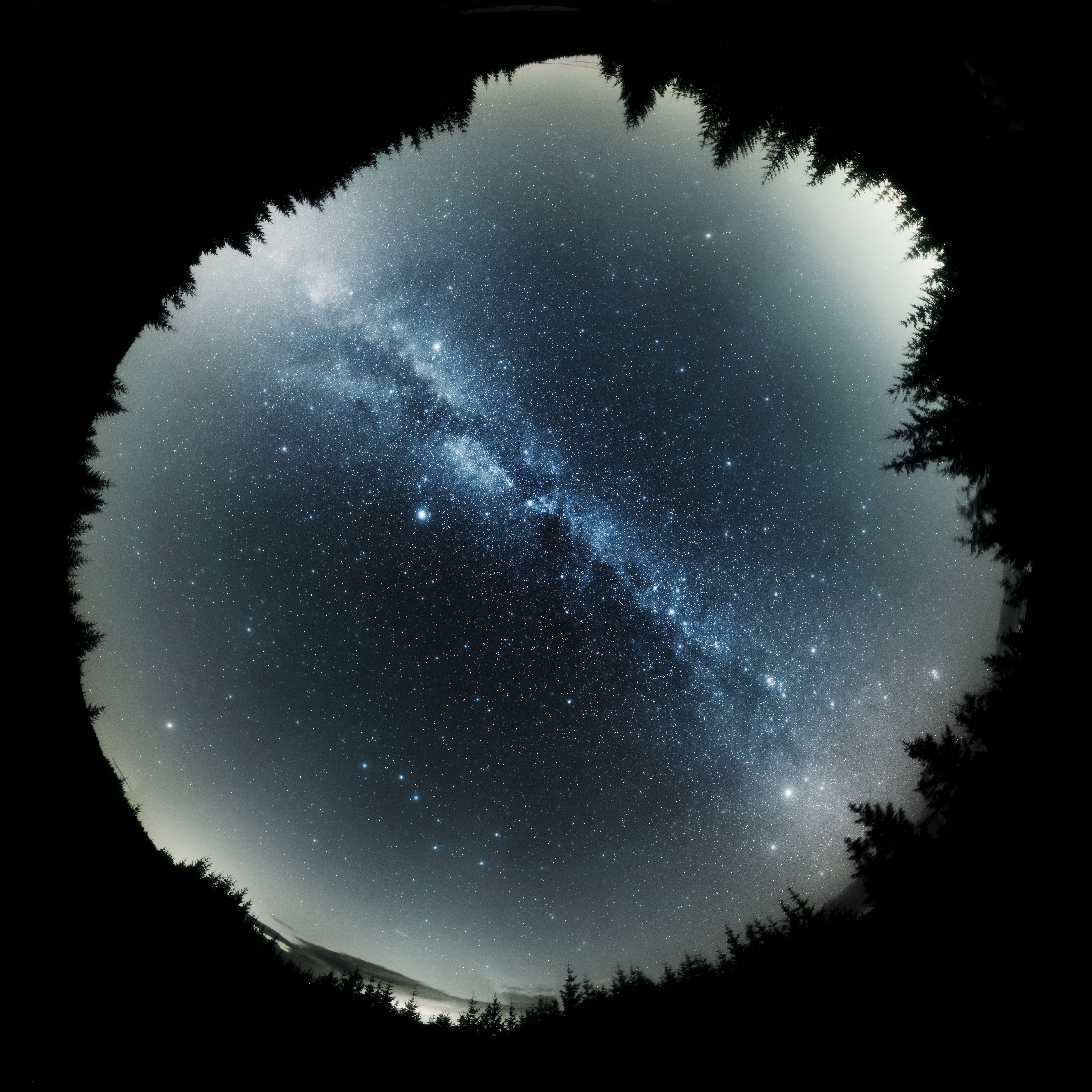
From Darkest Skies to the Big Screen: Kielder Observatory in 28 Years Later
Discover how Kielder Observatory's stunning astrophotography helped shape the haunting beauty of 28 Years Later, the latest blockbuster from Danny Boyle. From capturing the Milky Way to visiting the film set, it's a stellar story we're proud to share!
Read Time
3 minutes
Discover how Kielder Observatory's stunning astrophotography helped shape the haunting beauty of 28 Years Later, the latest blockbuster from Danny Boyle. From capturing the Milky Way to visiting the film set, it's a stellar story we're proud to share!
[fulltext] =>Kielder Observatory is thrilled to share that our skies, and our expertise, have made their way onto the big screen in the brand-new blockbuster 28 Years Later, directed by the legendary Danny Boyle.
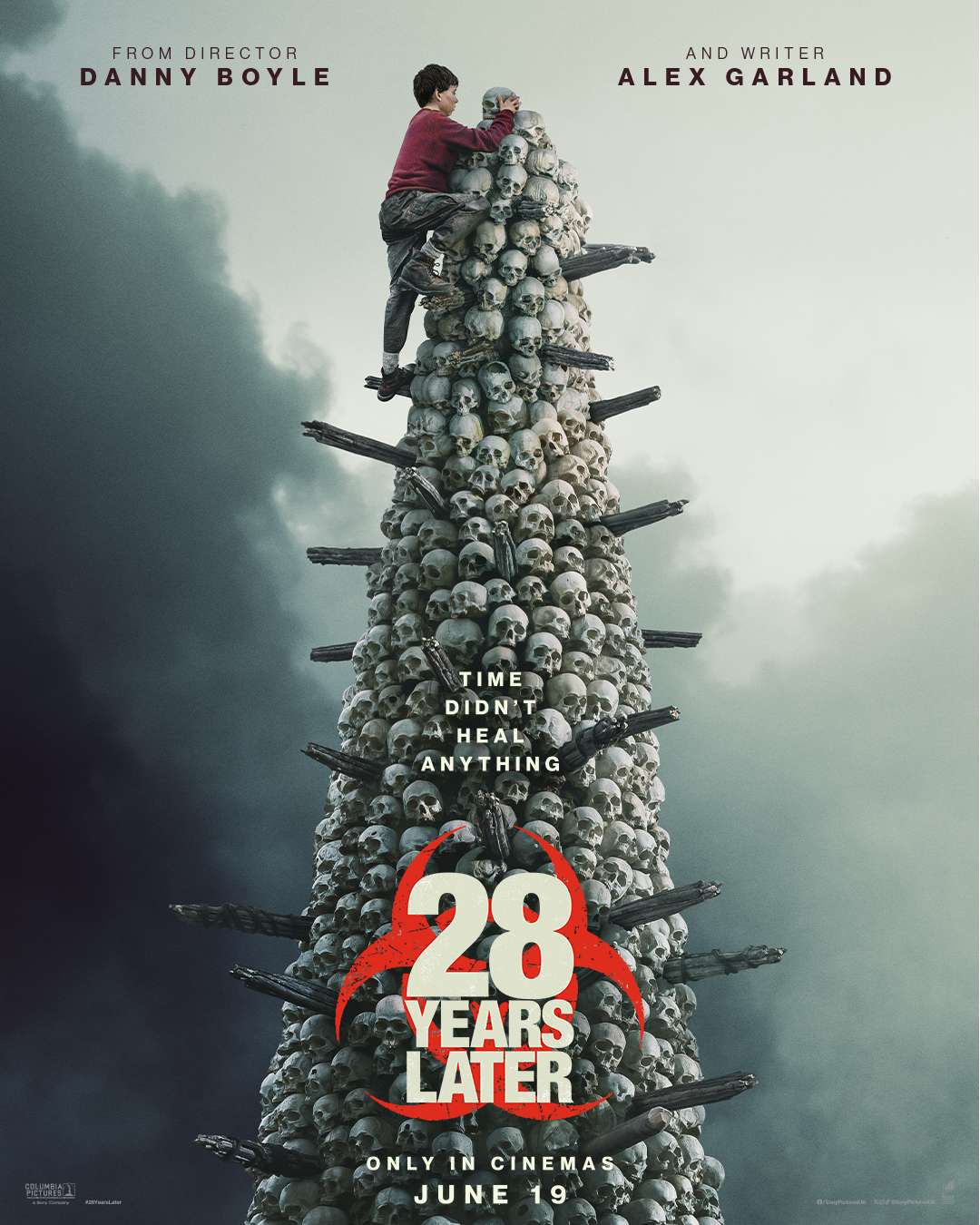
(Image credit: 28 Years Later/SONY pictures)
During the early stages of production, the film's visual effects team reached out in search of something truly special: authentic, natural dark sky imagery to help the mood for a key scene on the Holy Island causeway - one of the most atmospheric and remote filming locations in the UK. When it comes to awe-inspiring skies, they knew exactly where to look.
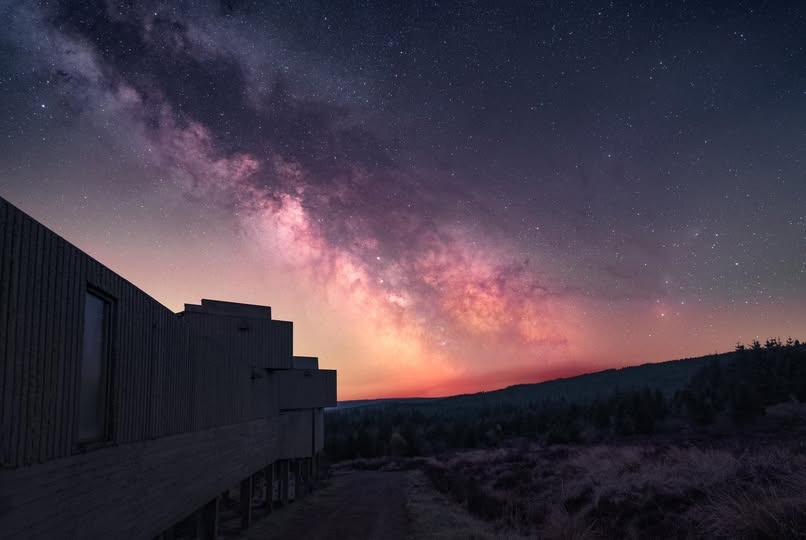
(Image credit: Dan Monk)
Our Director of Astrophotography, Dan Monk, stepped up to the challenge. Over a series of late-night sessions beneath the Northumberland's pristine skies, Dan captured an extraordinary 360 panoramic image of the Milky Way, using 36 seperate exposures.

(Image credit: Dan Monk)
Dan also produced a time-lapse of the Aurora Borealis from right here at Kielder which was given to the visual effects team.
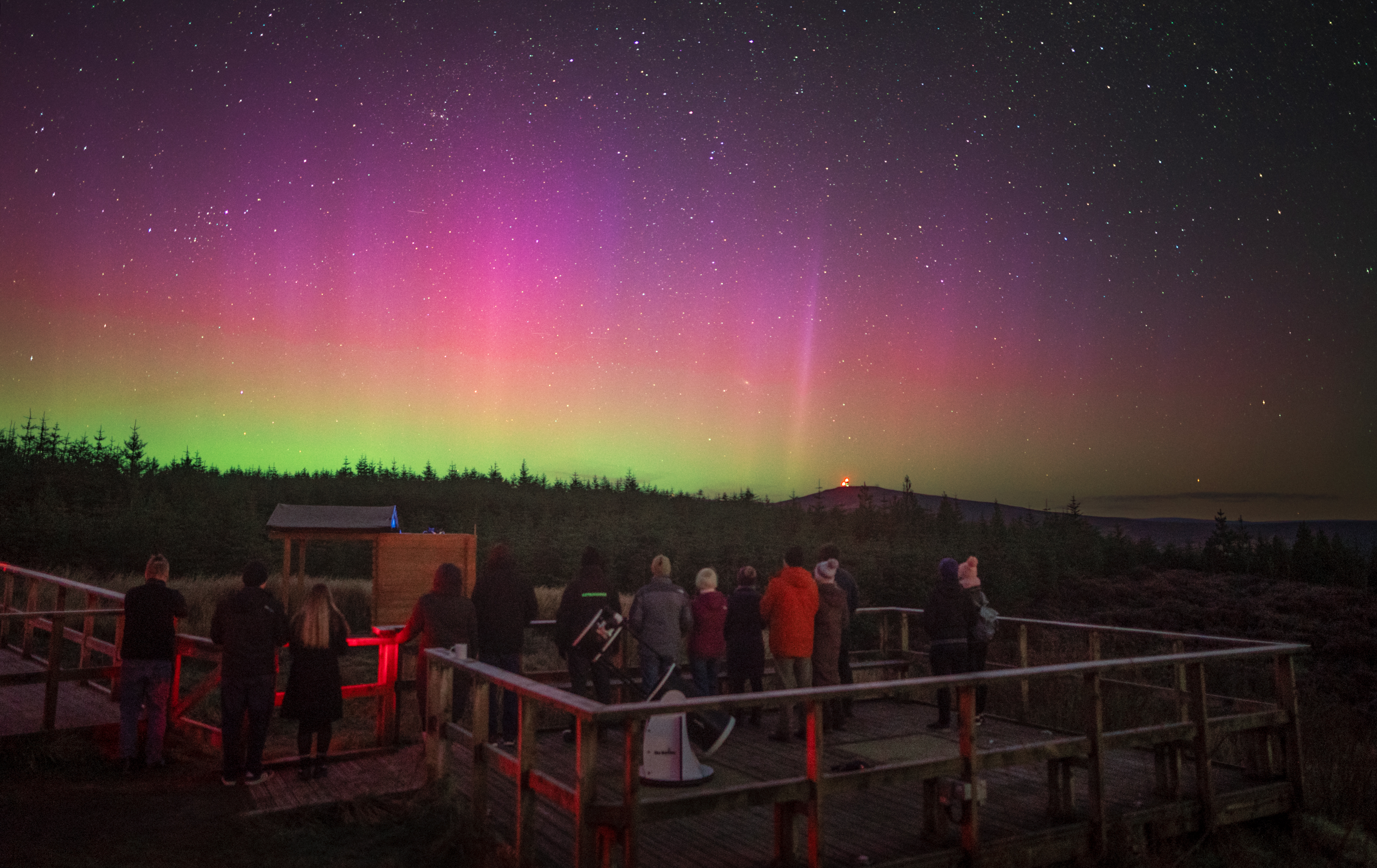
(Image credit: Dan Monk)
These visuals became a vital reference point for the filmmakers, helping shape the look and feel of the film's haunting night scenes. Dan worked closely with the film's visual effects team, even adjusting the final images to match the distinctive colour palette and cinematic tone of a Danny Boyle production.
In recognition of his work, Dan - along with our Director of Astronomy, Dan Pye - was invited to visit the film set, where the dramatic scene was being filmed on the causeway. They even had the chance to meet Danny Boyle and witness his creative process in action.
"Watching Danny work was incredible," said Dan Monk. "Seeing how he made such subtle changes that totally transformed a scene - it was a masterclass. And to have our skies used in a film like this? It's a real career highlight."
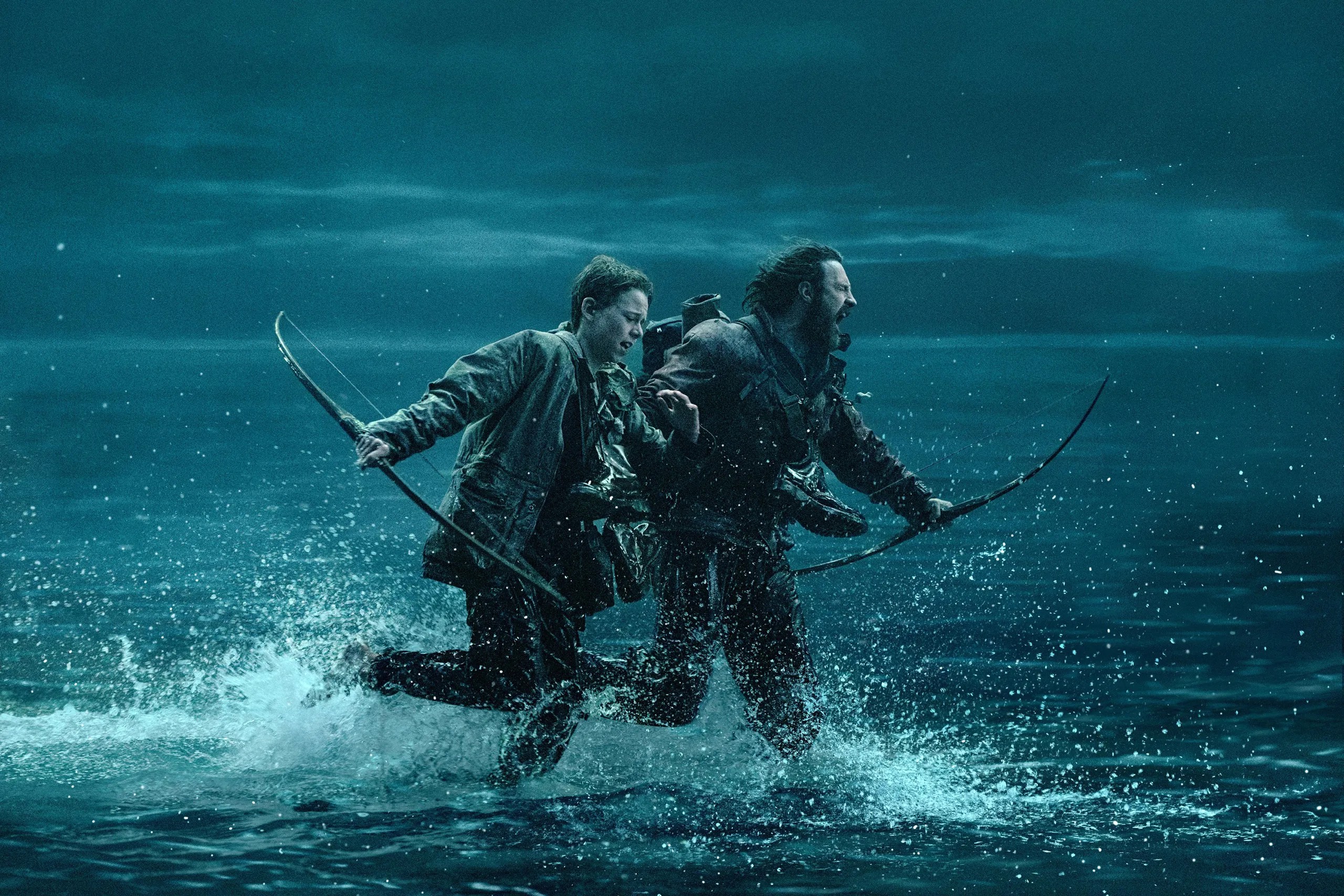
(Image credit: 28 Years Later/SONY pictures)
The visual effects team at Union VFX later described Dan's images as "inspiring," and praised Kielder Observatory for providing a "perfect and unique window to the night skies," thanks to the area's lack of light pollution and exceptional natural darkness.
When the whole team viewed the finished film together at their local cinema, the Hexham Forum, they were amazed. Seeing familiar skies and landscapes woven so seamlessly into such a cinematic and gripping story was nothing short of surreal - and an incredibly proud moment for everyone at the observatory.
28 Years Later also showcases a number of iconic North East locations, making it a powerful celebration of the region's dramatic beauty and otherwordly atmosphere.
We're honoured to have played a part in such a major production and hope that our involvement shines a light - or rather, the perfect darkness - on just how inspiring Northumberland's skies can be.
28 Years Later is in cinemas now (June/July2025) - support your local cinema and see the North East light up the big screen.
Also watch out for the sequel, 28 Years Later: The Bone Temple, releasing early 2026.
[checked_out] => 0 [checked_out_time] => 0000-00-00 00:00:00 [catid] => 34 [created] => 2025-06-28 13:13:14 [created_by] => 72927 [created_by_alias] => [modified] => 2025-06-28 13:32:36 [modified_by] => 72927 [modified_by_name] => Lindsey Brown [publish_up] => 2025-06-28 13:32:36 [publish_down] => 0000-00-00 00:00:00 [images] => {"image_intro":"images\/28yl---med.jpg","float_intro":"","image_intro_alt":"","image_intro_caption":"","image_fulltext":"","float_fulltext":"","image_fulltext_alt":"","image_fulltext_caption":""} [urls] => {"urla":false,"urlatext":"","targeta":"","urlb":false,"urlbtext":"","targetb":"","urlc":false,"urlctext":"","targetc":""} [attribs] => {"show_title":"","link_titles":"","show_tags":"","show_intro":"","info_block_position":"","info_block_show_title":"","show_category":"","link_category":"","show_parent_category":"","link_parent_category":"","show_author":"","link_author":"","show_create_date":"","show_modify_date":"","show_publish_date":"","show_item_navigation":"","show_icons":"","show_print_icon":"","show_email_icon":"","show_vote":"","show_hits":"","show_noauth":"","urls_position":"","alternative_readmore":"","article_layout":"","show_publishing_options":"","show_article_options":"","show_urls_images_backend":"","show_urls_images_frontend":""} [metadata] => {"robots":"","author":"","rights":"","xreference":""} [metakey] => [metadesc] => [access] => 1 [hits] => 6261 [xreference] => [featured] => 0 [language] => * [readmore] => 4206 [state] => 1 [category_title] => Latest News [category_route] => uncategorised/latest-news [category_access] => 1 [category_alias] => latest-news [author] => Lindsey Brown [author_email] => lindsey@kielderobservatory.org [parent_title] => ROOT [parent_id] => 1 [parent_route] => [parent_alias] => root [rating] => [rating_count] => [published] => 1 [parents_published] => 1 [alternative_readmore] => [layout] => [params] => Joomla\Registry\Registry Object ( [data:protected] => stdClass Object ( [article_layout] => _:default [show_title] => 1 [link_titles] => 0 [show_intro] => 1 [info_block_position] => 0 [info_block_show_title] => 0 [show_category] => 0 [link_category] => 0 [show_parent_category] => 0 [link_parent_category] => 0 [show_author] => 0 [link_author] => 0 [show_create_date] => 0 [show_modify_date] => 0 [show_publish_date] => 0 [show_item_navigation] => 0 [show_vote] => 0 [show_readmore] => 1 [show_readmore_title] => 0 [readmore_limit] => 100 [show_tags] => 0 [show_icons] => 0 [show_print_icon] => 0 [show_email_icon] => 0 [show_hits] => 0 [show_noauth] => 0 [urls_position] => 0 [show_publishing_options] => 1 [show_article_options] => 1 [save_history] => 1 [history_limit] => 10 [show_urls_images_frontend] => 0 [show_urls_images_backend] => 1 [targeta] => 0 [targetb] => 0 [targetc] => 0 [float_intro] => right [float_fulltext] => none [category_layout] => _:blog [show_category_heading_title_text] => 1 [show_category_title] => 0 [show_description] => 1 [show_description_image] => 0 [maxLevel] => 1 [show_empty_categories] => 0 [show_no_articles] => 1 [show_subcat_desc] => 1 [show_cat_num_articles] => 0 [show_cat_tags] => 1 [show_base_description] => 1 [maxLevelcat] => -1 [show_empty_categories_cat] => 0 [show_subcat_desc_cat] => 1 [show_cat_num_articles_cat] => 1 [num_leading_articles] => 0 [num_intro_articles] => 27 [num_columns] => 1 [num_links] => 4 [multi_column_order] => 0 [show_subcategory_content] => 0 [show_pagination_limit] => 1 [filter_field] => hide [show_headings] => 1 [list_show_date] => 0 [date_format] => [list_show_hits] => 1 [list_show_author] => 1 [orderby_pri] => order [orderby_sec] => rdate [order_date] => published [show_pagination] => 1 [show_pagination_results] => 1 [show_featured] => show [show_feed_link] => 1 [feed_summary] => 0 [feed_show_readmore] => 0 [show_page_heading] => 0 [layout_type] => blog [menu_text] => 1 [menu_show] => 0 [secure] => 0 [page_title] => Latest News [page_description] => Kielder Observatory Astronomical Society [page_rights] => [robots] => [access-view] => 1 ) [separator] => . ) [displayDate] => 2025-06-28 13:13:14 [slug] => 455:from-darkest-skies-to-the-big-screen-kielder-observatory-in-28-years-later [parent_slug] => [catslug] => 34:latest-news [event] => stdClass Object ( [afterDisplayTitle] => [beforeDisplayContent] => [afterDisplayContent] => ) [text] =>
Discover how Kielder Observatory's stunning astrophotography helped shape the haunting beauty of 28 Years Later, the latest blockbuster from Danny Boyle. From capturing the Milky Way to visiting the film set, it's a stellar story we're proud to share!
)
What's Up? July 2025
As the long summer evenings slowly give way to darker skies, July offers a perfect opportunity to reconnect with the cosmos! From dazzling planetary pairings to noctilucent clouds, the night sky is full of sights to enjoy. Whether you're a seasoned stargazer or just beginning your journey, our What's Up guide for July highlights the key events and wonders to look out for!
Read Time
4 minutes
As the long summer evenings slowly give way to darker skies, July offers a perfect opportunity to reconnect with the cosmos! From dazzling planetary pairings to noctilucent clouds, the night sky is full of sights to enjoy. Whether you're a seasoned stargazer or just beginning your journey, our What's Up guide for July highlights the key events and wonders to look out for!
[fulltext] =>July is upon us and as we move beyond the Summer Equinox we are now technically on track towards darker evenings and more vibrant night skies.
However right now is a great time to observe some lesser spotted skyward phenomena such as nocilucent clouds, also known as NLC's (not all clouds are bad!)
Noctilucent Clouds

(Image credit: Wikipedia)
These are high-altitude clouds that form in the upper atmosphere, specifically in the mesosphere, at altitudes of about 50 miles (80 km) above the Earth's surface. They are typically visible during the summer months, appearing as delicate, whispy blue or silver streaks across the sky after sunset. These clouds are composed of ice crystals that form on fine dust particles, often from meteors, and are most commonly observed at high latitudes. In recent years, their frequency has increased in lower latitudes due to rising methane concentrations in the upper atmosphere.
Constellations
If constellation hopping is your thing, try and spot these on an evening, each with bright stars that stand out in the lighter skies:
Scorpius: Low in the southern sky, with red star Antares.

(Image credit: Stellarium)
Bootes: With the bright orange star Arcturus.

(Image credit: Stellarium)
Corona Borealis: A small, semi-circular constellation near Bootes.

(Image credit: Stellarium)
A star system 3,000 lightyears away known as the 'Blaze Star' is set to become visible to the naked eye, shining like a 'new star' in the night sky.
T Coronae Borealis, also known as TCrB or the 'Blaze Star', last brightened in 1946, and astronomers initially predicted it would brighten again by September 2024.
As of mid-2025, T Coronae Borealis, the Blaze Star, hasn't exploded yet, but when it does happen, its brightness will temporarily increase. T CrB is a recurring nova, a star that brightens due to an interaction between two stars in a binary system, one a red giant and one a white dwarf.
'Nova' means 'new star' in Latin, so-called because it describes how a previously dim star can suddenly reach prominent naked-eye brightness in the sky.

(Image credit: space.com)
Material accretes from the red giant onto the white dwarf, until enough mass has transferred to set off a thermonuclear detonation.
This cause T CrB to brighten significantly, so keep your eyes peeled for this awesome astronomical occurance.
Summer Triangle: Formed by the stars Vega (Lyra), Deneb (Cygnus), and Altair (Aquila). Though not technically a constellation, this stellar line up is an 'asterism' which is simply a pattern of stars outside of the International Astronomical Union's usual list of constellations

(Image credit: Nasa.gov)
Deep Sky Objects
M13 (Hercules Cluster)

(Image credit: skyandtelescope)
This beautiful collection of stars is known as a globular cluster with M13 located in the constelation Hercules. It contains several hundred thousand stars around 22,000 light years from Earth.
M8 (Lagoon Nebula)

Image credit: (astrobackyard)
A giant instellar cloud in the constellation Sagittarius around 4000-6000 light years distant. It is classified as an emission nebula which is the type of nebula formed from ionized gases that emit light of various wavelenghts. This ionization is typically caused by high-energy ultraviolet photons emitted from nearby hot stars.
Planetary Conjunctions
July is rich with planetary pairings, offering several chances to see bright planets near the Moon:
* July 16 - Moon and Saturn: Look east after midnight to seewaning gibbous Moon cozy up to Saturn.
* July 21 - Moon and Venus: A brilliant Venus will shine near the thin crescent Moon just before sunrise.
* July 23 - Moon and Jupiter: Another early morning treat, with Jupiter appearing close to the sliver of the almost-new Moon.
* July 28 - Moon and Mars: Catch this pairing just after the sunset above the western horizon.
Full Moon: July 10
New Moon: July 24 - Great for general night time observing as moonlight is at a minimum keeping the sky as dark as possible.
Earth at Aphelion
On July 3, Earth reaches aphelion, it's farthest point from the Sun, at a distance of about 152.1 million kilometres (94.5 million miles). Despite being farther from the Sun the Northern Hemisphere experiences summer due to the axial tilt of the Earth.
[checked_out] => 72927 [checked_out_time] => 2025-06-28 11:26:28 [catid] => 34 [created] => 2025-06-28 11:09:24 [created_by] => 72927 [created_by_alias] => [modified] => 2025-06-28 11:26:28 [modified_by] => 72927 [modified_by_name] => Lindsey Brown [publish_up] => 2025-06-28 11:24:31 [publish_down] => 0000-00-00 00:00:00 [images] => {"image_intro":"images\/whatsup\/NLC.jpg","float_intro":"","image_intro_alt":"","image_intro_caption":"","image_fulltext":"","float_fulltext":"","image_fulltext_alt":"","image_fulltext_caption":""} [urls] => {"urla":false,"urlatext":"","targeta":"","urlb":false,"urlbtext":"","targetb":"","urlc":false,"urlctext":"","targetc":""} [attribs] => {"show_title":"","link_titles":"","show_tags":"","show_intro":"","info_block_position":"","info_block_show_title":"","show_category":"","link_category":"","show_parent_category":"","link_parent_category":"","show_author":"","link_author":"","show_create_date":"","show_modify_date":"","show_publish_date":"","show_item_navigation":"","show_icons":"","show_print_icon":"","show_email_icon":"","show_vote":"","show_hits":"","show_noauth":"","urls_position":"","alternative_readmore":"","article_layout":"","show_publishing_options":"","show_article_options":"","show_urls_images_backend":"","show_urls_images_frontend":""} [metadata] => {"robots":"","author":"","rights":"","xreference":""} [metakey] => [metadesc] => [access] => 1 [hits] => 6252 [xreference] => [featured] => 0 [language] => * [readmore] => 6515 [state] => 1 [category_title] => Latest News [category_route] => uncategorised/latest-news [category_access] => 1 [category_alias] => latest-news [author] => Lindsey Brown [author_email] => lindsey@kielderobservatory.org [parent_title] => ROOT [parent_id] => 1 [parent_route] => [parent_alias] => root [rating] => [rating_count] => [published] => 1 [parents_published] => 1 [alternative_readmore] => [layout] => [params] => Joomla\Registry\Registry Object ( [data:protected] => stdClass Object ( [article_layout] => _:default [show_title] => 1 [link_titles] => 0 [show_intro] => 1 [info_block_position] => 0 [info_block_show_title] => 0 [show_category] => 0 [link_category] => 0 [show_parent_category] => 0 [link_parent_category] => 0 [show_author] => 0 [link_author] => 0 [show_create_date] => 0 [show_modify_date] => 0 [show_publish_date] => 0 [show_item_navigation] => 0 [show_vote] => 0 [show_readmore] => 1 [show_readmore_title] => 0 [readmore_limit] => 100 [show_tags] => 0 [show_icons] => 0 [show_print_icon] => 0 [show_email_icon] => 0 [show_hits] => 0 [show_noauth] => 0 [urls_position] => 0 [show_publishing_options] => 1 [show_article_options] => 1 [save_history] => 1 [history_limit] => 10 [show_urls_images_frontend] => 0 [show_urls_images_backend] => 1 [targeta] => 0 [targetb] => 0 [targetc] => 0 [float_intro] => right [float_fulltext] => none [category_layout] => _:blog [show_category_heading_title_text] => 1 [show_category_title] => 0 [show_description] => 1 [show_description_image] => 0 [maxLevel] => 1 [show_empty_categories] => 0 [show_no_articles] => 1 [show_subcat_desc] => 1 [show_cat_num_articles] => 0 [show_cat_tags] => 1 [show_base_description] => 1 [maxLevelcat] => -1 [show_empty_categories_cat] => 0 [show_subcat_desc_cat] => 1 [show_cat_num_articles_cat] => 1 [num_leading_articles] => 0 [num_intro_articles] => 27 [num_columns] => 1 [num_links] => 4 [multi_column_order] => 0 [show_subcategory_content] => 0 [show_pagination_limit] => 1 [filter_field] => hide [show_headings] => 1 [list_show_date] => 0 [date_format] => [list_show_hits] => 1 [list_show_author] => 1 [orderby_pri] => order [orderby_sec] => rdate [order_date] => published [show_pagination] => 1 [show_pagination_results] => 1 [show_featured] => show [show_feed_link] => 1 [feed_summary] => 0 [feed_show_readmore] => 0 [show_page_heading] => 0 [layout_type] => blog [menu_text] => 1 [menu_show] => 0 [secure] => 0 [page_title] => Latest News [page_description] => Kielder Observatory Astronomical Society [page_rights] => [robots] => [access-view] => 1 ) [separator] => . ) [displayDate] => 2025-06-28 11:09:24 [slug] => 454:what-s-up-july-2025 [parent_slug] => [catslug] => 34:latest-news [event] => stdClass Object ( [afterDisplayTitle] => [beforeDisplayContent] => [afterDisplayContent] => ) [text] =>As the long summer evenings slowly give way to darker skies, July offers a perfect opportunity to reconnect with the cosmos! From dazzling planetary pairings to noctilucent clouds, the night sky is full of sights to enjoy. Whether you're a seasoned stargazer or just beginning your journey, our What's Up guide for July highlights the key events and wonders to look out for!
)
AAA: How Old Are Things?
Ever wondered how astronomers can casually claim that the sun is 5 billion years old or that the universe is pushing 13.8 billion? In this fascinating blog, Kielder Observatory's astronomer Rosie pulls back the cosmic curtain to reveal the science behind those staggering numbers. From ancient guesses to salty oceans to radioactive decay and meteorite time capsules, she traces the journey of how we've come to understand the age of the Earth, the Solar System and even the stars themselves. Spoiler Alert: It's not guesswork - it's science (mostly).
Read Time
11 minutes
Ever wondered how astronomers can casually claim that the sun is 5 billion years old or that the universe is pushing 13.8 billion? In this fascinating blog, Kielder Observatory's astronomer Rosie pulls back the cosmic curtain to reveal the science behind those staggering numbers. From ancient guesses to salty oceans to radioactive decay and meteorite time capsules, she traces the journey of how we've come to understand the age of the Earth, the Solar System and even the stars themselves. Spoiler Alert: It's not guesswork - it's science (mostly).
[fulltext] =>You're having a lovely time at Kielder Observatory, seeing the telescopes, holding meteorites, learning about stars and planets. And then an astronomer will blurt out an absurdly old age like "The Sun is about 5 billion years old", or "our Universe is 13.8 billion years old", or amusingly "those stars over there are only 100 million years old, practically babies". Are we just pulling numbers out of thin air? Are we lying and astronomy is the greatest magic trick of all time? How could we know this?
Finding out the age of objects in space is a difficult and complicated thing to do, and saying these numbers so nonchalantly is a disservice to the many scientists and years of hard work to figure this out. However, if we were to explain in detail how we know every scientific fact we say during a telescope tour, we'd have to extend our events so long it would be morning by the time you'd leave.
So instead, here I am writing this article, and I will explain in detail how we find these things out. There are so many different areas to cover, so I'm going to start at the beginning of our scientific history about this subject - how we discovered the age of our Earth.
The Earth and our Solar System

(Image: The Earth. Credit: ESA)
We've been trying to figure out how old the Earth is for a very long time. Many cultures believed the Earth was infinitely old, such as the Ancient Greeks. During medieval time Christians scrutinized the bible for clues and estimated it was only a few thousand years old. However, during the 1700 and 1800's we tried to find the answer more scientifically.
Some scientists looked at the amount of salt in the ocean and tried to calculate how long it would have taken to get that salty from the surounding rock. Others assumed that the Earth must have started out completely molten, and worked out the amount of time it would take the surface to cool to what it is today. Both of these methods came out with an age of around a few 100 million years, even at the time this was seen as much too short - especially by biologists.
It wasn't until radiometric dating, a method devised in the early 20th century, that we finally discovered the true age of the Earth.
Radiometric dating is an incredibly powerful scientific method. It works by looking at the amount of radioactive elements in rocks. Radioactive elements decay into smaller elements, for example uranium-238 slowly decays into lead (Pb) at a known rate. If you have 1kg of uranium, in about 4.47 billion years, only 0.5kg of uranium-238 will be left and the rest will have decayed into lead (Pb). So, if we look at a piece of rock and compare ratios between uranium-238 and lead, we can get an idea of how old that rock must be!

(Image: A rock containing uranium decaying into lead over time. A half-life is how long it takes for a radioactive element to decay half of its initial quantity. Credit: Unkown)
At first, scientists found rocks which were a few hundred million up to 2 billion years old. Physicist Arthur Holmes, who led the way for radiometric dating, in 1927 presented results in a paper saying the Earth was at least 1 billion and up to 3 billion years old.
Now, at this point in history we had already established a theory on how the Earth and Solar System had formed - namely the nebula hypothesis which put briefly: the entire solar system formed out of the same cloud of gas and dust at the same time. First the Sun formed, and then shortly after the planets clumped and ended up orbiting around the Sun. So, if we find the age of the Earth, we find the age of the entire Solar System, but indeed it also works the other way around.

(Image: Formation of the Solar System / nrao.edu)
In the 1950's geochemist Clair Cameron Patterson started looking into the age of a few meteorites - bits of rock from space that have crashed into Earth. Unlike Earth rock which has been renewed and melted many times due to the tectonic plates, bits of rock in space have been frozen and unchanged since the formation of the Solar System, and therefore give a more accurate age.
He analysed the famous Canyon Diablo meterorite and in 1956 published "Age of Meteorites and the Earth" showing the age to be 4.550Gy ± 70My, which has remained the age of the Solar System and the Earth ever since.

(Image: Fragment of Canyon Diablo meteorite. Credit: Aerolite Meteorites of Tuscon)
Stars
So, we figured out the age of the Solar System - hoorah! Now, what about the rest of space?

(Image: The Sun, 4.6 billion years old. Credit: ESA)
It's complicated..
We know how old our Sun is because we've sampled rocks that were nearby it, we don't have that luxury for other stars sadly.
If you thought finding the age of rocks was complicated, I have some bad news for you. Finding out the age of stars is very difficult and even with all of our fancy equipment and analysis and modelling techniques, is still a guestimation of sorts. And here's a secret - we can't find out the age of most stars.
Our Sun is in the main part of its life and is what's called a main sequence star (not too big or too small). The Sun and other stars on the main sequence are made of hydrogen and are fusing the hydrogen at the core producing energy. They do this from the very beginning of their lives all the way until their death, constantly producing energy at their core.
The trouble is, stars churn out this energy pretty consistently for the majority of their lives, making it difficult to tell how old they are. When we look at the light from our Sun, it looks pretty much the same as it would have a billion years ago, and will look the same a billion years in the future. For 90% of it's life, a star will pretty much look identical, burning hydrogen and churning out light and heat.
However, different sizes of stars look very different.

(Image: The more massive the star, the hotter and more luminous it is. Stars decreasing in mass from left to right.
Credit: ZME Science)
Big stars have a lot of mass and burn the hydrogen in the core very quickly. Therefore, producing lots of heat and light. They are the hottest, bluest, brightest stars, but because they burn up the hyrdogen so fast, they dont live very long.
Smaller stars burn the hydrogen much more slowly, so they don't glow very hot or bright -maybe just a nice yellow or amber colour. But they live a much longer time.
So, if we know how massive the star is, we know roughly the age expectancy. But still we don't know how long it's been there.
The secret lies in death...
At the end of a star's life their colour and their luminosity change, and we can use this to our advantage.
When the grim reaper comes knocking on a star's door, the star begins to expand and the surface of the star cools down. Because it's size has increased it's still luminous, but the colour changes to a redder hue. By looking at stars whose colour is perhaps redder than it should be, we can tell if it's nearing towards death (or about to fall off the main sequence).
And if we see that it's on the cusp of falling off the main sequence, we can get an estimate of it's age! Hoorah!
Let's take the famous star Betelgeuse as an example.

(Image: Betelgeuse in the constellation of Orion. Credit: Astrobackyard)
Using observations such as luminosity and temperature, we can estimate Betelgeuse to be 15 to 20 times the mass of our Sun. It's also very red and extremely luminous meaning that it's towards the end of its life in the "red supergiant" phase. Now, a star 15-20 times the mass of our Sun would take somewhere between 8 and 15 million years to reach the red supergiant stage. So, we can estimate Betelgeuse is around 8-15 million years old!
For the most part finding the age of an individual star is near impossible. So we use clusters instead.
Star Clusters
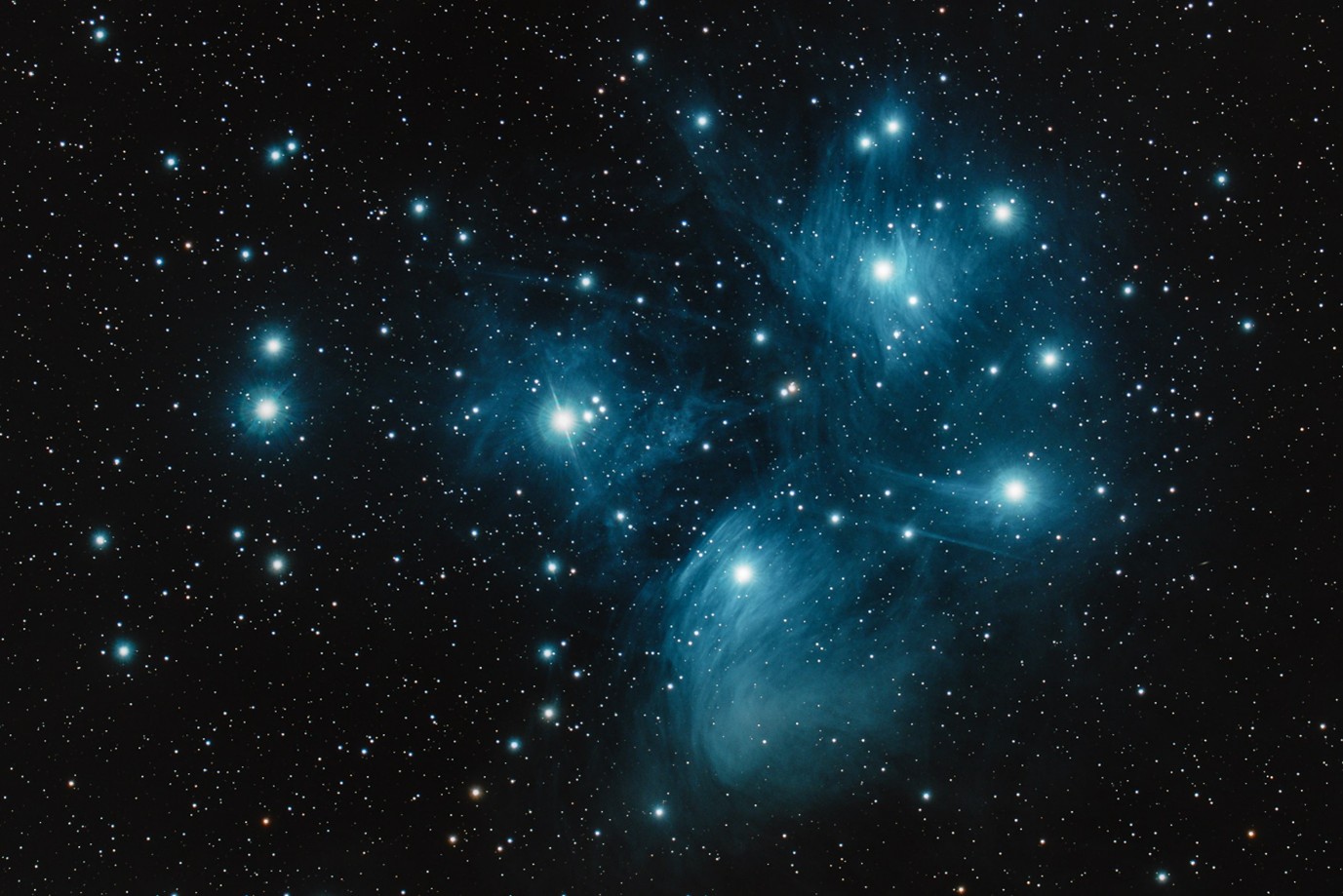
(Image: The beautiful Pleiades! Taken with our remote telescope in Spain by Adam Shore. Credit: Kielder Observatory.)
Star clusters are groups of stars that have all been born together at the same time. The different massed stars in a cluster will burn through their fuel at different speeds. But because all the stars in a cluster are the same age, we can compare their different stages of life, and it makes it much easier to find their age.
For example, take the beautiful Pleiades or seven sisters as pictured. We can measure that those beautiful teal coloured stars are very hot, and very luminous. So that tells me they are pretty massive, probably a few times the mass of our Sun, and much hotter. Massive stars don't live very long so we can guestimate that this is quite a young cluster. But how young exactly?
We can plot all the stars in the Pleiades (there's about 1000) according to their temperature and luminosity on a HR (Hertzpring-Russell) diagram.
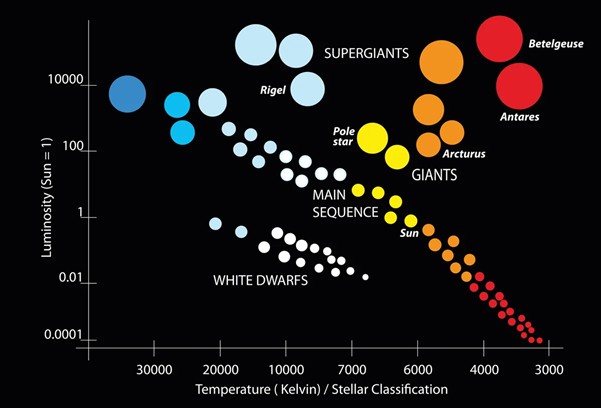
(Image: A schematic Hertzprung-Russell diagram showing where the main sequence and other portions of stars exist in this classification. Credit: gstraub/Shutterstock.com)
When the star cluster is first born, the HR diagram is a beautiful straight line. But the older the cluster gets, more and more stars start to die, and the straight line starts to curve. The massive stars are the first ones to leave the main sequence as they run out of fuel first. But as the cluster ages, the medium sized stars and even small stars start to run out of fuel and fall off the main sequence. Seeing where this "turn-off" point is, we can estimate how old the cluster is.

(Image: Plotting the temperature and luminosity of all the stars in a cluster can give us an estimate of the age. On the left, a very young cluster with few of the bright blue stars dying. On the right, an older cluster where all the bright blue stars and even medium yellow stars are marching on the path towards death. Credit: Milwaukee Area Technical College)
So back to the Pleiades. If we plot all the stars in the cluster on a graph based on their luminosity and temperature, it looks like the diagram below. As you can see there is already a slight curve towards the left, so it's not brand new, but it's still a fairly young cluster. Current estimates say around 100-130 million years old.
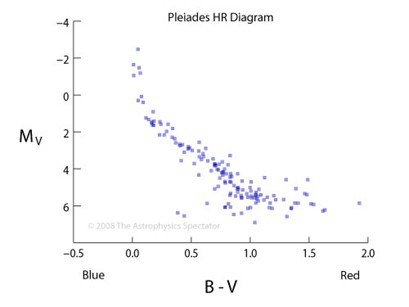
(Image: The Pleiades HR Diagram. Credit: The Astrophysics Spectator)
Galaxies
Galaxies are quite tricky to find the age of. Part of the problem is deciding when the galaxy "began". Galaxies like our own Milky Way began with a few star clusters merging to become a small galaxy. And then a few smaller galaxies merged until finally we have our Milky Way.
The best thing we can do is look at the age of the stars. Stars are the building blocks of galaxies, so to find out how old a galaxy is we look at the oldest stars in that galaxy.
With our Milly Way, we've found stars which are almost as old as the universe itself! With estimates of around 13 billion years old.

(Image: Artist's impression of the Milky Way. Credit: NASA)
Phew! That was complicated. As you can see it's not easy telling how old objects are in space. But astronomers have come up with a few tricks which help us out.
References and extra reading!
https://science.howstuffworks.com/how-old-is-earth.htm
https://doi.org/10.1016/0016-7037(56)90036-9 -Clair Pattersons paper on the age of the Earth
https://www.skyatnightmagazine.com/space-science/how-old-is-sun
https://www.skyatnightmagazine.com/space-science/age-of-stars
https://www.scientificamerican.com/article/how-do-scientists-determi/
https://www.iflscience.com/how-do-we-know-the-age-of-stars-68575
https://www.sciencenews.org/article/star-age-calculation-astronomy-life-cycle
https://www.skyatnightmagazine.com/space-science/how-old-milky-way-galaxy
https://www.youtube.com/watch?v=w80z_moI8BU-(Fantastic video by science news with some cool visualisations)
[checked_out] => 72927 [checked_out_time] => 2025-06-28 11:28:12 [catid] => 34 [created] => 2025-06-13 10:38:40 [created_by] => 72927 [created_by_alias] => [modified] => 2025-06-28 11:28:12 [modified_by] => 72927 [modified_by_name] => Lindsey Brown [publish_up] => 2025-06-13 14:14:30 [publish_down] => 0000-00-00 00:00:00 [images] => {"image_intro":"images\/AAA\/Solar-System-formation.jpg","float_intro":"","image_intro_alt":"","image_intro_caption":"","image_fulltext":"","float_fulltext":"","image_fulltext_alt":"","image_fulltext_caption":""} [urls] => {"urla":false,"urlatext":"","targeta":"","urlb":false,"urlbtext":"","targetb":"","urlc":false,"urlctext":"","targetc":""} [attribs] => {"show_title":"","link_titles":"","show_tags":"","show_intro":"","info_block_position":"","info_block_show_title":"","show_category":"","link_category":"","show_parent_category":"","link_parent_category":"","show_author":"","link_author":"","show_create_date":"","show_modify_date":"","show_publish_date":"","show_item_navigation":"","show_icons":"","show_print_icon":"","show_email_icon":"","show_vote":"","show_hits":"","show_noauth":"","urls_position":"","alternative_readmore":"","article_layout":"","show_publishing_options":"","show_article_options":"","show_urls_images_backend":"","show_urls_images_frontend":""} [metadata] => {"robots":"","author":"","rights":"","xreference":""} [metakey] => [metadesc] => [access] => 1 [hits] => 6035 [xreference] => [featured] => 1 [language] => * [readmore] => 16766 [state] => 1 [category_title] => Latest News [category_route] => uncategorised/latest-news [category_access] => 1 [category_alias] => latest-news [author] => Lindsey Brown [author_email] => lindsey@kielderobservatory.org [parent_title] => ROOT [parent_id] => 1 [parent_route] => [parent_alias] => root [rating] => [rating_count] => [published] => 1 [parents_published] => 1 [alternative_readmore] => [layout] => [params] => Joomla\Registry\Registry Object ( [data:protected] => stdClass Object ( [article_layout] => _:default [show_title] => 1 [link_titles] => 0 [show_intro] => 1 [info_block_position] => 0 [info_block_show_title] => 0 [show_category] => 0 [link_category] => 0 [show_parent_category] => 0 [link_parent_category] => 0 [show_author] => 0 [link_author] => 0 [show_create_date] => 0 [show_modify_date] => 0 [show_publish_date] => 0 [show_item_navigation] => 0 [show_vote] => 0 [show_readmore] => 1 [show_readmore_title] => 0 [readmore_limit] => 100 [show_tags] => 0 [show_icons] => 0 [show_print_icon] => 0 [show_email_icon] => 0 [show_hits] => 0 [show_noauth] => 0 [urls_position] => 0 [show_publishing_options] => 1 [show_article_options] => 1 [save_history] => 1 [history_limit] => 10 [show_urls_images_frontend] => 0 [show_urls_images_backend] => 1 [targeta] => 0 [targetb] => 0 [targetc] => 0 [float_intro] => right [float_fulltext] => none [category_layout] => _:blog [show_category_heading_title_text] => 1 [show_category_title] => 0 [show_description] => 1 [show_description_image] => 0 [maxLevel] => 1 [show_empty_categories] => 0 [show_no_articles] => 1 [show_subcat_desc] => 1 [show_cat_num_articles] => 0 [show_cat_tags] => 1 [show_base_description] => 1 [maxLevelcat] => -1 [show_empty_categories_cat] => 0 [show_subcat_desc_cat] => 1 [show_cat_num_articles_cat] => 1 [num_leading_articles] => 0 [num_intro_articles] => 27 [num_columns] => 1 [num_links] => 4 [multi_column_order] => 0 [show_subcategory_content] => 0 [show_pagination_limit] => 1 [filter_field] => hide [show_headings] => 1 [list_show_date] => 0 [date_format] => [list_show_hits] => 1 [list_show_author] => 1 [orderby_pri] => order [orderby_sec] => rdate [order_date] => published [show_pagination] => 1 [show_pagination_results] => 1 [show_featured] => show [show_feed_link] => 1 [feed_summary] => 0 [feed_show_readmore] => 0 [show_page_heading] => 0 [layout_type] => blog [menu_text] => 1 [menu_show] => 0 [secure] => 0 [page_title] => Latest News [page_description] => Kielder Observatory Astronomical Society [page_rights] => [robots] => [access-view] => 1 ) [separator] => . ) [displayDate] => 2025-06-13 10:38:40 [slug] => 452:aaa-how-old-are-things [parent_slug] => [catslug] => 34:latest-news [event] => stdClass Object ( [afterDisplayTitle] => [beforeDisplayContent] => [afterDisplayContent] => ) [text] =>Ever wondered how astronomers can casually claim that the sun is 5 billion years old or that the universe is pushing 13.8 billion? In this fascinating blog, Kielder Observatory's astronomer Rosie pulls back the cosmic curtain to reveal the science behind those staggering numbers. From ancient guesses to salty oceans to radioactive decay and meteorite time capsules, she traces the journey of how we've come to understand the age of the Earth, the Solar System and even the stars themselves. Spoiler Alert: It's not guesswork - it's science (mostly).
)
What’s Up? June 2025
With May gone we have now lost the dark nights, but there’s still plenty to enjoy! In fact, this is a fantastic opportunity to brush up on your constellation knowledge as the brighter constellations will stand out more in the lighter skies.
Read Time
5 minutes
With May gone we have now lost the dark nights, but there’s still plenty to enjoy! In fact, this is a fantastic opportunity to brush up on your constellation knowledge as the brighter constellations will stand out more in the lighter skies.
[fulltext] =>
Constellations
With the winter constellations like Orion well and truly vanquished, and spring constellations like Leo and Virgo on their way down, we can turn our attention to the rising summer skies. Keep an eye to the east as the Sun sets and you’ll catch the summer triangle returning in its entirety. The summer triangle is the name typically used for the triangle created by the stars Vega, Deneb, and Altair, the brightest stars in Lyra, Cygnus, and Aquila respectively. It’s not a constellation, according to the IAU, but rather a more general asterism (star shape). As we move towards summer this triangle will get higher and higher.
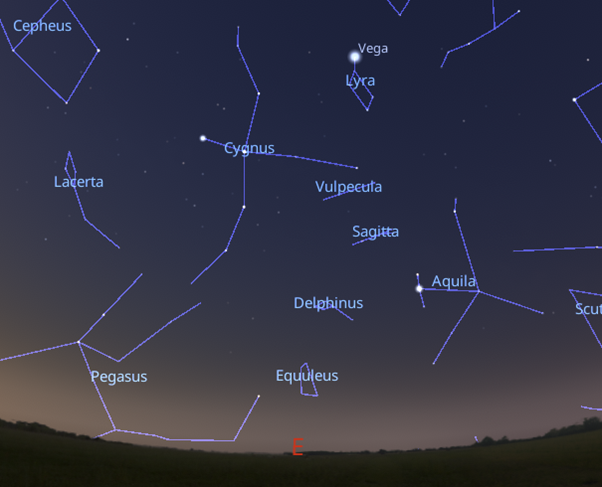
Simulation of the sky on 15th June 2025 at 2320 from Kielder Observatory, the red lines show the “summer triangle” asterism (Credit: Stellarium)
Lyra is a lovely little constellation shaped like an ancient Greek lyre. The story goes that this particular lyre once belonged to Orpheus, an ancient poet whose music could even charm rocks. Vega is a beautiful star and being the 5th brightest in the sky it’s a nice easy target for telescopes, and it’s a fun one for fans of the film/book “Contact” by Carl Sagan!
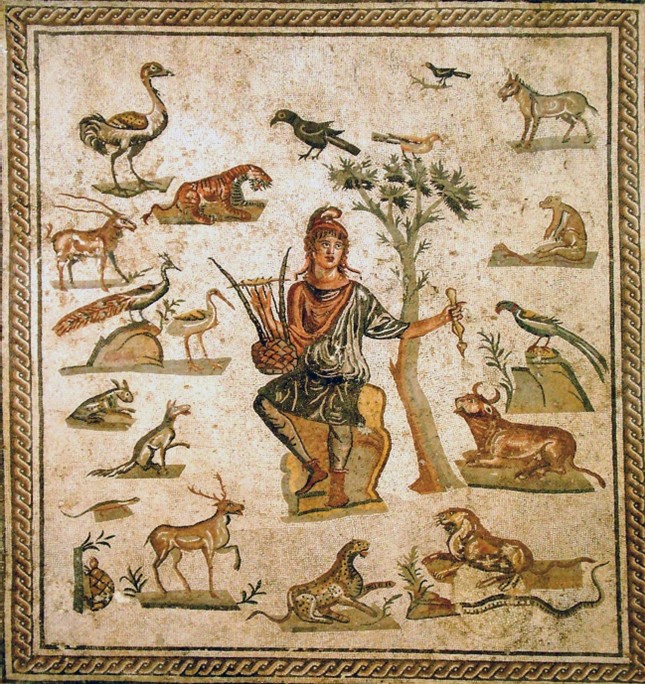
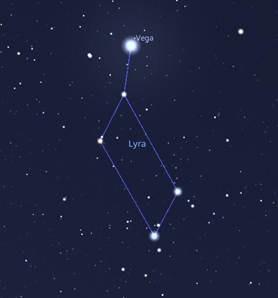
L: Roman floor mosaic showing Orpheus charming animals, from Palermo. R: The constellation Lyra, the double double is circled (Credit: Stellarium)
Just to the left of Vega you should spot another fainter star which has a surprise for those with telescopes to get a closer look. A telescope will reveal this star as a double set of binaries, and we affectionately refer to it as the double double because of this. These 4 stars are around 162 light years away and all orbit around one another. A fifth star in this system was discovered in 1985, but you won’t be able to see that one.
Object of the Month – M57 The Ring Nebula
In Greek mythology, Orpheus was a prophet as well as a musician and poet, so it’s quite appropriate that hidden in his lyre we can catch a glimpse of our Sun’s future with the small but mighty M57, also known as the ring nebula because, well, it looks like a ring. To find it, you want to be looking roughly halfway between the two stars in the base of Lyra. As a general rule, if you can see those stars, it should be dark enough to see this nebula.

M57 in infra-red as seen using the JWST (Credit: ESA/Webb, NASA, CSA, M. Barlow (UCL), N. Cox (ACRI-ST), R. Wesson (Cardiff University)
Pictures from telescopes such as Hubble and JWST show M57 in stunning detail with a series of colourful rings centred on a small white dwarf star, visible as just a small dot. Viewed by human eyes through a telescope on Earth, those colours become grey, and the nebula resembles a smoke ring suspended in space. M57 is a fantastic example of a planetary nebula which is the end-state of a solar-mass star. Despite the name, planetary nebulas have nothing to do with planets, they just appear rather round like planets.
This type of object is formed as solar-mass stars age and start to swell. More massive stars will go supernova after this stage, generating a vast amount of energy and synthesising elements beyond iron, but not our little solar-mass stars. These stars continue to swell until the outer layers shed away and create our planetary nebulae.
Summer Solstice – 21st June
The summer solstice falls on the 21st of June, marking the shortest day of the year and the start of astronomical summer. The term “solstice” comes from the Latin “sol” (Sun) and “sistere” (to stand still). It doesn’t actually refer to a day so much as a specific moment in the day where the Suns motion (in declination) seems to stop before reversing. In other words, it is the moment the Sun is at its highest in the summer, or the lowest in winter.
Many cultures around the world have been known to mark the solstices with celebrations and festivals, and monuments have been built to be able to determine when the day arrives. In the UK we have Stonehenge which was built to mark the solstices and each year thousands of people gather on this day to watch the Sun rise in line with the Heel Stone at the entrance of the stone circle.
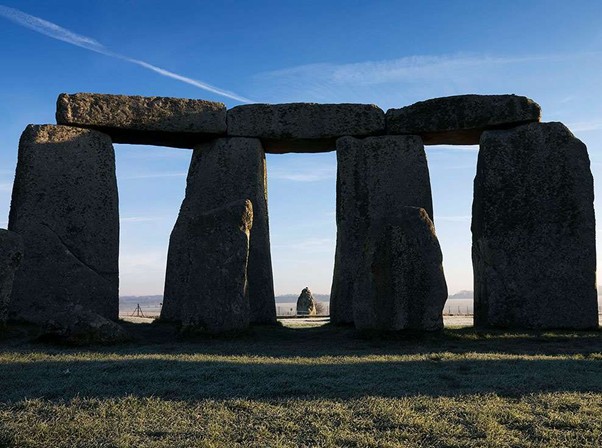
The Heel Stone as seen through Stonehenge, on the 21st June the Sun will rise just to the left of here (Credit: English Heritage)
Planets
It’s a pretty quiet month for planets as even Mars starts to set in the evening sky, but early risers will be able to catch Saturn and Venus in the pre-dawn sky.
Moon
First Quarter: 3rd June
Full Moon: 11th June
Third Quarter: 18th June
New Moon: 25th June
[checked_out] => 0 [checked_out_time] => 0000-00-00 00:00:00 [catid] => 34 [created] => 2025-05-27 11:18:54 [created_by] => 52030 [created_by_alias] => [modified] => 2025-05-27 11:19:35 [modified_by] => 52030 [modified_by_name] => Hannah Matterson [publish_up] => 2025-05-27 11:18:54 [publish_down] => 0000-00-00 00:00:00 [images] => {"image_intro":"images\/whatsup\/WU-June-25-4.jpg","float_intro":"","image_intro_alt":"","image_intro_caption":"","image_fulltext":"","float_fulltext":"","image_fulltext_alt":"","image_fulltext_caption":""} [urls] => {"urla":false,"urlatext":"","targeta":"","urlb":false,"urlbtext":"","targetb":"","urlc":false,"urlctext":"","targetc":""} [attribs] => {"show_title":"","link_titles":"","show_tags":"","show_intro":"","info_block_position":"","info_block_show_title":"","show_category":"","link_category":"","show_parent_category":"","link_parent_category":"","show_author":"","link_author":"","show_create_date":"","show_modify_date":"","show_publish_date":"","show_item_navigation":"","show_icons":"","show_print_icon":"","show_email_icon":"","show_vote":"","show_hits":"","show_noauth":"","urls_position":"","alternative_readmore":"","article_layout":"","show_publishing_options":"","show_article_options":"","show_urls_images_backend":"","show_urls_images_frontend":""} [metadata] => {"robots":"","author":"","rights":"","xreference":""} [metakey] => [metadesc] => [access] => 1 [hits] => 6570 [xreference] => [featured] => 0 [language] => * [readmore] => 6671 [state] => 1 [category_title] => Latest News [category_route] => uncategorised/latest-news [category_access] => 1 [category_alias] => latest-news [author] => Hannah Matterson [author_email] => hannah@kielderobservatory.org [parent_title] => ROOT [parent_id] => 1 [parent_route] => [parent_alias] => root [rating] => [rating_count] => [published] => 1 [parents_published] => 1 [alternative_readmore] => [layout] => [params] => Joomla\Registry\Registry Object ( [data:protected] => stdClass Object ( [article_layout] => _:default [show_title] => 1 [link_titles] => 0 [show_intro] => 1 [info_block_position] => 0 [info_block_show_title] => 0 [show_category] => 0 [link_category] => 0 [show_parent_category] => 0 [link_parent_category] => 0 [show_author] => 0 [link_author] => 0 [show_create_date] => 0 [show_modify_date] => 0 [show_publish_date] => 0 [show_item_navigation] => 0 [show_vote] => 0 [show_readmore] => 1 [show_readmore_title] => 0 [readmore_limit] => 100 [show_tags] => 0 [show_icons] => 0 [show_print_icon] => 0 [show_email_icon] => 0 [show_hits] => 0 [show_noauth] => 0 [urls_position] => 0 [show_publishing_options] => 1 [show_article_options] => 1 [save_history] => 1 [history_limit] => 10 [show_urls_images_frontend] => 0 [show_urls_images_backend] => 1 [targeta] => 0 [targetb] => 0 [targetc] => 0 [float_intro] => right [float_fulltext] => none [category_layout] => _:blog [show_category_heading_title_text] => 1 [show_category_title] => 0 [show_description] => 1 [show_description_image] => 0 [maxLevel] => 1 [show_empty_categories] => 0 [show_no_articles] => 1 [show_subcat_desc] => 1 [show_cat_num_articles] => 0 [show_cat_tags] => 1 [show_base_description] => 1 [maxLevelcat] => -1 [show_empty_categories_cat] => 0 [show_subcat_desc_cat] => 1 [show_cat_num_articles_cat] => 1 [num_leading_articles] => 0 [num_intro_articles] => 27 [num_columns] => 1 [num_links] => 4 [multi_column_order] => 0 [show_subcategory_content] => 0 [show_pagination_limit] => 1 [filter_field] => hide [show_headings] => 1 [list_show_date] => 0 [date_format] => [list_show_hits] => 1 [list_show_author] => 1 [orderby_pri] => order [orderby_sec] => rdate [order_date] => published [show_pagination] => 1 [show_pagination_results] => 1 [show_featured] => show [show_feed_link] => 1 [feed_summary] => 0 [feed_show_readmore] => 0 [show_page_heading] => 0 [layout_type] => blog [menu_text] => 1 [menu_show] => 0 [secure] => 0 [page_title] => Latest News [page_description] => Kielder Observatory Astronomical Society [page_rights] => [robots] => [access-view] => 1 ) [separator] => . ) [displayDate] => 2025-05-27 11:18:54 [slug] => 450:what-s-up-june-2025 [parent_slug] => [catslug] => 34:latest-news [event] => stdClass Object ( [afterDisplayTitle] => [beforeDisplayContent] => [afterDisplayContent] => ) [text] =>
With May gone we have now lost the dark nights, but there’s still plenty to enjoy! In fact, this is a fantastic opportunity to brush up on your constellation knowledge as the brighter constellations will stand out more in the lighter skies.
)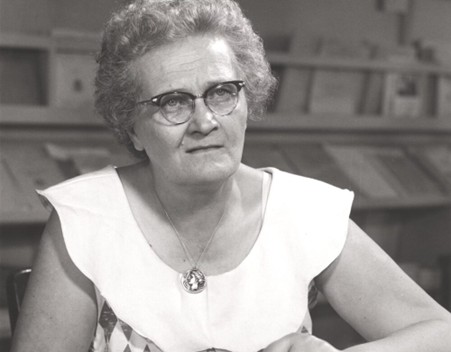
What are stars made of? 100 year anniversary!
In May 1925, a young woman published a paper that completely changed our view of the universe. In this article, astronomer Rosie dives into how the composition of stars was discovered!
Read Time
9 minutes
In May 1925, a young woman published a paper that completely changed our view of the universe. In this article, astronomer Rosie dives into how the composition of stars was discovered!
[fulltext] =>
Introduction
This month marks 100 years since we discovered what stars are made of.
If you’ve ever attended one of our events, you’ll probably know that stars are mostly made of hydrogen gas. But before 100 years ago, scientists believed stars were made of rock and metal, similar to the elements found on Earth. So, this revelation was groundbreaking at the time.
Even more remarkable is that it was made by a young woman who was only 25 years old and still a PhD student. Her name was Cecilia Payne, and she was a fantastic scientist!
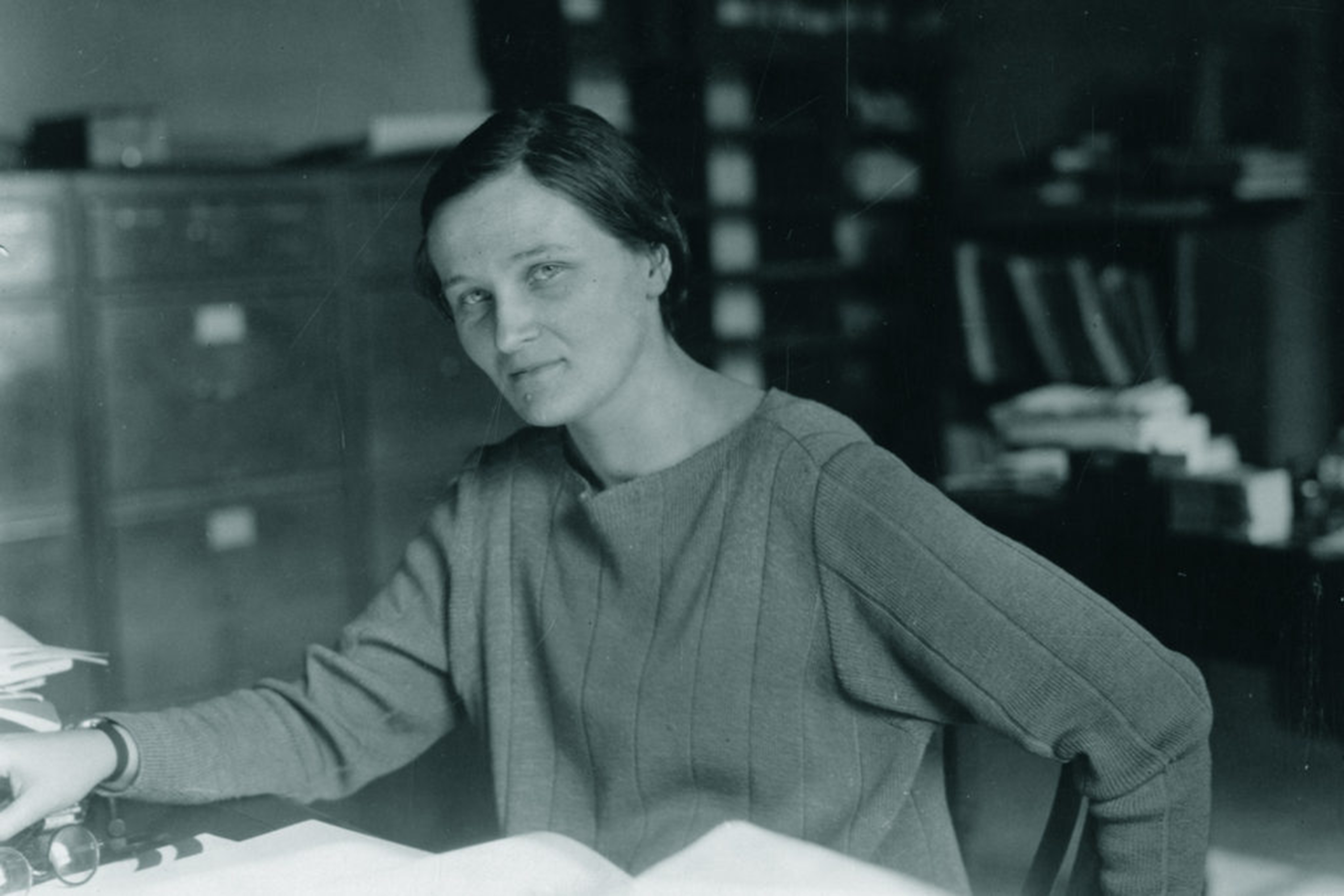
Cecilia Payne at Harvard College Observatory
Who Was Cecilia Payne?
Cecilia Payne was born in England in the year 1900. Even as a young girl, she showed incredible intelligence and a strong interest in science. She worked very hard in school and earned a scholarship to Cambridge in 1919.
Although Cambridge didn’t offer degrees to women at the time, she was still able to study three subjects: botany, physics, and chemistry. During her first year, she attended a lecture by Arthur Eddington, who had just returned from an expedition to observe a total solar eclipse. During that expedition, he was able to prove Einstein’s theory of relativity.
This lecture deeply inspired Cecilia. From that moment, she promised herself she would go on to study physics and astronomy.
However, there weren’t many opportunities for women in the UK who wanted to pursue astronomy and physics. Fortunately, she met Harlow Shapley, who was the director of Harvard Observatory, who mentioned that a graduate program would be opening soon. With a glowing reference letter from Arthur Eddington, Cecilia applied and was accepted. In 1923, she sailed to America to begin her studies under Shapley’s guidance.
To understand how she made this discovery, we need to look at her PhD thesis in more detail. It’s split up into 3 parts
1. The Physical Groundwork – An overview of the science at the time.
2. Her Theory of Thermal Ionization – Where she applied her background in quantum physics.
3. Additional Deductions – The section she’s most famous for- stars are made of Hydrogen!
Part 1: The Groundwork
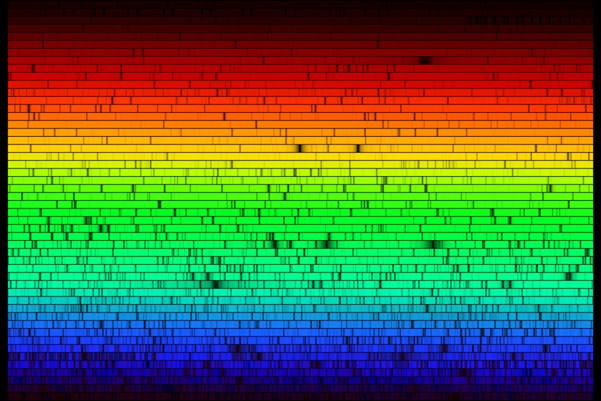
Spectrum from the Sun. N.A.Sharp, NOAO/NSO/Kitt Peak FTS/AURA/NSF
By this point in time, scientists already knew quite a lot about light we get from stars. When you split up the light from a star with a prism, you get a rainbow - red all the way to violet. We call this the visible spectrum of light.
When you look at this spectrum more closely, you start to see dark lines. These dark bands appear where elements in the outer layers of the star absorb some of the light coming from its centre. This phenomenon had been known since the 1800s, when scientists discovered that each element has its own unique set of spectral lines—its own fingerprint.
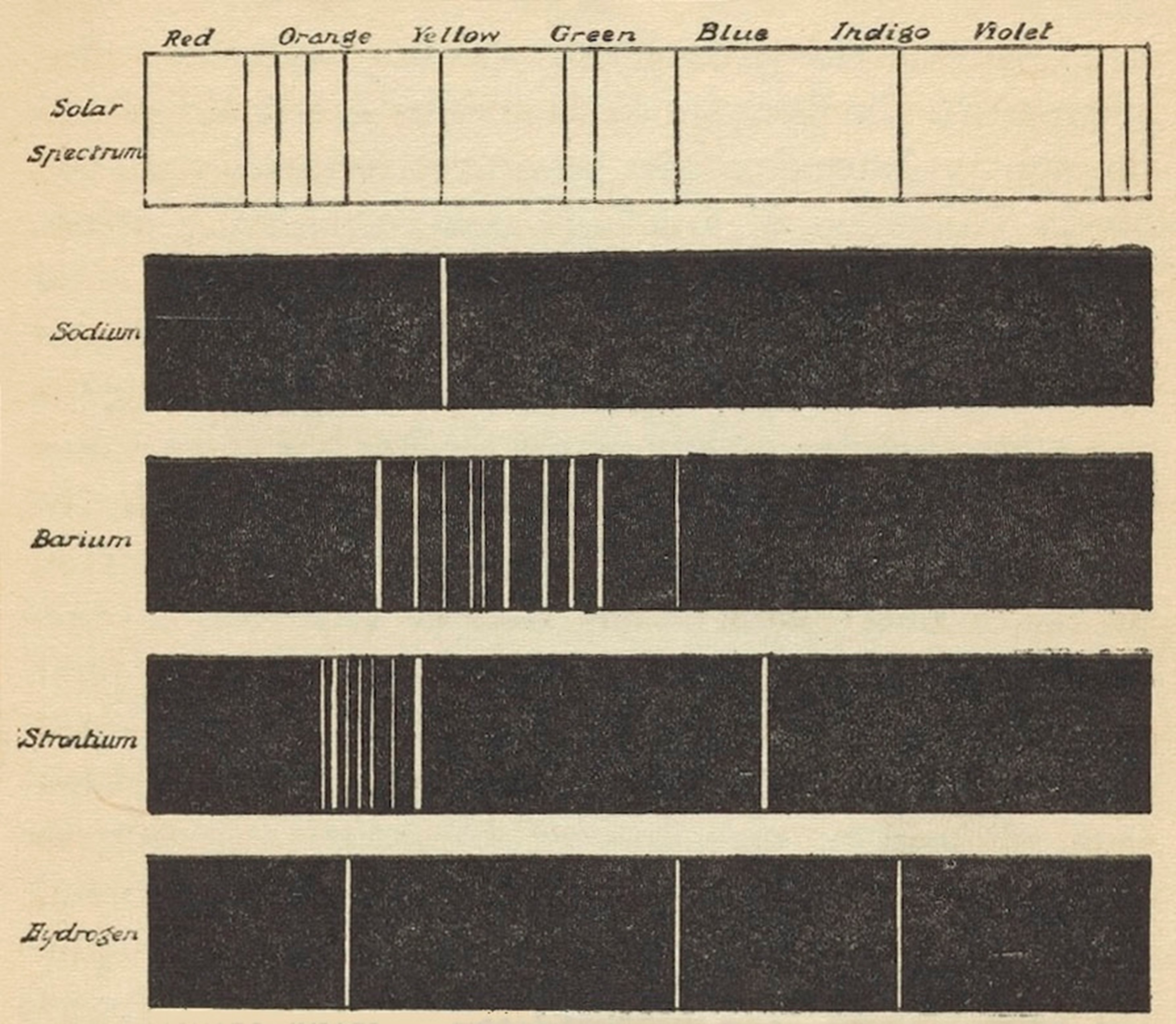
The spectra of different elements. The Romance of Modern Chemistry, 1909. Science History Institute
By observing these lines in starlight, scientists could determine which elements were present in stars. And it turned out that stars contained the same elements found on Earth. However, scientists didn’t yet know the ratios of those elements. They assumed stars had a similar composition to Earth: mostly heavy elements like rock and metal, with just a sprinkling of lighter elements like oxygen and hydrogen.
When Cecilia Payne arrived at Harvard in 1923, she was assigned to analyse stellar spectra. She wasn’t the first woman to do this kind of work—Harvard had a long history of women contributing to astronomical research. These women were known as the Harvard Computers, and they analysed the vast amounts of data coming from the observatory.
Women were often preferred for this work because it was believed they were more patient, more attentive to detail—and, unfortunately, because they could be paid less.
One of the most famous Harvard Computers was Annie Jump Cannon, who is best known for organizing stars into groups based on their spectral lines. Not all stars had the same spectra—there were subtle differences in the lines. Annie Jump Cannon categorized stars into types like O-type and G-type, a system still used today.

Annie Jump-Cannon at Harvard Observatory, Smithsonian Institution Archives
However, Cannon didn’t investigate the physical reasons behind these spectral differences. Astronomers assumed it had something to do with the stars’ temperatures, but no one had proven it—until Cecilia Payne.
Part 2: Stellar Classes
Payne had an edge over other Harvard Computers: she was familiar with the emerging field of quantum mechanics. These lines we see on the spectrum arise from the behaviour of electrons inside atoms.
Atoms consist of a positive nucleus and negative electrons orbiting in specific energy levels. When an atom absorbs energy—say, from red light—an electron jumps to a higher level. This removes that wavelength from the spectrum, creating a dark line.
Payne’s key insight was that temperature determines which spectral lines appear.

An atom absorbing light. NASA
An atom absorbing light. NASA In hotter environments, electrons are already excited, so it takes more energetic light—like blue—to push them further. In extremely hot stars, electrons can gain enough energy to escape the atom entirely, ionizing it. Ionized atoms can’t absorb light in the same way, so no spectral lines appear.
Payne used an equation from Indian phycisist Meghnad Saha which allowed her to calculate the percentage of atoms ionized at a given temperature. She applied this to the spectra of many stars, combining Saha’s theory with Annie Jump Cannon’s stellar classification system. Two years later, she completed her groundbreaking PhD thesis.
Before Payne, stars were classified by the strength of their spectral lines, without understanding why they varied. Her work showed that temperature was the key factor, linking it directly to spectral class.
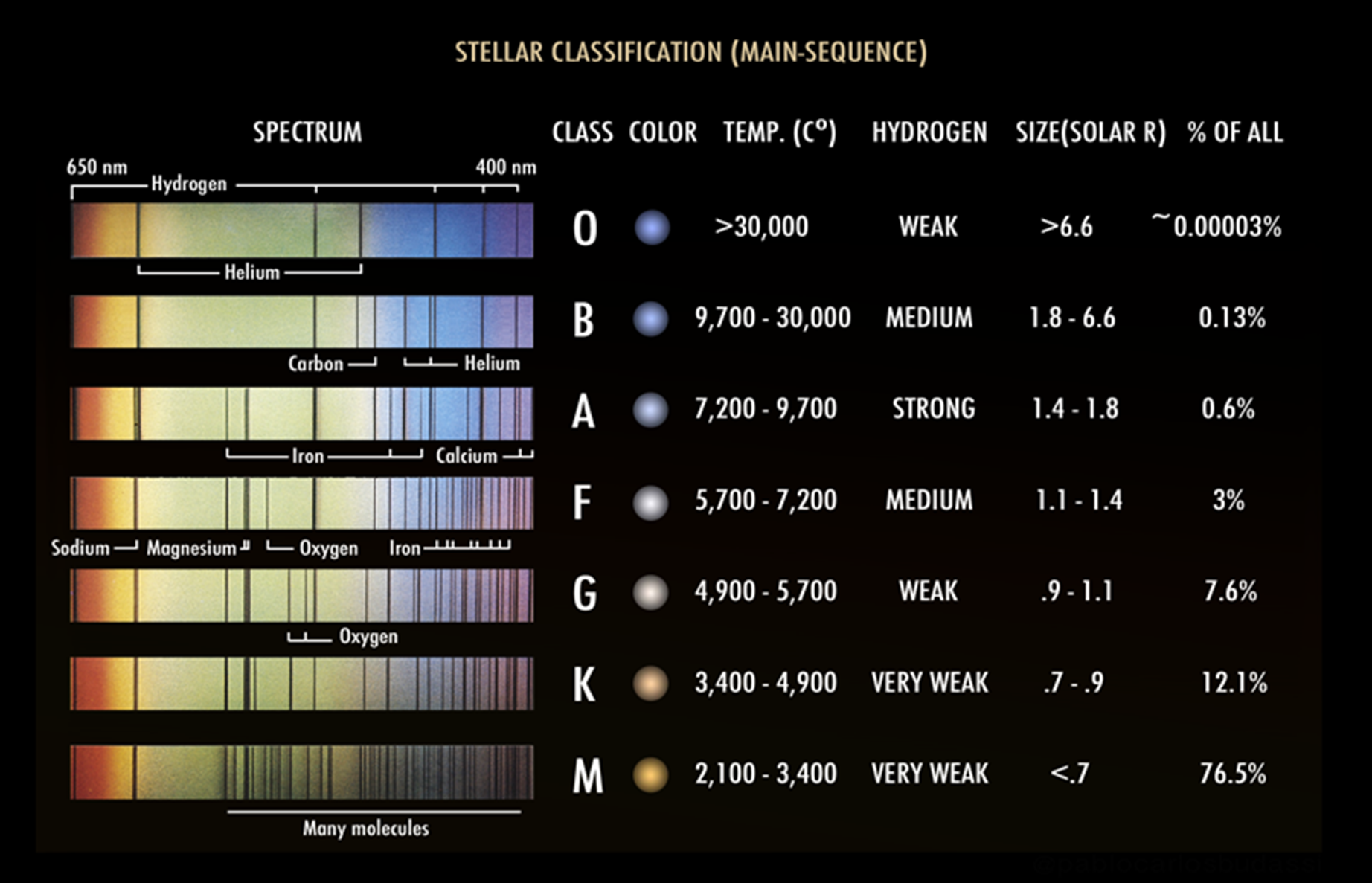
Harvard Spectral Classification. Pablo Carlos Budassi
Part 3: Stars Are Made of Hydrogen!
Now we come to Part Three of Cecilia Payne’s thesis: Additional Deductions from Ionization Theory. In the smallest and final chapter of her PhD, Payne made a revolutionary discovery: hydrogen is the most abundant element in stars.
At low temperatures, a large portion of the star will be made of neutral (non-ionized) atoms. This means the atoms can absorb light, resulting in visible spectral lines from Earth. In stars with a much higher temperature, there may be no neutral atoms left, no light can be absorbed, and no lines appear in the spectrum.
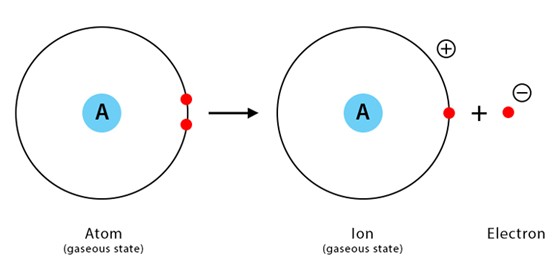
An ionized atom. ChemistryLearner.com
She then asked, what happens when an element is almost fully ionized, perhaps 70 or 80%? Only a small number of neutral atoms remain. These few atoms can still absorb some light, but the resulting spectral line would be very faint. In other words, faint lines in the spectrum indicate that only a small number of neutral atoms are present.
Cecilia then made a key assumption:
The number of neutral atoms needed to produce a faint spectral line is the same for each element.
From this assumption, she could calculate the relative amount between different elements. Cecilia applied this method to every element she could observe. What she found was astonishing: the quantity of hydrogen was far greater than anything else.
In fact, she concluded that hydrogen and helium were a million times more abundant than all the heavier elements.

Table 28 from her PhD, showing that hydrogen is a million times more abundant than other elements. Stellar Atmospheres, 1925, Cecilia Payne
After completing her PhD, Payne needed her work to be reviewed before it could be published. The task fell to Henry Norris Russell, a well-known and respected physicist. He was deeply impressed by her thesis—except for one part: the conclusion that stars are made mostly of hydrogen. He believed this was impossible and warned that if she published that claim, she might be ridiculed by the scientific community.
To protect her career, Payne reluctantly added a note to her thesis, stating that the results were likely not real and would need to be verified. Later in her career she expressed regret about not standing up for her work and giving into authority.
Four years later, Henry Norris Russell conducted his own research and came to the same conclusion: stars are indeed made mostly of hydrogen. Cecilia Payne had been right all along.
The Impact on Astronomy
Cecilia Payne’s discovery was nothing short of revolutionary. The idea that stars are made primarily of gas, rather than rock and metal like Earth, was completely different from what scientists believed at the time.

The Sun and other stars are made of hydrogen gas! NASA/SDO
It’s hard to overstate the impact of Cecilia Payne’s work. It completely transformed our understanding of stars and the universe. Without it, we wouldn’t know how stars generate energy through nuclear fusion, how they are born, how they die, or even how the Big Bang led to the formation of the elements.
In terms of its significance, her discovery stands alongside the work of Copernicus, who showed that the planets orbit the Sun rather than Earth. Like Copernicus, Payne challenged the accepted knowledge of her time—and like him, she wasn’t fully believed or given due credit. Her position as a young woman in science made it even harder for her work to be accepted.
Recognition At Last
Although Cecilia Payne’s groundbreaking discovery wasn’t fully appreciated at the time, other astronomers came to recognize the brilliance of her work in the years that followed. In 1960, renowned astronomer Otto Struve described her PhD as “the most brilliant thesis ever written in astronomy.”
After completing her PhD, Cecilia continued her research and built an extraordinary career. She became the first woman to be appointed a professor at Harvard University, and later, the first woman to chair the Department of Astronomy—a remarkable achievement in a field that had long excluded women from leadership roles.
We hope you enjoyed today’s article and learning all about Cecilia Payne and her incredible discovery!

Cecilia Payne-Gaposchkin. Science History Institute
[checked_out] => 0 [checked_out_time] => 0000-00-00 00:00:00 [catid] => 34 [created] => 2025-05-27 11:02:09 [created_by] => 52030 [created_by_alias] => [modified] => 2025-05-27 11:03:52 [modified_by] => 52030 [modified_by_name] => Hannah Matterson [publish_up] => 2025-05-27 11:02:09 [publish_down] => 0000-00-00 00:00:00 [images] => {"image_intro":"images\/AAA\/CP-10.jpg","float_intro":"","image_intro_alt":"","image_intro_caption":"","image_fulltext":"","float_fulltext":"","image_fulltext_alt":"","image_fulltext_caption":""} [urls] => {"urla":false,"urlatext":"","targeta":"","urlb":false,"urlbtext":"","targetb":"","urlc":false,"urlctext":"","targetc":""} [attribs] => {"show_title":"","link_titles":"","show_tags":"","show_intro":"","info_block_position":"","info_block_show_title":"","show_category":"","link_category":"","show_parent_category":"","link_parent_category":"","show_author":"","link_author":"","show_create_date":"","show_modify_date":"","show_publish_date":"","show_item_navigation":"","show_icons":"","show_print_icon":"","show_email_icon":"","show_vote":"","show_hits":"","show_noauth":"","urls_position":"","alternative_readmore":"","article_layout":"","show_publishing_options":"","show_article_options":"","show_urls_images_backend":"","show_urls_images_frontend":""} [metadata] => {"robots":"","author":"","rights":"","xreference":""} [metakey] => [metadesc] => [access] => 1 [hits] => 6975 [xreference] => [featured] => 0 [language] => * [readmore] => 13950 [state] => 1 [category_title] => Latest News [category_route] => uncategorised/latest-news [category_access] => 1 [category_alias] => latest-news [author] => Hannah Matterson [author_email] => hannah@kielderobservatory.org [parent_title] => ROOT [parent_id] => 1 [parent_route] => [parent_alias] => root [rating] => [rating_count] => [published] => 1 [parents_published] => 1 [alternative_readmore] => [layout] => [params] => Joomla\Registry\Registry Object ( [data:protected] => stdClass Object ( [article_layout] => _:default [show_title] => 1 [link_titles] => 0 [show_intro] => 1 [info_block_position] => 0 [info_block_show_title] => 0 [show_category] => 0 [link_category] => 0 [show_parent_category] => 0 [link_parent_category] => 0 [show_author] => 0 [link_author] => 0 [show_create_date] => 0 [show_modify_date] => 0 [show_publish_date] => 0 [show_item_navigation] => 0 [show_vote] => 0 [show_readmore] => 1 [show_readmore_title] => 0 [readmore_limit] => 100 [show_tags] => 0 [show_icons] => 0 [show_print_icon] => 0 [show_email_icon] => 0 [show_hits] => 0 [show_noauth] => 0 [urls_position] => 0 [show_publishing_options] => 1 [show_article_options] => 1 [save_history] => 1 [history_limit] => 10 [show_urls_images_frontend] => 0 [show_urls_images_backend] => 1 [targeta] => 0 [targetb] => 0 [targetc] => 0 [float_intro] => right [float_fulltext] => none [category_layout] => _:blog [show_category_heading_title_text] => 1 [show_category_title] => 0 [show_description] => 1 [show_description_image] => 0 [maxLevel] => 1 [show_empty_categories] => 0 [show_no_articles] => 1 [show_subcat_desc] => 1 [show_cat_num_articles] => 0 [show_cat_tags] => 1 [show_base_description] => 1 [maxLevelcat] => -1 [show_empty_categories_cat] => 0 [show_subcat_desc_cat] => 1 [show_cat_num_articles_cat] => 1 [num_leading_articles] => 0 [num_intro_articles] => 27 [num_columns] => 1 [num_links] => 4 [multi_column_order] => 0 [show_subcategory_content] => 0 [show_pagination_limit] => 1 [filter_field] => hide [show_headings] => 1 [list_show_date] => 0 [date_format] => [list_show_hits] => 1 [list_show_author] => 1 [orderby_pri] => order [orderby_sec] => rdate [order_date] => published [show_pagination] => 1 [show_pagination_results] => 1 [show_featured] => show [show_feed_link] => 1 [feed_summary] => 0 [feed_show_readmore] => 0 [show_page_heading] => 0 [layout_type] => blog [menu_text] => 1 [menu_show] => 0 [secure] => 0 [page_title] => Latest News [page_description] => Kielder Observatory Astronomical Society [page_rights] => [robots] => [access-view] => 1 ) [separator] => . ) [displayDate] => 2025-05-27 11:02:09 [slug] => 449:what-are-stars-made-of-100-year-anniversary [parent_slug] => [catslug] => 34:latest-news [event] => stdClass Object ( [afterDisplayTitle] => [beforeDisplayContent] => [afterDisplayContent] => ) [text] =>
In May 1925, a young woman published a paper that completely changed our view of the universe. In this article, astronomer Rosie dives into how the composition of stars was discovered!
)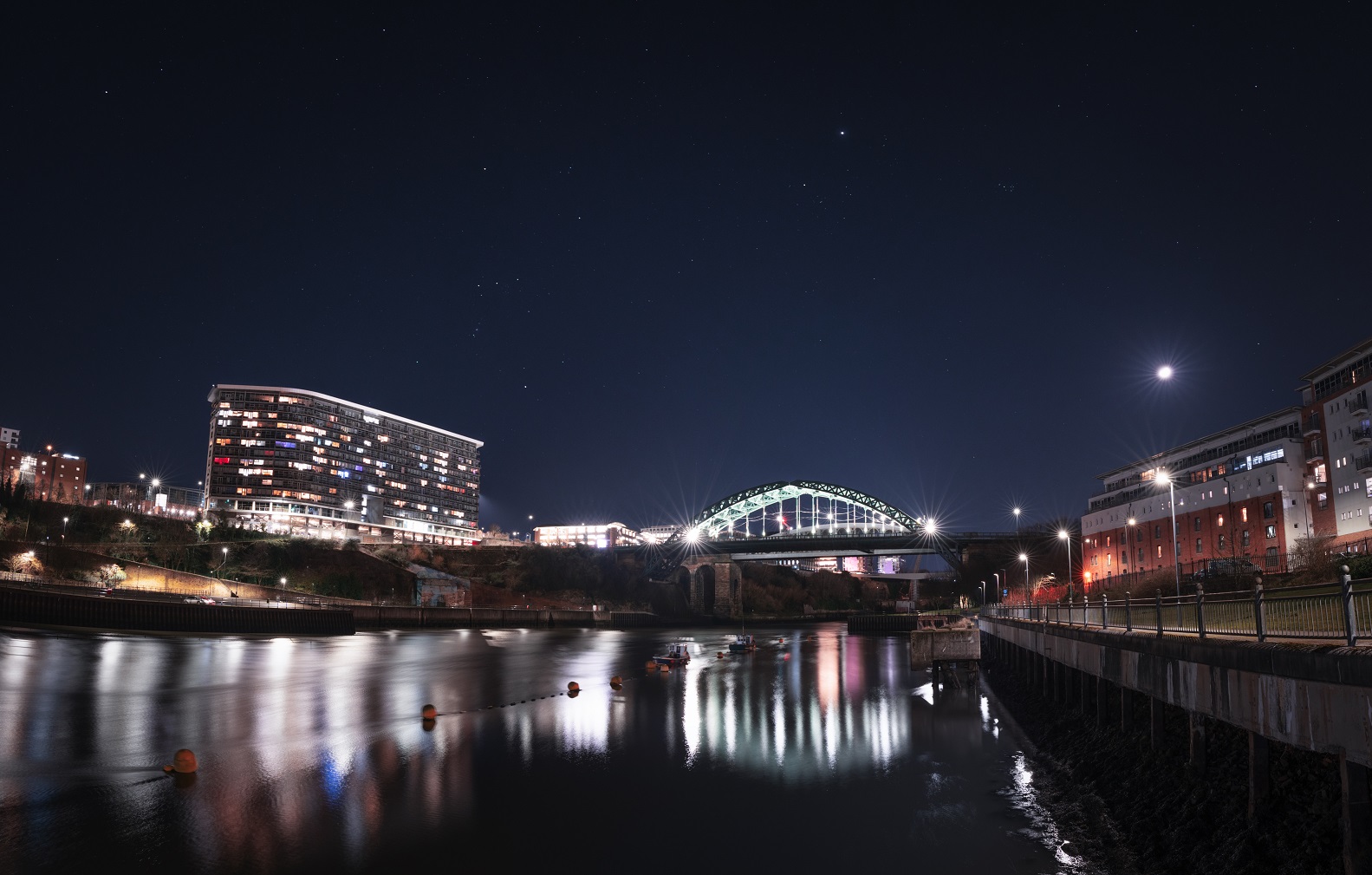
Sunderland Starlight
Kielder Observatory travels to the City of Sunderland to capture the night sky and hear your experiences of the looking up at the stars.
Read Time
2 minutes
Kielder Observatory travels to the City of Sunderland to capture the night sky and hear your experiences of the looking up at the stars.
[fulltext] =>
Sunderland Starlight
In anticipation of the opening of Sunderland's brand new Culture House facility, Kielder Observatory took up the mission to capture the night skies above the city in a series of images and to explore how the night sky enriches the lives of the people who live there.
As a first step, Dan Monk, our Director of Astrophotography, spent several nights through the winter capturing starlight in various locations around Sunderland (his hometown!), and produced a limited series of astrophotgraphy images of landmarks. We ran a drop-in session in the city centre for residents of Astral, Planet and Solar House to talk about astronomy, and our team of astronomers and inflatable planetarium were at City Hall in March for a astro-filled Saturday. We've been working with creator Sharon Race who has been in Sunderland Library capturing people's memories and personal experiences of stargazing.
We have lots of connections to the city and were delighted to be asked to take part in Culture House celebrations, the new building is slated to open in October at Riverside Sunderland. The imagery and words will be shared on the screen at Keel Square - watch this space!
---
Do you live or work in Sunderland? Do you have a particular memory of a night you remember looking up at the cosmos above the city or nearby?



[checked_out] => 0 [checked_out_time] => 0000-00-00 00:00:00 [catid] => 34 [created] => 2025-05-13 15:14:59 [created_by] => 21099 [created_by_alias] => [modified] => 2025-05-13 16:19:56 [modified_by] => 21099 [modified_by_name] => Miss Heather Woodfine [publish_up] => 2025-05-13 15:42:31 [publish_down] => 0000-00-00 00:00:00 [images] => {"image_intro":"images\/Blog-Images\/Riverside_-_sml.jpg","float_intro":"","image_intro_alt":"Sunderland riverside at night","image_intro_caption":"","image_fulltext":"images\/Blog-Images\/Riverside_-_sml.jpg","float_fulltext":"","image_fulltext_alt":"Sunderland riverside at night","image_fulltext_caption":""} [urls] => {"urla":false,"urlatext":"","targeta":"","urlb":false,"urlbtext":"","targetb":"","urlc":false,"urlctext":"","targetc":""} [attribs] => {"show_title":"0","link_titles":"","show_tags":"","show_intro":"0","info_block_position":"","info_block_show_title":"","show_category":"","link_category":"","show_parent_category":"","link_parent_category":"","show_author":"","link_author":"","show_create_date":"","show_modify_date":"","show_publish_date":"","show_item_navigation":"","show_icons":"","show_print_icon":"","show_email_icon":"","show_vote":"","show_hits":"","show_noauth":"","urls_position":"","alternative_readmore":"","article_layout":"KIE:news","show_publishing_options":"","show_article_options":"","show_urls_images_backend":"","show_urls_images_frontend":""} [metadata] => {"robots":"","author":"","rights":"","xreference":""} [metakey] => [metadesc] => [access] => 1 [hits] => 7766 [xreference] => [featured] => 0 [language] => * [readmore] => 2447 [state] => 1 [category_title] => Latest News [category_route] => uncategorised/latest-news [category_access] => 1 [category_alias] => latest-news [author] => Miss Heather Woodfine [author_email] => Heather@kielderobservatory.org [parent_title] => ROOT [parent_id] => 1 [parent_route] => [parent_alias] => root [rating] => [rating_count] => [published] => 1 [parents_published] => 1 [alternative_readmore] => [layout] => [params] => Joomla\Registry\Registry Object ( [data:protected] => stdClass Object ( [article_layout] => _:default [show_title] => 1 [link_titles] => 0 [show_intro] => 1 [info_block_position] => 0 [info_block_show_title] => 0 [show_category] => 0 [link_category] => 0 [show_parent_category] => 0 [link_parent_category] => 0 [show_author] => 0 [link_author] => 0 [show_create_date] => 0 [show_modify_date] => 0 [show_publish_date] => 0 [show_item_navigation] => 0 [show_vote] => 0 [show_readmore] => 1 [show_readmore_title] => 0 [readmore_limit] => 100 [show_tags] => 0 [show_icons] => 0 [show_print_icon] => 0 [show_email_icon] => 0 [show_hits] => 0 [show_noauth] => 0 [urls_position] => 0 [show_publishing_options] => 1 [show_article_options] => 1 [save_history] => 1 [history_limit] => 10 [show_urls_images_frontend] => 0 [show_urls_images_backend] => 1 [targeta] => 0 [targetb] => 0 [targetc] => 0 [float_intro] => right [float_fulltext] => none [category_layout] => _:blog [show_category_heading_title_text] => 1 [show_category_title] => 0 [show_description] => 1 [show_description_image] => 0 [maxLevel] => 1 [show_empty_categories] => 0 [show_no_articles] => 1 [show_subcat_desc] => 1 [show_cat_num_articles] => 0 [show_cat_tags] => 1 [show_base_description] => 1 [maxLevelcat] => -1 [show_empty_categories_cat] => 0 [show_subcat_desc_cat] => 1 [show_cat_num_articles_cat] => 1 [num_leading_articles] => 0 [num_intro_articles] => 27 [num_columns] => 1 [num_links] => 4 [multi_column_order] => 0 [show_subcategory_content] => 0 [show_pagination_limit] => 1 [filter_field] => hide [show_headings] => 1 [list_show_date] => 0 [date_format] => [list_show_hits] => 1 [list_show_author] => 1 [orderby_pri] => order [orderby_sec] => rdate [order_date] => published [show_pagination] => 1 [show_pagination_results] => 1 [show_featured] => show [show_feed_link] => 1 [feed_summary] => 0 [feed_show_readmore] => 0 [show_page_heading] => 0 [layout_type] => blog [menu_text] => 1 [menu_show] => 0 [secure] => 0 [page_title] => Latest News [page_description] => Kielder Observatory Astronomical Society [page_rights] => [robots] => [access-view] => 1 ) [separator] => . ) [displayDate] => 2025-05-13 15:14:59 [slug] => 448:sunderland-starlight [parent_slug] => [catslug] => 34:latest-news [event] => stdClass Object ( [afterDisplayTitle] => [beforeDisplayContent] => [afterDisplayContent] => ) [text] =>
Kielder Observatory travels to the City of Sunderland to capture the night sky and hear your experiences of the looking up at the stars.
)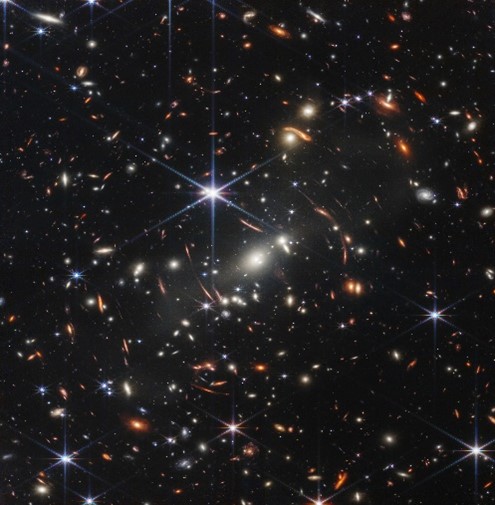
AAA: How do we know how far away stuff is?
When you look up at the night sky, it's easy to wonder: how do we actually know how faraway the moon, the stars, and the galaxies are? After all, we can't stretch a tape measure across space!
Astronomers have developed clever methods to unlock the vast scales of the universe, step by step - building whats known as the Cosmic Distance Ladder.
From bouncing radar signals off nearby planets to measuring the ancient light of the universe itself, each 'step' of the ladder helps us reach further into the cosmos.
Read more to discover how we measure the unimaginable - and just how far our reach really goes.
Read Time
5 minutes
When you look up at the night sky, it's easy to wonder: how do we actually know how faraway the moon, the stars, and the galaxies are? After all, we can't stretch a tape measure across space!
Astronomers have developed clever methods to unlock the vast scales of the universe, step by step - building whats known as the Cosmic Distance Ladder.
From bouncing radar signals off nearby planets to measuring the ancient light of the universe itself, each 'step' of the ladder helps us reach further into the cosmos.
Read more to discover how we measure the unimaginable - and just how far our reach really goes.
[fulltext] =>The Cosmological Distance Ladder
In astronomy we talk about things in are in our visible view like the moon andd galaxies at the edge of the known universe. But since we cant take a measuring stick and physically measure the ddistance to these objects, a very reasonable question is:
How do we measure distances in space?
There are a number of techniques astronomers use. Each one helps us reach a little farther, building on the pervious, which is why we imaginatively call the whole system the "cosmological distance ladder". We rarely measure distances directly - instead we work them out indirectly using observation planets, stars and galaxies that we can actually measure.

Fig 1: A diagram of the Cosmological Distance Ladder
The Solar System
At the bottom of the ladder is our Solar System. Here, we can use radar: we send out a pulse of radio waves toward an object - like the Moon or Neptune - andd wait for the reflection to return. Because we know radio waves travel at the speedd of light, the time it takes tells us how far awayy the object is.
There's even a mirror left on the Moon by astronauts so that we can bounce lasers off it and measur ethe Moons distance with incredible precision. (Fun Fact: the Moon is moving away from us by about 4 inches every year!) We also track spacecraft as they travel through space, giving us extremely accurate measurements of the planets they pass or land on.
Near Stars
For stars beyond our Solar System, we use a method called parallex. This is like holding your thumb out at arm's length and closing one eye, then the other - your thumb seems to move! Astronomers do the same thing with nearby stars, using Earth's orbit around the Sun to get two different viewing angles six months apart. The apparent shift tells us the distance.
Because these stars are so far away, we measure their ddistance in light years - the distance light travels in one year, which is nearly 6 trillion miles! Even our nearest star is 24 trillion miles away, so we just say its 4 light years instead. This is much more digestable for our understanding. Parallex works well for stars upto a few thousand light years away.
Within The Milky Way
To explore further into the Milky Way, we use standard candles - objects like Cepheid variable stars that pulse in a predictible way so we can identify them, and shine with a known brightness. It's like seeing a candle up close and another far away - you can tell which is further away just by how dim it looks. Because we've used parallex to measure the distances to nearby Cepheids, we can use them to estimate distances to far more distant ones - stretching across the Milky Way.
Nearby Galaxies
Outside our galaxy, the Milky Way, it gets a bit harder. Our closest galaxy is over 2.5 million light years away. So we have to use a similar approach as standard candles but instead of using stars we need to use supernova - an exploding star. Specifically, a type 1a supernova which is a type of explosion that has a predictable brightness. Imagine you have a whole bag of the same size balloons. If you blow them up too much they will all explode at the same size. Type 1 supernovas do this, and when they do explode they can outshine all the other stars in their galaxy so we can see them and measure their brightness.
Faraway Galaxies
At the top of the ladder, we're peering deep into the universe. Light from distant galaxies stretches as the universe expands - a phenomenon called redshift. The more redshifted the light, the farther away the galaxy is. By comparing the amount of redshift to the known rate of expansion of the universe (called the Hubble constant) we can estimate how far the light has travelled. This method allows us to map the universe out to billions of light years, approaching the very edge of what we can observe.
The actual eddge of the observable universe
The oldest light in the universe - the Cosmic Microwave Background - is the final step. This light comes from just 380,000 years after the Big Bang and has been travelling through space ever since. It's stretched so much by the expansion of the universe that we now detect it as microwaves, rather than visible light.
This gives us a boundary: the edge of the observable universe, about 13.8 billion light years away (though the actual size of the universe may be far larger).
These techniques - from radar to redshift - make up the Cosmic Distance Ladder. Each rung buildd on the one below it, allowing us to map our universe step by step. Together, they form the backbone of mordern astronomy helping us understand the size, shape and age of the universe. And it all begins right here, in our own backyard.
[checked_out] => 72927 [checked_out_time] => 2025-04-29 09:22:21 [catid] => 34 [created] => 2025-04-28 17:23:56 [created_by] => 72927 [created_by_alias] => [modified] => 2025-04-29 09:22:21 [modified_by] => 72927 [modified_by_name] => Lindsey Brown [publish_up] => 2025-04-29 08:59:12 [publish_down] => 0000-00-00 00:00:00 [images] => {"image_intro":"images\/AAA\/JWST2.jpg","float_intro":"","image_intro_alt":"","image_intro_caption":"","image_fulltext":"","float_fulltext":"","image_fulltext_alt":"","image_fulltext_caption":""} [urls] => {"urla":false,"urlatext":"","targeta":"","urlb":false,"urlbtext":"","targetb":"","urlc":false,"urlctext":"","targetc":""} [attribs] => {"show_title":"","link_titles":"","show_tags":"","show_intro":"","info_block_position":"","info_block_show_title":"","show_category":"","link_category":"","show_parent_category":"","link_parent_category":"","show_author":"","link_author":"","show_create_date":"","show_modify_date":"","show_publish_date":"","show_item_navigation":"","show_icons":"","show_print_icon":"","show_email_icon":"","show_vote":"","show_hits":"","show_noauth":"","urls_position":"","alternative_readmore":"","article_layout":"","show_publishing_options":"","show_article_options":"","show_urls_images_backend":"","show_urls_images_frontend":""} [metadata] => {"robots":"","author":"","rights":"","xreference":""} [metakey] => [metadesc] => [access] => 1 [hits] => 7327 [xreference] => [featured] => 0 [language] => * [readmore] => 5207 [state] => 1 [category_title] => Latest News [category_route] => uncategorised/latest-news [category_access] => 1 [category_alias] => latest-news [author] => Lindsey Brown [author_email] => lindsey@kielderobservatory.org [parent_title] => ROOT [parent_id] => 1 [parent_route] => [parent_alias] => root [rating] => [rating_count] => [published] => 1 [parents_published] => 1 [alternative_readmore] => [layout] => [params] => Joomla\Registry\Registry Object ( [data:protected] => stdClass Object ( [article_layout] => _:default [show_title] => 1 [link_titles] => 0 [show_intro] => 1 [info_block_position] => 0 [info_block_show_title] => 0 [show_category] => 0 [link_category] => 0 [show_parent_category] => 0 [link_parent_category] => 0 [show_author] => 0 [link_author] => 0 [show_create_date] => 0 [show_modify_date] => 0 [show_publish_date] => 0 [show_item_navigation] => 0 [show_vote] => 0 [show_readmore] => 1 [show_readmore_title] => 0 [readmore_limit] => 100 [show_tags] => 0 [show_icons] => 0 [show_print_icon] => 0 [show_email_icon] => 0 [show_hits] => 0 [show_noauth] => 0 [urls_position] => 0 [show_publishing_options] => 1 [show_article_options] => 1 [save_history] => 1 [history_limit] => 10 [show_urls_images_frontend] => 0 [show_urls_images_backend] => 1 [targeta] => 0 [targetb] => 0 [targetc] => 0 [float_intro] => right [float_fulltext] => none [category_layout] => _:blog [show_category_heading_title_text] => 1 [show_category_title] => 0 [show_description] => 1 [show_description_image] => 0 [maxLevel] => 1 [show_empty_categories] => 0 [show_no_articles] => 1 [show_subcat_desc] => 1 [show_cat_num_articles] => 0 [show_cat_tags] => 1 [show_base_description] => 1 [maxLevelcat] => -1 [show_empty_categories_cat] => 0 [show_subcat_desc_cat] => 1 [show_cat_num_articles_cat] => 1 [num_leading_articles] => 0 [num_intro_articles] => 27 [num_columns] => 1 [num_links] => 4 [multi_column_order] => 0 [show_subcategory_content] => 0 [show_pagination_limit] => 1 [filter_field] => hide [show_headings] => 1 [list_show_date] => 0 [date_format] => [list_show_hits] => 1 [list_show_author] => 1 [orderby_pri] => order [orderby_sec] => rdate [order_date] => published [show_pagination] => 1 [show_pagination_results] => 1 [show_featured] => show [show_feed_link] => 1 [feed_summary] => 0 [feed_show_readmore] => 0 [show_page_heading] => 0 [layout_type] => blog [menu_text] => 1 [menu_show] => 0 [secure] => 0 [page_title] => Latest News [page_description] => Kielder Observatory Astronomical Society [page_rights] => [robots] => [access-view] => 1 ) [separator] => . ) [displayDate] => 2025-04-28 17:23:56 [slug] => 446:aaa-how-do-we-now-how-far-away-stuff-is [parent_slug] => [catslug] => 34:latest-news [event] => stdClass Object ( [afterDisplayTitle] => [beforeDisplayContent] => [afterDisplayContent] => ) [text] =>
When you look up at the night sky, it's easy to wonder: how do we actually know how faraway the moon, the stars, and the galaxies are? After all, we can't stretch a tape measure across space!
Astronomers have developed clever methods to unlock the vast scales of the universe, step by step - building whats known as the Cosmic Distance Ladder.
From bouncing radar signals off nearby planets to measuring the ancient light of the universe itself, each 'step' of the ladder helps us reach further into the cosmos.
Read more to discover how we measure the unimaginable - and just how far our reach really goes.
)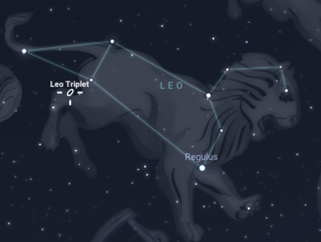
What's Up? May 2025
As the summer nights grow shorter and lighter, May still has plenty to offer skywatchers. Explore, with our astronomer Ishbel, constellations like Leo, Virgo and Hercules, Discover deep-sky treasures including galaxy clusters, and catch the Eta Aquarids meteor shower at its peak. With bright stars forming the Spring Triangle and planets visible morning and night, there's something for every stargazer!
Read Time
4 minutes
As the summer nights grow shorter and lighter, May still has plenty to offer skywatchers. Explore, with our astronomer Ishbel, constellations like Leo, Virgo and Hercules, Discover deep-sky treasures including galaxy clusters, and catch the Eta Aquarids meteor shower at its peak. With bright stars forming the Spring Triangle and planets visible morning and night, there's something for every stargazer!
[fulltext] =>
Hello skies of blue, goodbye skies of dark!
As we enter summer once again, the nights are getting shorter and lighter. On May 1st, the Sun sets at 8:24 PM and rises just 9 hours later at 5:33 AM. By the end of May, sunset shifts to 9:00 PM and sunrise to 4:51 AM.
With the hours after sunset and before sunrise still quite bright, we only get around three hours of true darkness before the sun begins to reclaim the sky. You'll have to stay up a little later to catch the stars - but May has plenty in store to temot you to turn your gaze upwards!
CONSTELLATIONS

Leo the Lion is high in the sky! This lovely, large constellation is easy to spot - its head is shaped like a backwards question mark, its body is formed by a rectangle and a triangle.

Following Leo across the sky from east to west is Virgo, the Maiden. She's a bit trickier to find, as her shape isn't made up of easily recognisable patterns. She's meant to resemble a stick figure lying down and, as the second largest constellation in the sky, she stretches across a wide area. The easiest of her stars to spot are Spica, representing her hand closest to the ground, and Porrima, marking her heart.
 Leo and Virgo are home to some beautiful galaxy clusters, making them excellent telescope targets!
Leo and Virgo are home to some beautiful galaxy clusters, making them excellent telescope targets!
The Leo Cluster is located near the star Algieba (Gamma Leonis) and contains several bright galaxies, including M65, M66, and NGC 3628, collectively known as the Leo Triplet.
The Virgo Cluster can be found by locating the star Vindemiatix (Epsilon Virginis) and moving toward the centre of the constellation. This massive cluster contains over 1,300 galaxies, with notable members like M87, a giant elliptical galaxy.
Bootes is another loud and proud constellation, known as the Herdsman. You can find him arcing out of the panhandle of the Plough towards Arcturus. This bright star marks his waist. From there, you'll see a kite shape extending to the left and two "running legs" to the right.
Spica is a beautiful, bright blue star. Along with Regulus - the star at the bottom of Leo's backwards question mark (his chest) - and Arcturus, the waist of Bootes, they form the Spring Triangle.
Hercules is also prominet in the night sky. This constellation is home to the Great Hercules Cluster (M13), a globular cluster containing several hundered thousand stars. M13 is located between the stars Eta and Zeta Herculis, and is visible with binoculars or a small telescope.
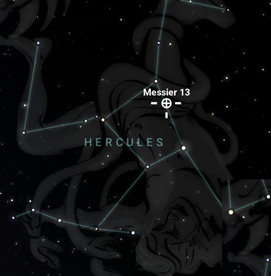

CELESTIAL EVENTS
Eta Aquarids Metero Shower
Peaking on the night of May 5-6th, this meteor shower is known for its fast moving meteors, which travel at about 41 miles per second. Although the Northern Hemisphere typically sees a modest rate of 10-30 meteors per hour, it can still be a delightful sight - especially in the predawn hours.
PLANETS
Venus - Visible in the east before sunrise
Mars - Visible in the east after sunset
Jupiter - Visible in the southwest after sunset
Saturn - Visible in the east before sunrise
MOON PHASES
May 1st - First Quarter Moon
May 11th - Full Moon
May 19th - Last Quarter Moon
May 26th - New Moon
Wishing you clear skies and happy stargazing!
[checked_out] => 0 [checked_out_time] => 0000-00-00 00:00:00 [catid] => 34 [created] => 2025-04-24 15:35:34 [created_by] => 72927 [created_by_alias] => [modified] => 2025-04-24 16:10:22 [modified_by] => 52030 [modified_by_name] => Hannah Matterson [publish_up] => 2025-04-24 15:35:34 [publish_down] => 0000-00-00 00:00:00 [images] => {"image_intro":"images\/whatsup\/WU-May-25-3.png","float_intro":"","image_intro_alt":"","image_intro_caption":"","image_fulltext":"","float_fulltext":"","image_fulltext_alt":"","image_fulltext_caption":""} [urls] => {"urla":false,"urlatext":"","targeta":"","urlb":false,"urlbtext":"","targetb":"","urlc":false,"urlctext":"","targetc":""} [attribs] => {"show_title":"","link_titles":"","show_tags":"","show_intro":"","info_block_position":"","info_block_show_title":"","show_category":"","link_category":"","show_parent_category":"","link_parent_category":"","show_author":"","link_author":"","show_create_date":"","show_modify_date":"","show_publish_date":"","show_item_navigation":"","show_icons":"","show_print_icon":"","show_email_icon":"","show_vote":"","show_hits":"","show_noauth":"","urls_position":"","alternative_readmore":"","article_layout":"","show_publishing_options":"","show_article_options":"","show_urls_images_backend":"","show_urls_images_frontend":""} [metadata] => {"robots":"","author":"","rights":"","xreference":""} [metakey] => [metadesc] => [access] => 1 [hits] => 8148 [xreference] => [featured] => 0 [language] => * [readmore] => 4538 [state] => 1 [category_title] => Latest News [category_route] => uncategorised/latest-news [category_access] => 1 [category_alias] => latest-news [author] => Lindsey Brown [author_email] => lindsey@kielderobservatory.org [parent_title] => ROOT [parent_id] => 1 [parent_route] => [parent_alias] => root [rating] => [rating_count] => [published] => 1 [parents_published] => 1 [alternative_readmore] => [layout] => [params] => Joomla\Registry\Registry Object ( [data:protected] => stdClass Object ( [article_layout] => _:default [show_title] => 1 [link_titles] => 0 [show_intro] => 1 [info_block_position] => 0 [info_block_show_title] => 0 [show_category] => 0 [link_category] => 0 [show_parent_category] => 0 [link_parent_category] => 0 [show_author] => 0 [link_author] => 0 [show_create_date] => 0 [show_modify_date] => 0 [show_publish_date] => 0 [show_item_navigation] => 0 [show_vote] => 0 [show_readmore] => 1 [show_readmore_title] => 0 [readmore_limit] => 100 [show_tags] => 0 [show_icons] => 0 [show_print_icon] => 0 [show_email_icon] => 0 [show_hits] => 0 [show_noauth] => 0 [urls_position] => 0 [show_publishing_options] => 1 [show_article_options] => 1 [save_history] => 1 [history_limit] => 10 [show_urls_images_frontend] => 0 [show_urls_images_backend] => 1 [targeta] => 0 [targetb] => 0 [targetc] => 0 [float_intro] => right [float_fulltext] => none [category_layout] => _:blog [show_category_heading_title_text] => 1 [show_category_title] => 0 [show_description] => 1 [show_description_image] => 0 [maxLevel] => 1 [show_empty_categories] => 0 [show_no_articles] => 1 [show_subcat_desc] => 1 [show_cat_num_articles] => 0 [show_cat_tags] => 1 [show_base_description] => 1 [maxLevelcat] => -1 [show_empty_categories_cat] => 0 [show_subcat_desc_cat] => 1 [show_cat_num_articles_cat] => 1 [num_leading_articles] => 0 [num_intro_articles] => 27 [num_columns] => 1 [num_links] => 4 [multi_column_order] => 0 [show_subcategory_content] => 0 [show_pagination_limit] => 1 [filter_field] => hide [show_headings] => 1 [list_show_date] => 0 [date_format] => [list_show_hits] => 1 [list_show_author] => 1 [orderby_pri] => order [orderby_sec] => rdate [order_date] => published [show_pagination] => 1 [show_pagination_results] => 1 [show_featured] => show [show_feed_link] => 1 [feed_summary] => 0 [feed_show_readmore] => 0 [show_page_heading] => 0 [layout_type] => blog [menu_text] => 1 [menu_show] => 0 [secure] => 0 [page_title] => Latest News [page_description] => Kielder Observatory Astronomical Society [page_rights] => [robots] => [access-view] => 1 ) [separator] => . ) [displayDate] => 2025-04-24 15:35:34 [slug] => 445:what-s-up-may-2025a [parent_slug] => [catslug] => 34:latest-news [event] => stdClass Object ( [afterDisplayTitle] => [beforeDisplayContent] => [afterDisplayContent] => ) [text] =>As the summer nights grow shorter and lighter, May still has plenty to offer skywatchers. Explore, with our astronomer Ishbel, constellations like Leo, Virgo and Hercules, Discover deep-sky treasures including galaxy clusters, and catch the Eta Aquarids meteor shower at its peak. With bright stars forming the Spring Triangle and planets visible morning and night, there's something for every stargazer!
)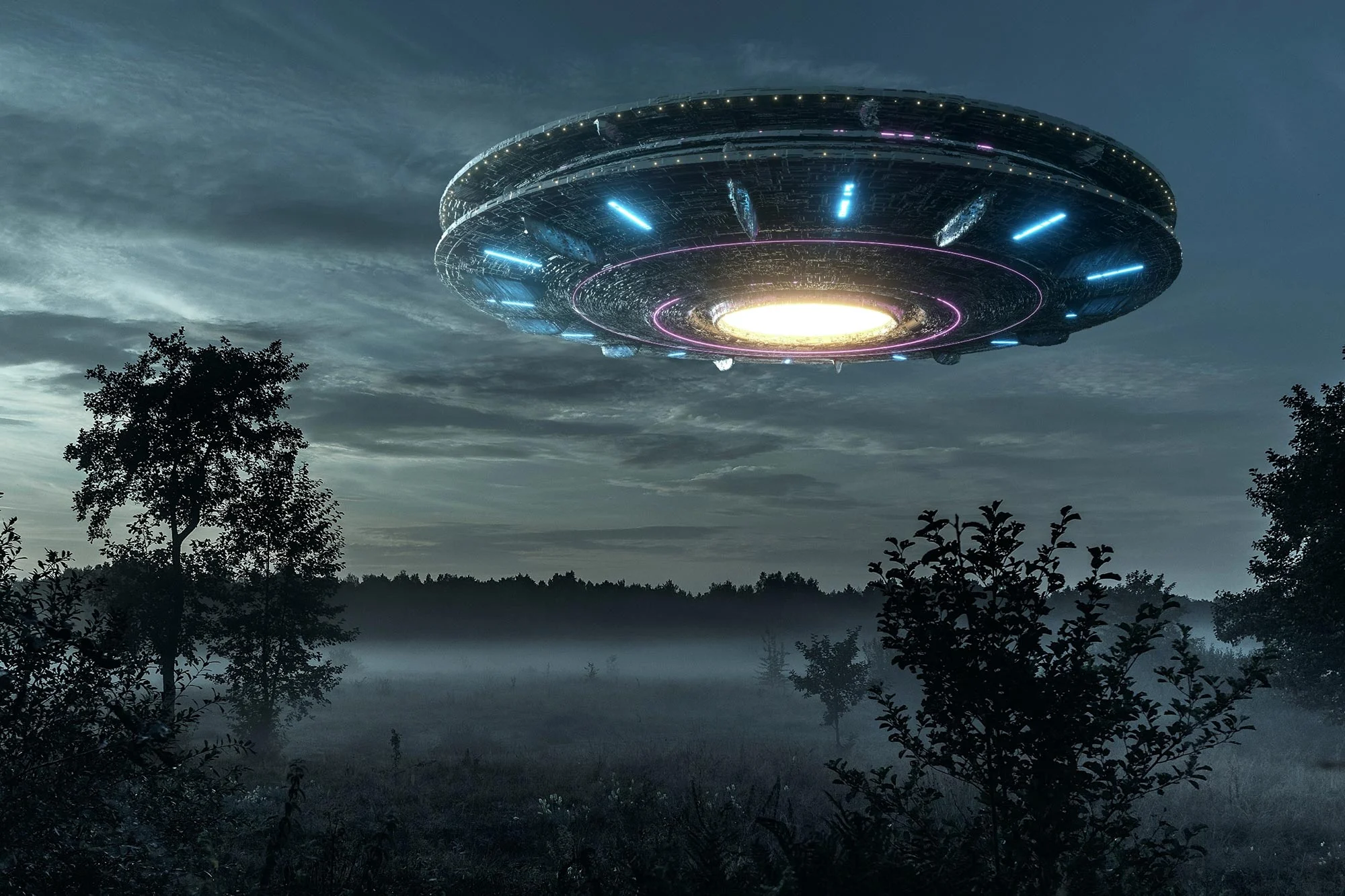
Are Aliens Real?
Is anybody else out there? In this month's Ask An Astronomer, Science communicator and Astronomer James Claxton looks at one of the hottest space topics- are aliens real? Read on to fnd out...
Read Time
10 minutes
Is anybody else out there? In this month's Ask An Astronomer, Science communicator and Astronomer James Claxton looks at one of the hottest space topics- are aliens real? Read on to fnd out...
[fulltext] =>Are Aliens Real?

Image: Sci-Tech Daily
Is anybody else out there? Humanity has long speculated this subject, but the question remains unanswered. Surely with all that space it can’t just be us? In modern times we have catalogued around 6000 worlds orbiting distant stars, known as exoplanets, but we are still searching. Even with today’s modern technology and a healthy dose of determination we only have one data set for life, at least life as we know it, and it’s all here on Earth. What will it take to finally answer this awe-inspiring enquiry, and what would it be like to meet life with an origin far, far away. We are only just beginning to broaden our horizons, but perhaps we will find our cosmic cousins a little closer to home as we investigate previously hidden habitats upon and within the planets and moons of our Solar System.
Main article:
Where is everybody? In the summer of 1950 Italian-American physicist Enrico Fermi was casually chatting with colleagues regarding contemporary UFO reports and the possibility of faster than light travel, when he uttered these words leading to what we now call the Fermi Paradox – a distinct lack of conclusive evidence for extraterrestrial life and the apparently high likelihood of its existence. Utilising ever evolving methods are we coming close to an answer? Given that our Solar system is quite young compared to the rest of the universe and that interstellar travel could be fairly easy given enough time, Earth should have been visited by Aliens, at least that’s the idea. Let’s take a look at the history of this concept, and where our enquiries may lead us in future.
Some of the facts and hypotheses that together highlight the apparent contradiction:
- There are billions of stars in the Milky Way similar to the Sun.
- With high probability, some of these stars have Earth-like planets in a circumstellar habitable zone.
- Many of these stars, and hence their planets, are much older than the Sun. If Earth-like planets are typical, some may have developed intelligent life long ago.
- Some of these civilisations may have developed interstellar travel, a step that humans are investigating.
- Even at the slow pace of envisioned interstellar travel, the Milky Way galaxy could be completely traversed in a few million years.
- Since many of the Sun-like stars are billions of years older than the Sun, the Earth should have already been visited by extraterrestrial civilizations, or at least their probes.
- However, there is no convincing evidence that this has happened
Humans have gazed skyward for thousands of years. Even in pre-history as we wandered the Earth as scattered tribes, people must have looked up into the night sky and wondered what they were seeing and if anybody else was out there, supernatural or otherwise. Some researchers even suggest cave artwork painted thousands of years ago depict astronauts or flying craft suggestive of other worldly visitation. There is no verifiable evidence for this which could purely be down to artistic licence, but it does beg the question whether Earth has been visited in the deep past long before accurate records began. Modern humas have been present for approximately 200,000 years but we believe the Earth is around 4.5 billion years old. That’s a lot of time before we arrived and perhaps E.T has made an appearance once or many times, but we weren’t around to observe such events. This is one possible answer to the Fermi Paradox but there are many other suggestions that could resolve this conundrum. Some people even claim to have been abducted by aliens then returned dazed and confused. The standard response from most would be laughter and ridicule, but we do something similar on the plains of the African Serengeti – sedate an animal, carry out procedures often for research purposes then return them to the bush where they awake groggy and unsure of what just happened. Who knows if this is really happening to us but it’s wise to keep an open mind to aspects of reality we may not fully understand.
A few of the possible solutions to Fermi’s Paradox:
Zoo Hypothesis: Advanced life may be out there, but they are purposefully observing humanity without interference, akin to a zookeeper observing the animals. Modern humans also treat uncontacted tribes of people in the last great wildernesses on Earth in this manner.
The Great Filter: This theory suggests there is a natural ‘filter’ in the evolution of life, preventing civilisations reaching higher technological levels. This filter ranges from the difficulty of life emerging in the first place to the self-destruction of advanced civilisations.
The Dark Forest theory: Advanced civilisations deliberately avoid contact with others due to the potential danger of revealing their existence. The universe in this sense is a ‘dark forest’ where every civilisation is a hunter, and nobody wishes to become prey hence the great silence for fear of being detected.
The Rare Earth Hypothesis: A suggestion that the conditions for life, at least as we know it, are extremely rare in the universe and as a result a detection of other intelligence is unlikely. If this is true we would be some of the lucky few.
Distance of Extraterrestrial Life: If the rare earth hypothesis holds true, the sheer distances involved would make contact extremely difficult, if not impossible.
Perhaps the universe is indeed abundant with life, but it is populated with simple single celled organisms analogous to an amoeba. If this is the case, it would be very difficult to detect from our vantage point. We can from great distances analyse the atmospheres of exoplanets and although this could tell us if a planet is similar to Earth, we would be no further forward confirming life’s presence. If however, we detected something such as CFC gasses (once commonly used in refrigerants which caused ozone depletion in the Earth’s upper atmosphere) enveloping an alien world we would know for sure that intelligent life was present. These gasses do not occur naturally and need to be synthesised by industrial processes. This would be a confirmed detection of a technologically advanced civilisation which we would call a ‘technosignature’.
SETI:
The search for Extraterrestrial Intelligence, or SETI, is a scientific effort to detect evidence of technological life beyond Earth. This is done primarily by analysing radio waves and other sources of electromagnetic radiation from space as well as the study of optical signals – patterns within light that may have been sent with intent from an advanced life form. ‘Breakthrough Listen’ is a large-scale SETI project that uses powerful radio telescopes to search for signals from nearby stars.
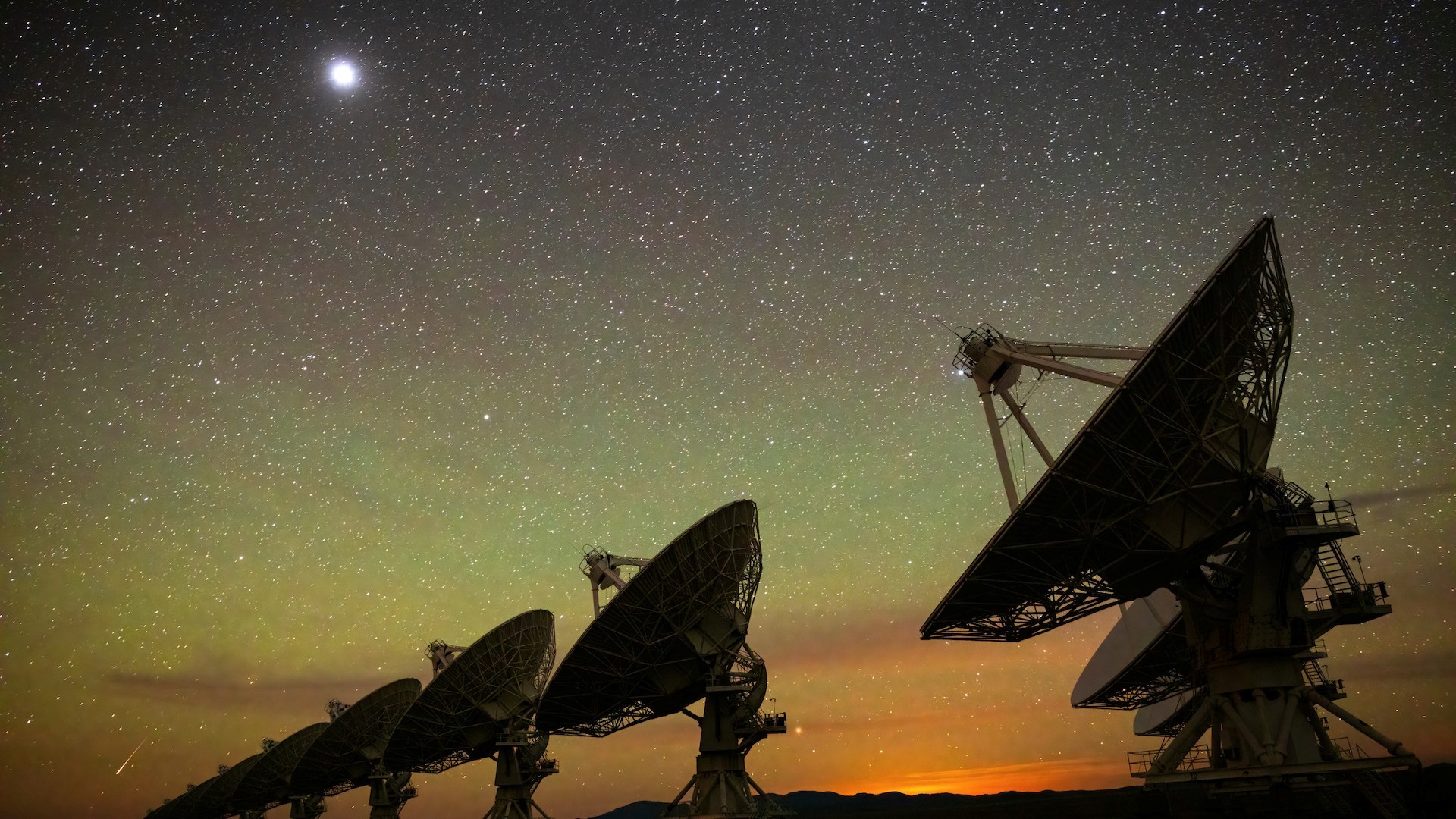
Image: Sci-Tech Daily
The Wow signal was a very strong candidate detected on August 15, 1977, by the Big Ear Radio Telescope at Ohio State University. The astronomer wrote ‘wow’ on the printout of the data as nothing like that had been seen previously and was the kind of signal they were hoping to record. The signal lasted about 72 seconds and was picked up in the direction of the constellation Sagittarius. The source has never been definitively identified and despite numerous attempts the signal has not been detected since adding to the mystery if its origin.
To date there have been no confirmed detections of intelligent life beyond Earth, but the universe is vast, and we have barely begun the search. It may take a very long time to yield a positive result, or we may make a detection of life a little closer to home…
Many moons
There is a chance we may make our first detection of life beyond Earth on one of the many moons in our galactic back garden. We have approximately 290 moons in our solar system, many of which we now think have suitable conditions for life. Take Europa for instance which is one of Jupiter’s 4 primary moons. It is approximately the same size as our moon, but we now believe it has a global subsurface ocean of liquid water, with potentially twice as much water as all of Earth’s oceans combined. It is possible that lifeforms, most likely simple singled celled microorganisms, are swimming around down there. There could even be a whole ecosystem of life and a diverse range of flora and fauna, predators and prey, living in the cold dark depths. Much like the dark chilly depths of Earth’s oceans, Europa too could have life of some description perhaps using bioluminescence which is a chemical reaction creatures use here on Earth to shine light in the darkness.
We have 2 missions currently on route to this world to investigate further – Nasa’s Europa Clipper, and ESA’s JUICE mission. Upon arrival in approximately 5 years, they will perform orbital analysis to further refine the characteristics of Europa and some of the other moons nearby which we also suspect have similar conditions. One directive will be to help identify a suitable landing spot for a future mission which could get below the moons icy outer crust and reach the ocean below. Small robotic submarines dubbed ‘cryobots’ are being designed to swim in these alien waters and seek out anything living there. If Europa has hydrothermal vents on its ocean floor this would be exciting. We think life may have got started in these locations on Earth, warmed by the heat rising from Earth’s interior and in addition dissolving and releasing minerals and nutrients which helps life flourish. Although any life if present would most likely be simple it can’t be ruled out that something a little more substantial could swim across the camera’s field of view. That would surely be the most astounding wildlife documentary ever produced!
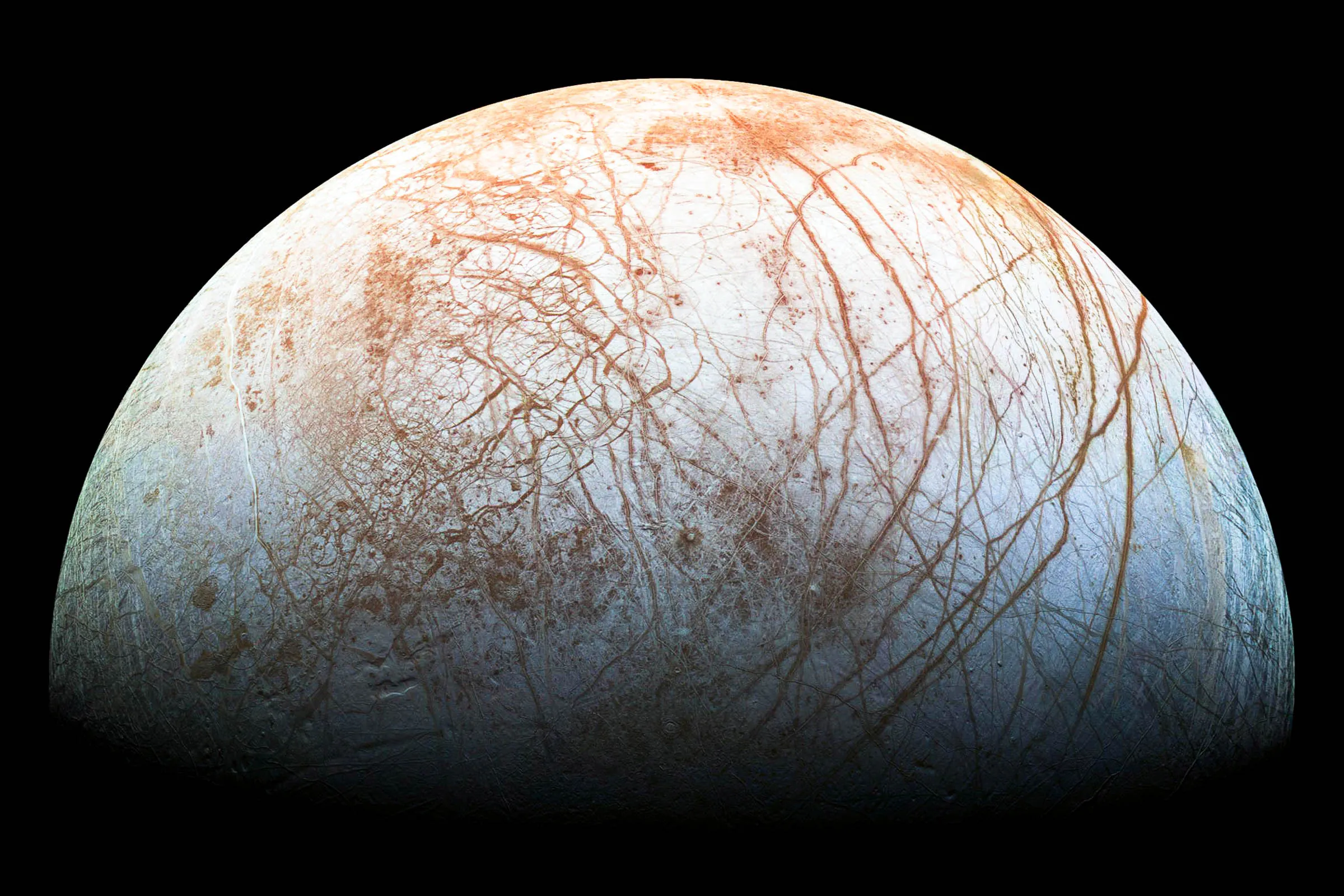
Image: Sci-Tech Daily
Another location that merits further exploration is one of Saturn’s moons – Enceladus. Much like Europa there is a subsurface ocean present. We have in fact flown probes directly through plumes of water erupting from this ocean between cracks in the ice and ‘tasted’ the water ejecting out into space. This is how we know Enceladus has a salty ocean with organic compounds present, much like Earth’s oceans. Enceladus and Europa are not the only moons with these environments. The term ocean moon is now being used to describe such places, and the number of these locations is quickly racking up with some of the moons of Uranus and Neptune showing similar characteristics. Less is known about these moons and further study is needed. Our Solar System could be far more interesting and life friendly than previously imagined, and what we could discover from future missions may re-write our understanding of our place in the cosmos. Who knows what we might find as we venture further into space. We have now discovered approximately 6000 worlds orbiting distant stars and the numbers will just keep going up as accompanying planets are a natural byproduct of star formation. Will we find Earth 2.0, or possibly environments and lifeforms beyond our wildest imaginations.
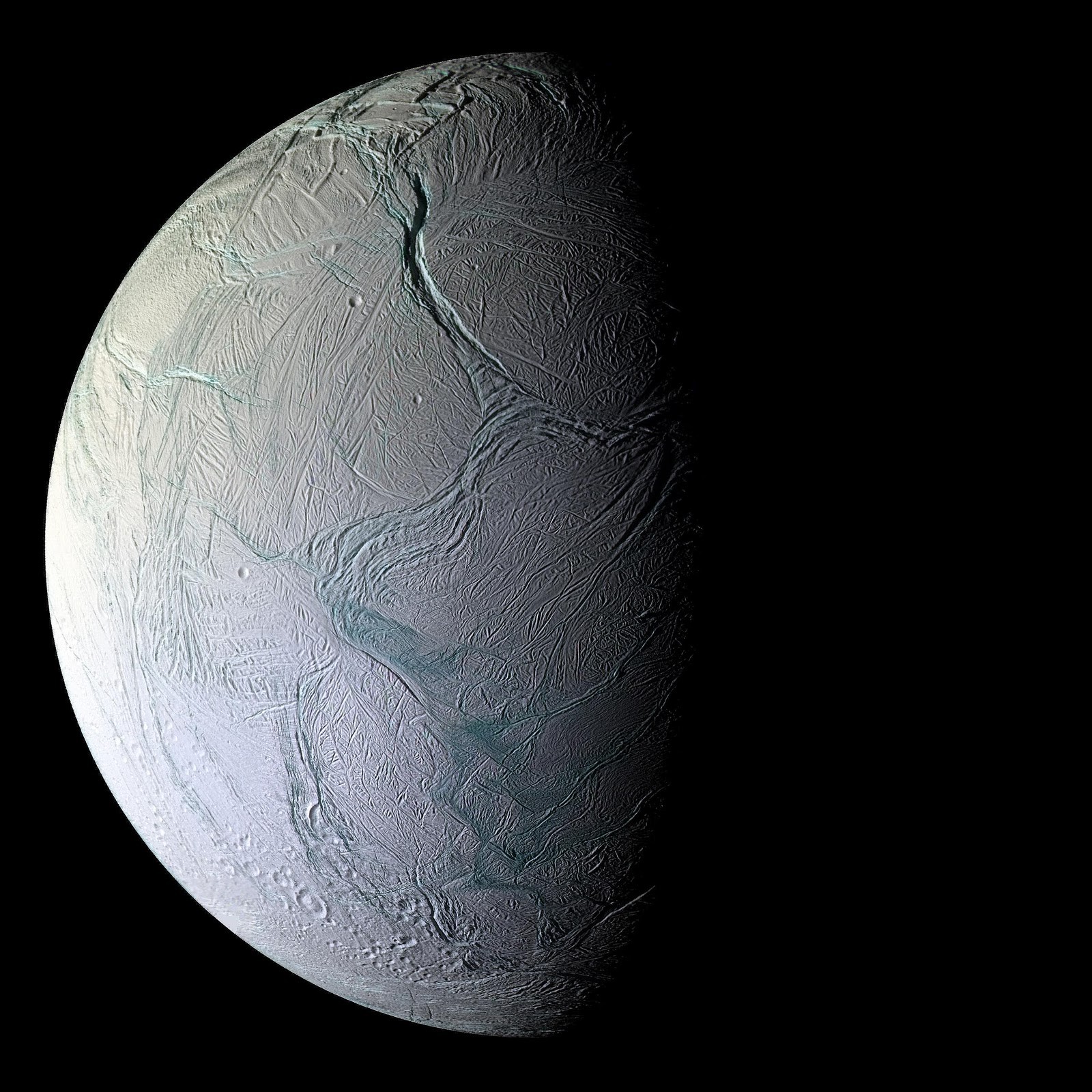
Image: Sci-Tech Daily
If we confirm that life has popped up multiple times with independent origins just within our solar system, this suggests life could be abundant in the universe at large. Soon we will explore these exotic locations in more detail and maybe answer the question once and for all. Looking ahead on this journey of discovery we will perhaps one day sail to the stars and see for ourselves what, and possibly who, is out there.
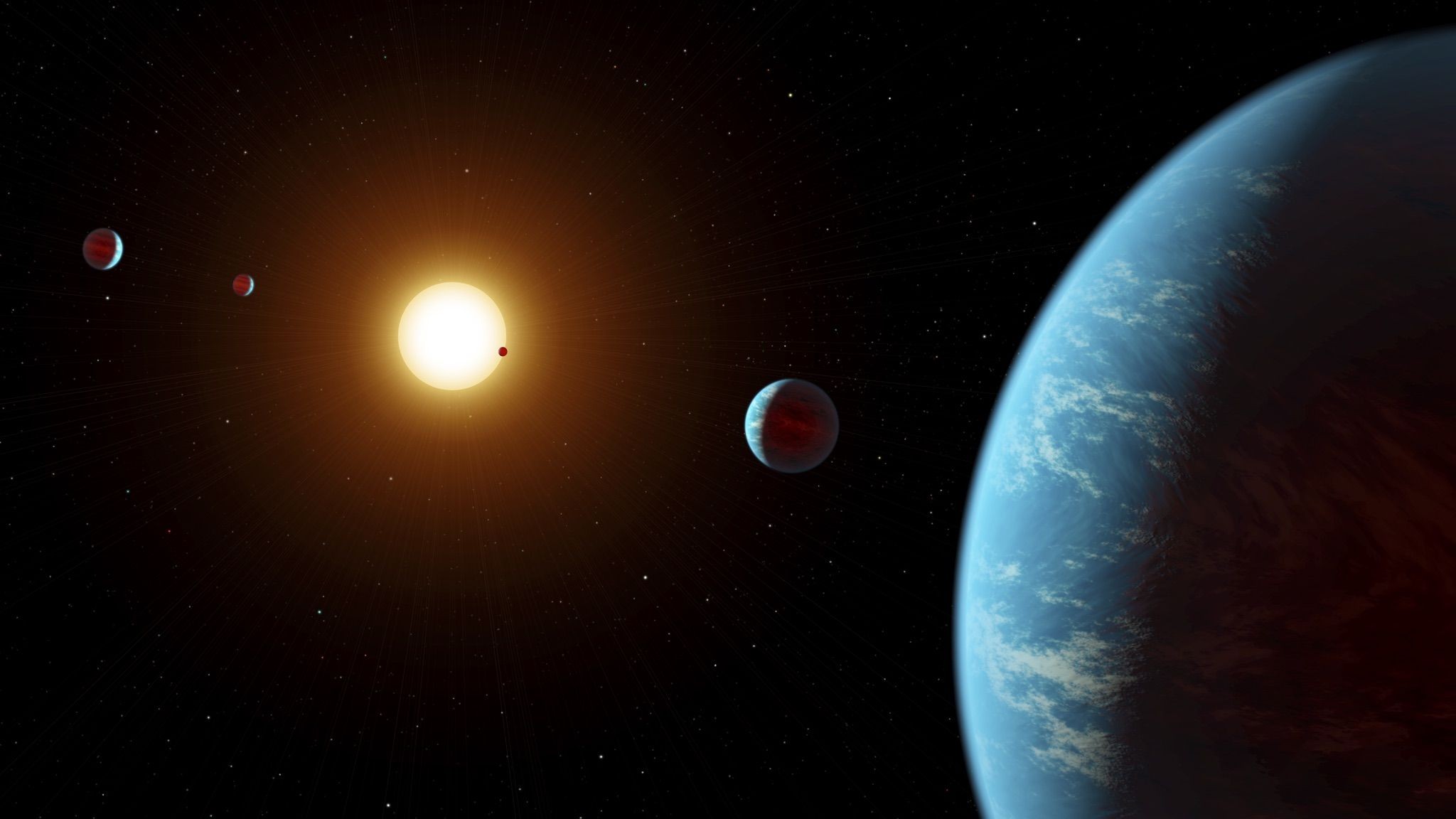
Image: Sci-Tech Daily
[checked_out] => 0 [checked_out_time] => 0000-00-00 00:00:00 [catid] => 34 [created] => 2025-03-26 16:00:38 [created_by] => 52030 [created_by_alias] => [modified] => 2025-04-08 13:56:33 [modified_by] => 294 [modified_by_name] => tr10.support [publish_up] => 2025-03-26 16:00:38 [publish_down] => 0000-00-00 00:00:00 [images] => {"image_intro":"images\/AAA\/Aliens-1.png","float_intro":"","image_intro_alt":"","image_intro_caption":"","image_fulltext":"","float_fulltext":"","image_fulltext_alt":"","image_fulltext_caption":""} [urls] => {"urla":false,"urlatext":"","targeta":"","urlb":false,"urlbtext":"","targetb":"","urlc":false,"urlctext":"","targetc":""} [attribs] => {"show_title":"","link_titles":"","show_tags":"","show_intro":"","info_block_position":"","info_block_show_title":"","show_category":"","link_category":"","show_parent_category":"","link_parent_category":"","show_author":"","link_author":"","show_create_date":"","show_modify_date":"","show_publish_date":"","show_item_navigation":"","show_icons":"","show_print_icon":"","show_email_icon":"","show_vote":"","show_hits":"","show_noauth":"","urls_position":"","alternative_readmore":"","article_layout":"","show_publishing_options":"","show_article_options":"","show_urls_images_backend":"","show_urls_images_frontend":""} [metadata] => {"robots":"","author":"","rights":"","xreference":""} [metakey] => [metadesc] => [access] => 1 [hits] => 8344 [xreference] => [featured] => 0 [language] => * [readmore] => 15159 [state] => 1 [category_title] => Latest News [category_route] => uncategorised/latest-news [category_access] => 1 [category_alias] => latest-news [author] => Hannah Matterson [author_email] => hannah@kielderobservatory.org [parent_title] => ROOT [parent_id] => 1 [parent_route] => [parent_alias] => root [rating] => [rating_count] => [published] => 1 [parents_published] => 1 [alternative_readmore] => [layout] => [params] => Joomla\Registry\Registry Object ( [data:protected] => stdClass Object ( [article_layout] => _:default [show_title] => 1 [link_titles] => 0 [show_intro] => 1 [info_block_position] => 0 [info_block_show_title] => 0 [show_category] => 0 [link_category] => 0 [show_parent_category] => 0 [link_parent_category] => 0 [show_author] => 0 [link_author] => 0 [show_create_date] => 0 [show_modify_date] => 0 [show_publish_date] => 0 [show_item_navigation] => 0 [show_vote] => 0 [show_readmore] => 1 [show_readmore_title] => 0 [readmore_limit] => 100 [show_tags] => 0 [show_icons] => 0 [show_print_icon] => 0 [show_email_icon] => 0 [show_hits] => 0 [show_noauth] => 0 [urls_position] => 0 [show_publishing_options] => 1 [show_article_options] => 1 [save_history] => 1 [history_limit] => 10 [show_urls_images_frontend] => 0 [show_urls_images_backend] => 1 [targeta] => 0 [targetb] => 0 [targetc] => 0 [float_intro] => right [float_fulltext] => none [category_layout] => _:blog [show_category_heading_title_text] => 1 [show_category_title] => 0 [show_description] => 1 [show_description_image] => 0 [maxLevel] => 1 [show_empty_categories] => 0 [show_no_articles] => 1 [show_subcat_desc] => 1 [show_cat_num_articles] => 0 [show_cat_tags] => 1 [show_base_description] => 1 [maxLevelcat] => -1 [show_empty_categories_cat] => 0 [show_subcat_desc_cat] => 1 [show_cat_num_articles_cat] => 1 [num_leading_articles] => 0 [num_intro_articles] => 27 [num_columns] => 1 [num_links] => 4 [multi_column_order] => 0 [show_subcategory_content] => 0 [show_pagination_limit] => 1 [filter_field] => hide [show_headings] => 1 [list_show_date] => 0 [date_format] => [list_show_hits] => 1 [list_show_author] => 1 [orderby_pri] => order [orderby_sec] => rdate [order_date] => published [show_pagination] => 1 [show_pagination_results] => 1 [show_featured] => show [show_feed_link] => 1 [feed_summary] => 0 [feed_show_readmore] => 0 [show_page_heading] => 0 [layout_type] => blog [menu_text] => 1 [menu_show] => 0 [secure] => 0 [page_title] => Latest News [page_description] => Kielder Observatory Astronomical Society [page_rights] => [robots] => [access-view] => 1 ) [separator] => . ) [displayDate] => 2025-03-26 16:00:38 [slug] => 440:are-aliens-real [parent_slug] => [catslug] => 34:latest-news [event] => stdClass Object ( [afterDisplayTitle] => [beforeDisplayContent] => [afterDisplayContent] => ) [text] =>Is anybody else out there? In this month's Ask An Astronomer, Science communicator and Astronomer James Claxton looks at one of the hottest space topics- are aliens real? Read on to fnd out...
)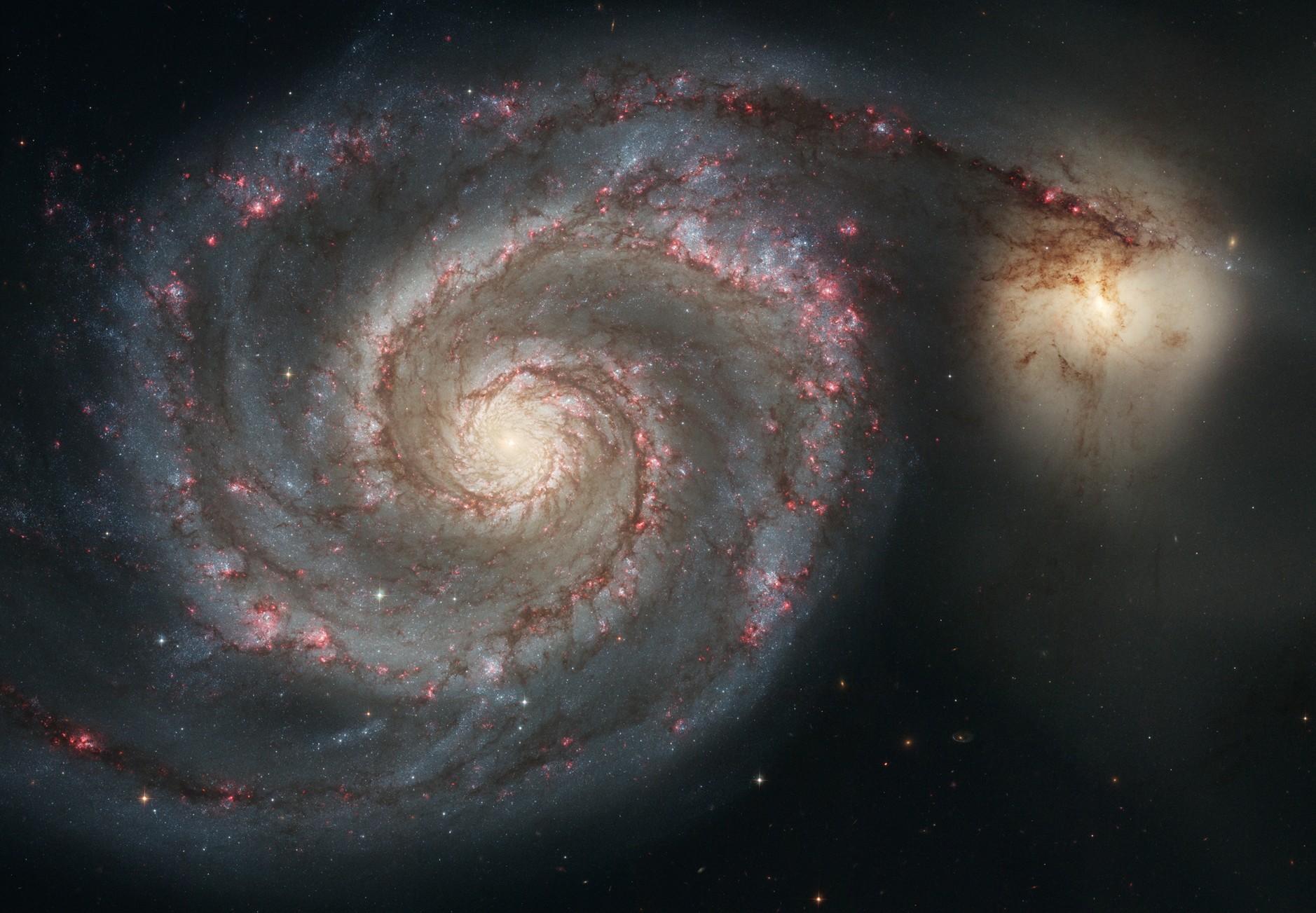
What's Up? April 2025
After a very astronomically eventful March, we move swiftly into April meaning Spring is well and truly underway bringing with it daffodils blooming and lighter nights. This doesn’t spoil the fantastic feast of constellations and objects observable this month in our skies!
Spring means it’s galaxy season at Kielder, so we’ll be pointing out a few for you to try and observe.
Read Time
5 minutes
After a very astronomically eventful March, we move swiftly into April meaning Spring is well and truly underway bringing with it daffodils blooming and lighter nights. This doesn’t spoil the fantastic feast of constellations and objects observable this month in our skies!
Spring means it’s galaxy season at Kielder, so we’ll be pointing out a few for you to try and observe.
[fulltext] =>Constellations
With the magnificent winter constellation of Orion slipping down towards the western horizon relatively soon after sunset, taking with it the Seven Sisters and the brightest of stars, Sirius, we welcome the great constellations of Summer starting to appear in the east.
Appearing just below Boötes (easy to find because of its bright alpha star Arcturus) is the small but impressive constellation of Corona Borealis (Northern Crown) with bright diamond-like star "Alphecca" representing the central jewel. We also start to see Hercules rising higher into the sky offering the chance for us to observe the magnificent “Great Globular Cluster in Hercules” (or M13) which is a cluster of up to 300,000 stars visible through a small telescope. The cluster is 23,000 lightyears distant!
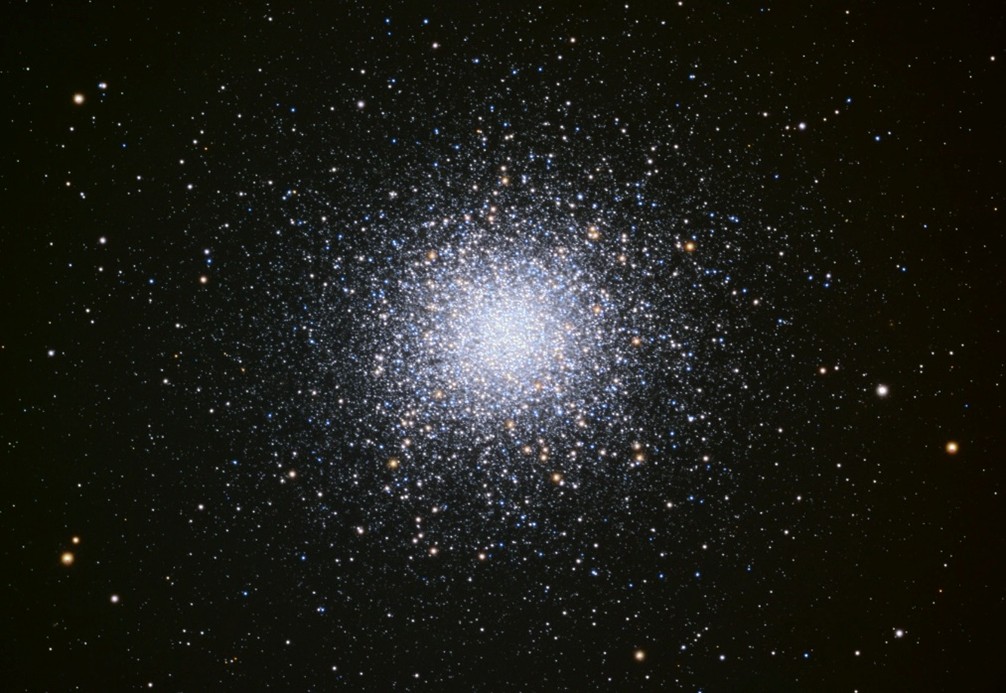
The great globular cluster in Hercules (M13) Image credit: Wikipedia
The small constellation of Lyra rises alongside Hercules containing the brilliantly bright star Vega. Vega seems to twinkle and sparkle like a diamond on account of it’s very bright light refracting as it passes through the Earth’s atmosphere to meet your eye. High above your head near the Zenith (point directly above your position) will be the familiar constellation of Ursa Major (The Great Bear). Most people are familiar with the asterism of “The Plough” making up about a third of the constellation. Other names for it include “The Big Dipper” and “The Saucepan”.
Deep Sky Objects
As mentioned before, Spring means it’s galaxy season and 4 galaxies can be found in close proximity to “The Plough.” The red circles in the image below highlight the location of the galaxies. With Ursa Major being directly overhead, it is the ideal time of year for observing these galaxies.
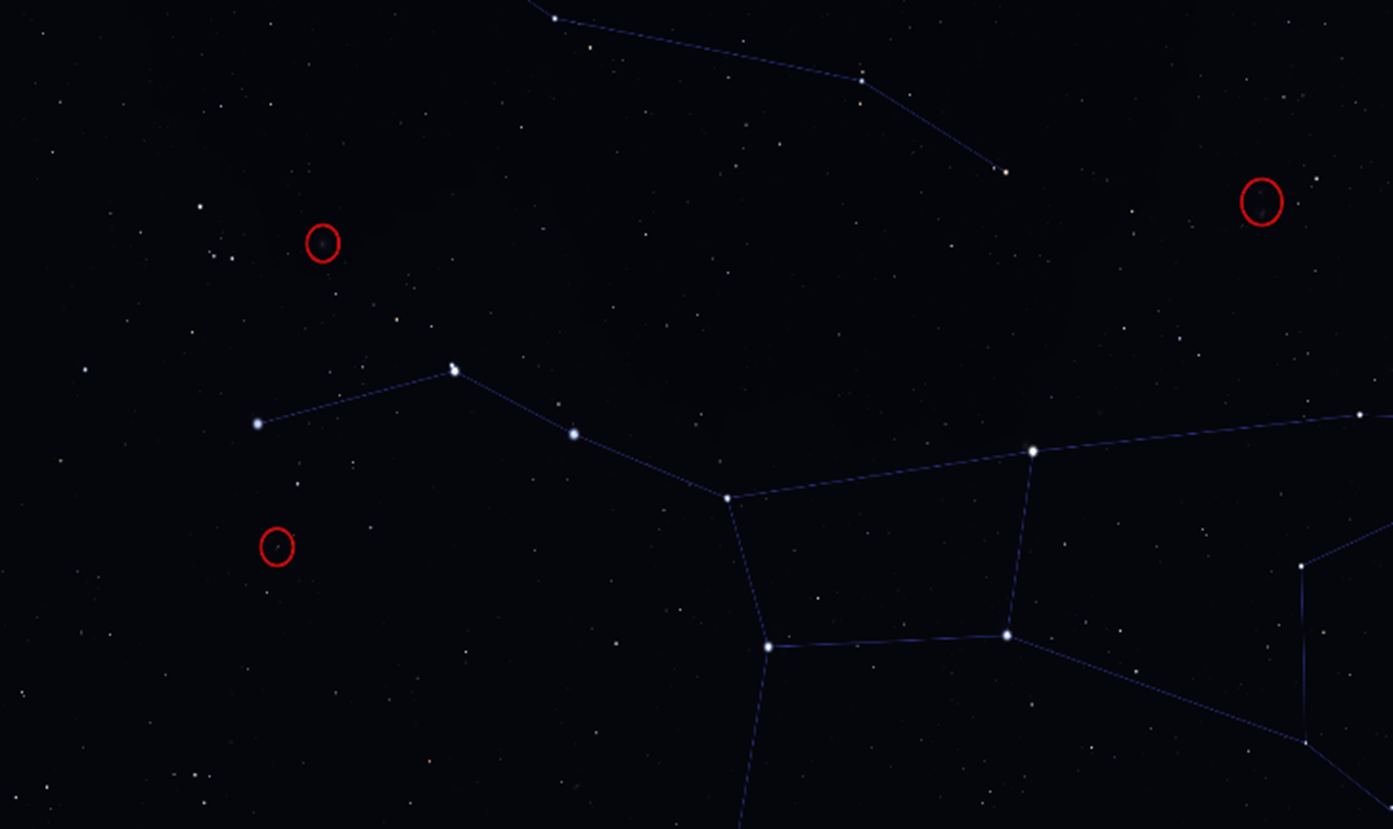
Image Credit: Stellarium
M81 & M82
Bode’s Galaxy (M81) and the Cigar Galaxy (M82) can be seen using a small telescope and are found to the top of the Plough. They are both around 12 million lightyears distant with M81 being a face-on grand design spiral galaxy and M82 being a starburst galaxy. To find them, draw a line between the bottom left and top right star in the pan of the plough and then keep going for about the same distance in the same direction.
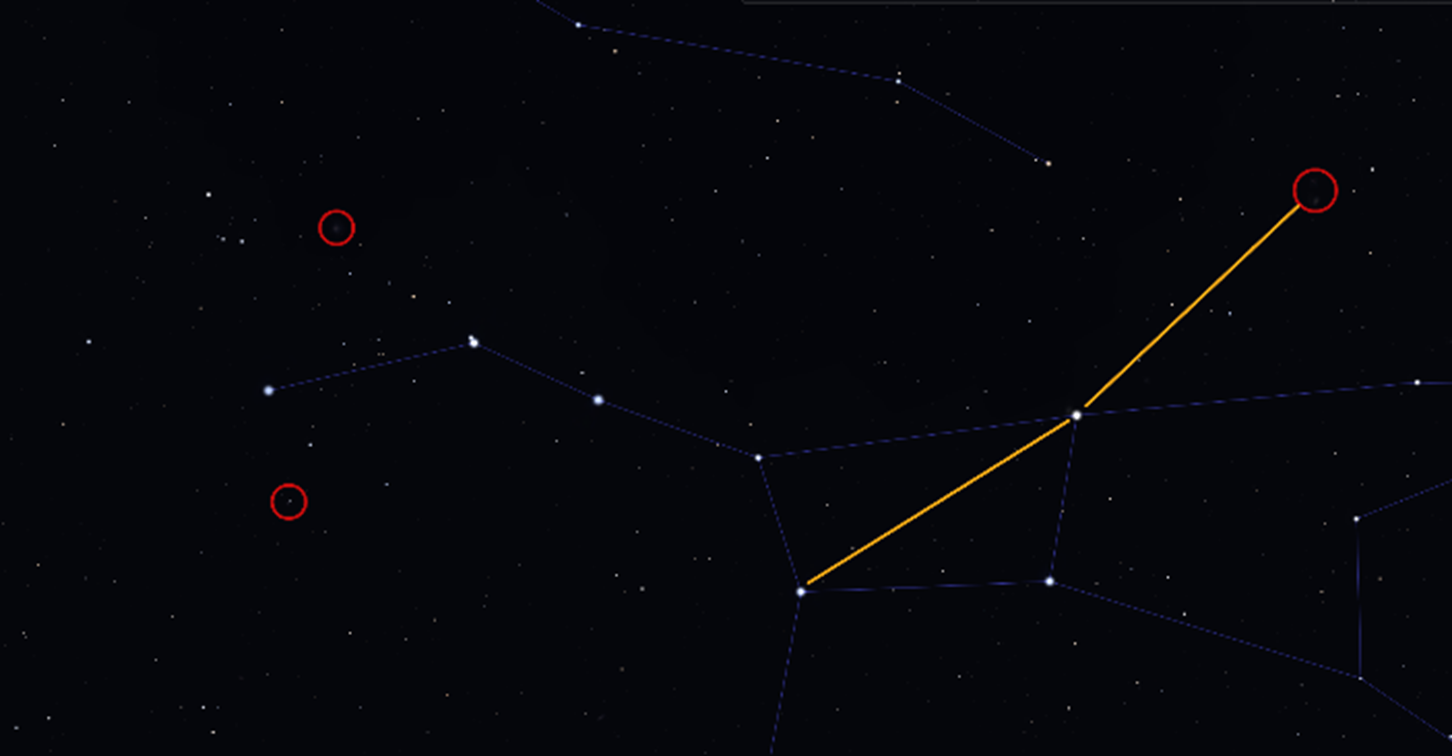
Using the plough to locate M81 & M82. Image credit: Stellarium
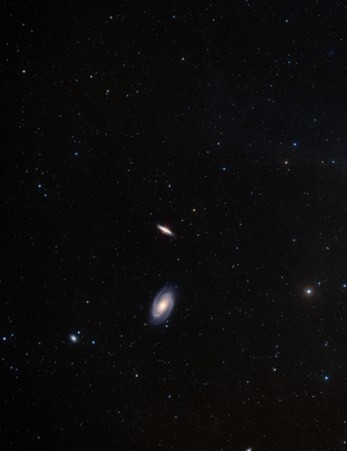
Bode’s galaxy (M81) with Cigar galaxy (M82) above it.
Image credit: ESA
M101
The pinwheel galaxy is regarded by many astronomers to be the most photogenic galaxy to image due to it being face-on and large regions of star-forming nebulas are sprinkled within its spiral arms. The galaxy lies around 21 million lightyears away. It can be found at the top of an imaginary triangle formed by using the first 2 stars of the plough handle (Alkaid & Mizar) as the base.

Draw an imaginary triangle to find M101
Image credit: Stellarium
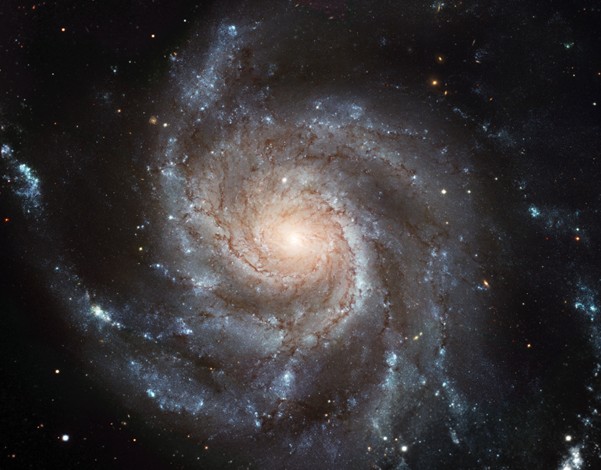
Image credit: ESA
M51
The whirlpool galaxy is the most distant of our selection at a staggering 31 million lightyears away! It was the first galaxy to be described as a spiral when observed by William Parsons, 3rd Earl of Rosse through his 72-inch reflecting telescope at Birr Castle in Ireland in 1845. It can be found below the first star of the plough handle (Alkaid).
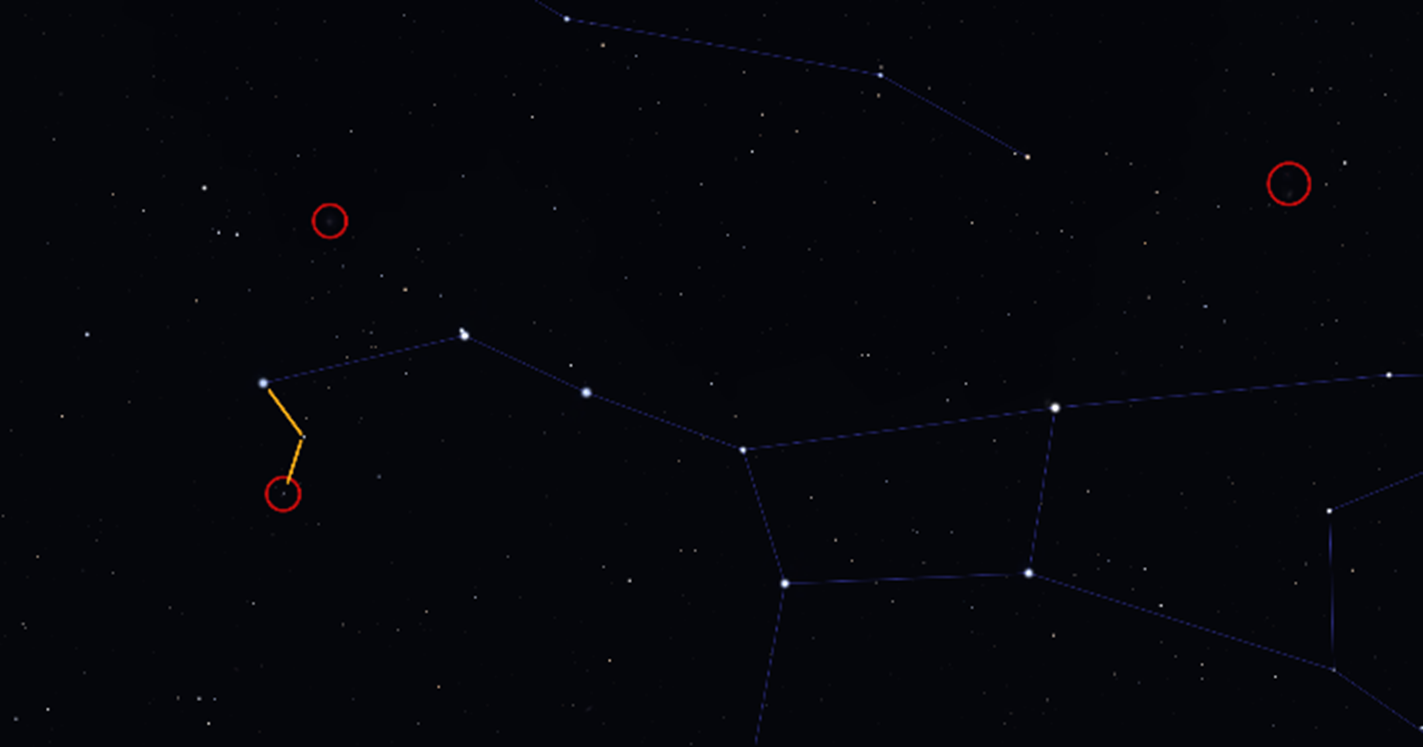
M51 is found under the handle of the plough
Image credit: Stellarium

Image credit: ESA
Meteor showers
The Lyrid meteor shower in 2025 will peak on April 22, but you may see some Lyrids between 16–25 April. The shower will be best viewed in the late evening of April 21 until dawn on April 22. Typically, the shower will produce around 18 meteors per hour in a clear sky and this year, no Moon will be present until after 4am, maximising the chances of seeing the meteors. The radiant, or point from which the meteors appear to come, will be between the constellations Lyra and Hercules and is marked on the image below. The Lyrid meteor shower is associated with Comet C/1861 G1 Thatcher and it is one of the oldest known meteor showers: they have been observed for 2,700 years. (The first recorded sighting of a Lyrid meteor shower goes back to 687 BC by the Chinese.) Don’t forget to make a wish if you see any!
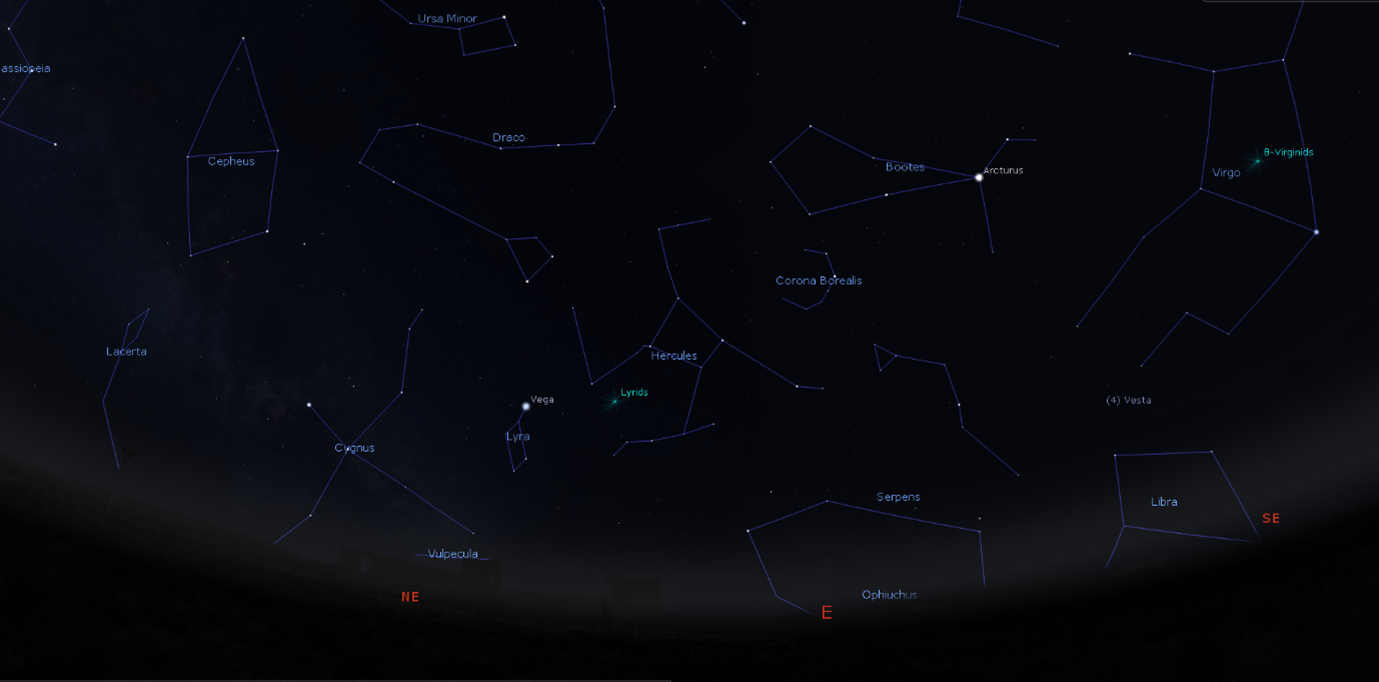
Spring sky looking East showing popular spring constellations and radiant of Lyrid meteor shower.
Image credit: Stellarium
Planets
Both Mars and Jupiter will still be visible throughout most of April although Jupiter will be slipping further towards the western horizon nearer the end of the month.
The Moon
5th April – First Quarter
13th April – Full Moon
21st April – Last Quarter
27th April – New Moon
Have a great Easter and wishing always for clear skies!
[checked_out] => 0 [checked_out_time] => 0000-00-00 00:00:00 [catid] => 34 [created] => 2025-03-26 15:56:21 [created_by] => 52030 [created_by_alias] => [modified] => 2025-03-28 09:35:36 [modified_by] => 52030 [modified_by_name] => Hannah Matterson [publish_up] => 2025-03-26 15:56:21 [publish_down] => 0000-00-00 00:00:00 [images] => {"image_intro":"images\/whatsup\/WUA25-8.jpg","float_intro":"","image_intro_alt":"","image_intro_caption":"","image_fulltext":"","float_fulltext":"","image_fulltext_alt":"","image_fulltext_caption":""} [urls] => {"urla":false,"urlatext":"","targeta":"","urlb":false,"urlbtext":"","targetb":"","urlc":false,"urlctext":"","targetc":""} [attribs] => {"show_title":"","link_titles":"","show_tags":"","show_intro":"","info_block_position":"","info_block_show_title":"","show_category":"","link_category":"","show_parent_category":"","link_parent_category":"","show_author":"","link_author":"","show_create_date":"","show_modify_date":"","show_publish_date":"","show_item_navigation":"","show_icons":"","show_print_icon":"","show_email_icon":"","show_vote":"","show_hits":"","show_noauth":"","urls_position":"","alternative_readmore":"","article_layout":"","show_publishing_options":"","show_article_options":"","show_urls_images_backend":"","show_urls_images_frontend":""} [metadata] => {"robots":"","author":"","rights":"","xreference":""} [metakey] => [metadesc] => [access] => 1 [hits] => 6749 [xreference] => [featured] => 0 [language] => * [readmore] => 9570 [state] => 1 [category_title] => Latest News [category_route] => uncategorised/latest-news [category_access] => 1 [category_alias] => latest-news [author] => Hannah Matterson [author_email] => hannah@kielderobservatory.org [parent_title] => ROOT [parent_id] => 1 [parent_route] => [parent_alias] => root [rating] => [rating_count] => [published] => 1 [parents_published] => 1 [alternative_readmore] => [layout] => [params] => Joomla\Registry\Registry Object ( [data:protected] => stdClass Object ( [article_layout] => _:default [show_title] => 1 [link_titles] => 0 [show_intro] => 1 [info_block_position] => 0 [info_block_show_title] => 0 [show_category] => 0 [link_category] => 0 [show_parent_category] => 0 [link_parent_category] => 0 [show_author] => 0 [link_author] => 0 [show_create_date] => 0 [show_modify_date] => 0 [show_publish_date] => 0 [show_item_navigation] => 0 [show_vote] => 0 [show_readmore] => 1 [show_readmore_title] => 0 [readmore_limit] => 100 [show_tags] => 0 [show_icons] => 0 [show_print_icon] => 0 [show_email_icon] => 0 [show_hits] => 0 [show_noauth] => 0 [urls_position] => 0 [show_publishing_options] => 1 [show_article_options] => 1 [save_history] => 1 [history_limit] => 10 [show_urls_images_frontend] => 0 [show_urls_images_backend] => 1 [targeta] => 0 [targetb] => 0 [targetc] => 0 [float_intro] => right [float_fulltext] => none [category_layout] => _:blog [show_category_heading_title_text] => 1 [show_category_title] => 0 [show_description] => 1 [show_description_image] => 0 [maxLevel] => 1 [show_empty_categories] => 0 [show_no_articles] => 1 [show_subcat_desc] => 1 [show_cat_num_articles] => 0 [show_cat_tags] => 1 [show_base_description] => 1 [maxLevelcat] => -1 [show_empty_categories_cat] => 0 [show_subcat_desc_cat] => 1 [show_cat_num_articles_cat] => 1 [num_leading_articles] => 0 [num_intro_articles] => 27 [num_columns] => 1 [num_links] => 4 [multi_column_order] => 0 [show_subcategory_content] => 0 [show_pagination_limit] => 1 [filter_field] => hide [show_headings] => 1 [list_show_date] => 0 [date_format] => [list_show_hits] => 1 [list_show_author] => 1 [orderby_pri] => order [orderby_sec] => rdate [order_date] => published [show_pagination] => 1 [show_pagination_results] => 1 [show_featured] => show [show_feed_link] => 1 [feed_summary] => 0 [feed_show_readmore] => 0 [show_page_heading] => 0 [layout_type] => blog [menu_text] => 1 [menu_show] => 0 [secure] => 0 [page_title] => Latest News [page_description] => Kielder Observatory Astronomical Society [page_rights] => [robots] => [access-view] => 1 ) [separator] => . ) [displayDate] => 2025-03-26 15:56:21 [slug] => 439:what-s-up-april-2025 [parent_slug] => [catslug] => 34:latest-news [event] => stdClass Object ( [afterDisplayTitle] => [beforeDisplayContent] => [afterDisplayContent] => ) [text] =>
After a very astronomically eventful March, we move swiftly into April meaning Spring is well and truly underway bringing with it daffodils blooming and lighter nights. This doesn’t spoil the fantastic feast of constellations and objects observable this month in our skies!
Spring means it’s galaxy season at Kielder, so we’ll be pointing out a few for you to try and observe.
)
What’s Up? March 2025
In this month's What’s Up, astronomer Rosie talks us through March’s highlights.
I don’t know about you, but I’m sure glad to see the first daffodils growing. It was a long winter! Spring and sunshine are creeping in and it turns out, March is jam packed with celestial and astronomical events! Let’s dive in.
Read Time
6 minutes
In this month's What’s Up, astronomer Rosie talks us through March’s highlights.
I don’t know about you, but I’m sure glad to see the first daffodils growing. It was a long winter! Spring and sunshine are creeping in and it turns out, March is jam packed with celestial and astronomical events! Let’s dive in.
Spring Equinox
Thursday 20th of March marks the first day of Spring in the Northern Hemisphere! It’s the time where the Sun sits right above the Earth’s equator meaning both hemispheres receive approximately the same amount day light. In the north, we call it the spring or vernal equinox, as the days are starting to get longer than the nights again.
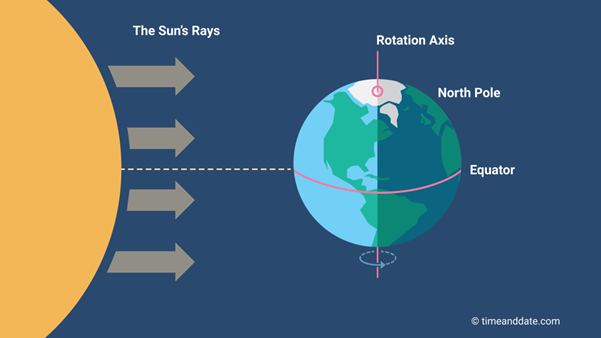
Image: On the equinox, the Sun sits right above the equator. Credit: timeanddate.com
Constellations
Our beloved winter constellations such as Orion, Canis Major and Taurus are still nicely visible in the night sky in the early evening. But as the night gets late, we are seeing our spring favourites out: Cancer (though always a tricky one to see because it’s so faint), Leo, Virgo, and personally for me the constellation that means winter is over - Boötes.
Boötes contains the orange giant Arcturus, the fourth brightest star in the night sky. For many of us at the observatory, seeing Arcturus means spring is officially here.

Image: Boötes, the herdsman in Greek mythology. Arcturus is the brightest star in the constellation, and is an orange giant only 37 light years away (very close!) Credit: Stellarium
Planets
The planetary parade that graced our skies in February will be starting to dwindle. Saturn will be gone by the end of February, and Venus and Mercury will stick around for a few days at the beginning of March but then sadly leave. Jupiter and Mars however are stubborn and will still be visible for the whole month! Uranus as well to those with a telescope.
Mercury, the little rascal, is always the hardest of the naked-eye planets to see. It’s the closest to the Sun so there’s such a short window either before sunset or sunrise to capture it. However, leading up to the 8th of March it will be at its greatest elongation east, meaning it will be the farthest east from the Sun from our perspective.
This is a fantastic chance to try and spot Mercury if you’ve never seen the planet before. If there’s a clear evening during the first week of March, go outside and find the lowest horizon possible towards the west. Start looking just after sunset at about 18:00 UTC. You will see Venus, shining like a diamond, but you want to look below Venus very close to the horizon. As the days go on Mercury will also become dimmer, so I’d recommend the 3rd - 7th of March if possible.
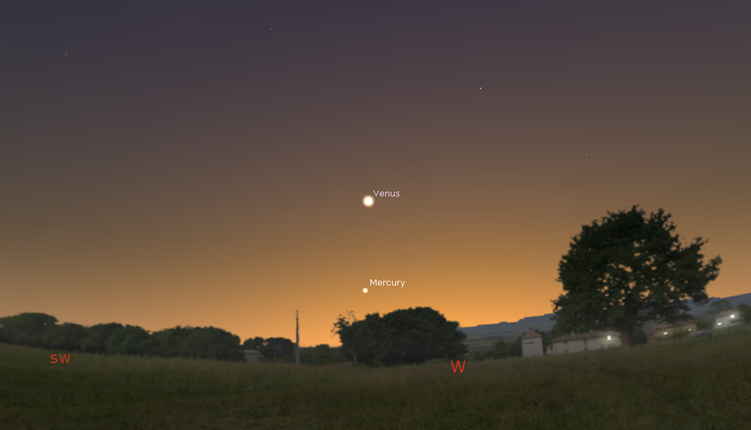
Image: The messenger god moves swiftly. Trying to spot Mercury is a tricky business because it moves so fast and stays close to the Sun. Simulation of the evening sky on the 4th of March at 18:30 UTC. Credit: Stellarium
Another exciting thing happening in March, is that Saturn’s rings will disappear! Not literally, but on the 23rd of March and a week either side, the rings will be at such an angle that we will barely see them from our point of view.
As Saturn orbits round the Sun every 29 years it tilts towards and away, meaning sometimes we see the planet edge on, and sometimes the rings open. The rings are only a few hundred meters thick and down to a few tens of meters in some places, which at 1.5 billion kilometres away is hardly anything at all.
When the rings vanish Saturn will be left looking like a pale yellow sphere through most telescopes. And only the most powerful telescopes will observe a subtle line through the planet’s middle.
And indeed, from most places on Earth it will be very difficult to get a good view of Saturn at all because it’s right next to the Sun. Hopefully our space telescopes will get a better view – having no atmosphere helps.
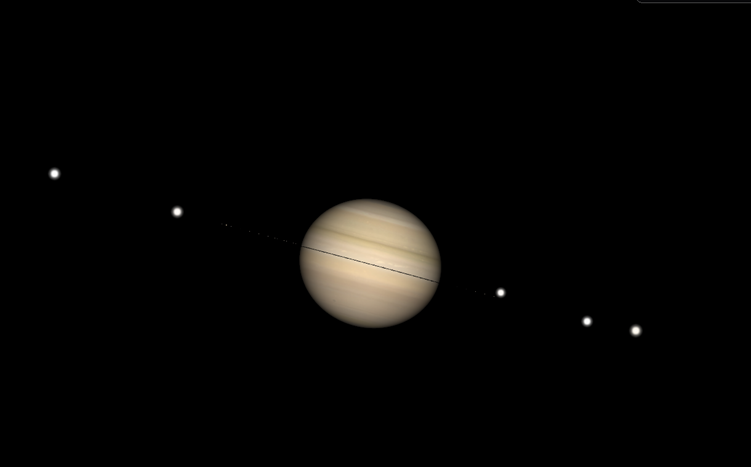
Image: Simulation of Saturn's rings and a few of its moons on the 23rd of March. Credit: Stellarium
Special event: Eclipse Mania!
We have two eclipses for the price of one this month, how lucky!
The first on offer is a total lunar eclipse. On the 14th of March the Sun, Earth and Moon will be perfectly lined up so that the Moon will be in the Earth’s shadow. Although most of the light from the Sun will be blocked, some light will pass through the Earth’s atmosphere and scatter, making the Moon appear very red. This is why a lunar eclipse is also called a “blood moon”.
The lunar eclipse will come at an inconvenient time for us folks in the UK, with the maximum happening at about 7am which 1) is very early, 2) will be quite light outside, but most importantly 3) will be below the horizon for us. For you early birds who still want to see some of it, I’d recommend getting up at about 5:30am on the 14th to see the partial eclipse until it sets at about 6:30am.
It will still be quite light outside, and you’ll need to get a low westerly horizon, but hopefully you should still see some of it.

Image: Blood Moon. Credit: Kielder Observatory
The second is a partial Solar eclipse! This will be starting at about 10am UTC. It will only be partial but will be visible for 2 hours with the maximum partiality at 11am. When trying to look at it, please use solar filter glasses or a pin hole camera to project it onto the ground and DO NOT look at it with your naked eyes.
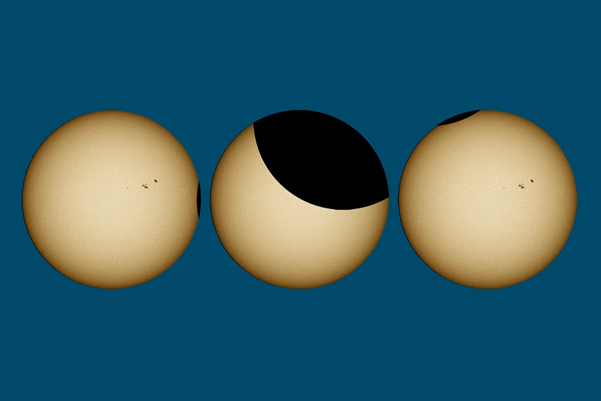
Image: The partial solar eclipse on the 29th of March. Starting at 10:07 UTC, with the maximum at 11:05 UTC, finishing at 12:03 UTC. Credit: Pete Lawrence, The Sky at Night.
Phew! A lot of things to keep us all busy. That’s it for this month's What’s Up, happy stargazing!
[checked_out] => 0 [checked_out_time] => 0000-00-00 00:00:00 [catid] => 34 [created] => 2025-02-26 12:39:24 [created_by] => 52030 [created_by_alias] => [modified] => 2025-02-26 14:44:50 [modified_by] => 52030 [modified_by_name] => Hannah Matterson [publish_up] => 2025-02-26 12:39:24 [publish_down] => 0000-00-00 00:00:00 [images] => {"image_intro":"images\/whatsup\/WU-March-25-5.jpg","float_intro":"","image_intro_alt":"","image_intro_caption":"","image_fulltext":"","float_fulltext":"","image_fulltext_alt":"","image_fulltext_caption":""} [urls] => {"urla":false,"urlatext":"","targeta":"","urlb":false,"urlbtext":"","targetb":"","urlc":false,"urlctext":"","targetc":""} [attribs] => {"show_title":"","link_titles":"","show_tags":"","show_intro":"","info_block_position":"","info_block_show_title":"","show_category":"","link_category":"","show_parent_category":"","link_parent_category":"","show_author":"","link_author":"","show_create_date":"","show_modify_date":"","show_publish_date":"","show_item_navigation":"","show_icons":"","show_print_icon":"","show_email_icon":"","show_vote":"","show_hits":"","show_noauth":"","urls_position":"","alternative_readmore":"","article_layout":"","show_publishing_options":"","show_article_options":"","show_urls_images_backend":"","show_urls_images_frontend":""} [metadata] => {"robots":"","author":"","rights":"","xreference":""} [metakey] => [metadesc] => [access] => 1 [hits] => 6729 [xreference] => [featured] => 0 [language] => * [readmore] => 8712 [state] => 1 [category_title] => Latest News [category_route] => uncategorised/latest-news [category_access] => 1 [category_alias] => latest-news [author] => Hannah Matterson [author_email] => hannah@kielderobservatory.org [parent_title] => ROOT [parent_id] => 1 [parent_route] => [parent_alias] => root [rating] => [rating_count] => [published] => 1 [parents_published] => 1 [alternative_readmore] => [layout] => [params] => Joomla\Registry\Registry Object ( [data:protected] => stdClass Object ( [article_layout] => _:default [show_title] => 1 [link_titles] => 0 [show_intro] => 1 [info_block_position] => 0 [info_block_show_title] => 0 [show_category] => 0 [link_category] => 0 [show_parent_category] => 0 [link_parent_category] => 0 [show_author] => 0 [link_author] => 0 [show_create_date] => 0 [show_modify_date] => 0 [show_publish_date] => 0 [show_item_navigation] => 0 [show_vote] => 0 [show_readmore] => 1 [show_readmore_title] => 0 [readmore_limit] => 100 [show_tags] => 0 [show_icons] => 0 [show_print_icon] => 0 [show_email_icon] => 0 [show_hits] => 0 [show_noauth] => 0 [urls_position] => 0 [show_publishing_options] => 1 [show_article_options] => 1 [save_history] => 1 [history_limit] => 10 [show_urls_images_frontend] => 0 [show_urls_images_backend] => 1 [targeta] => 0 [targetb] => 0 [targetc] => 0 [float_intro] => right [float_fulltext] => none [category_layout] => _:blog [show_category_heading_title_text] => 1 [show_category_title] => 0 [show_description] => 1 [show_description_image] => 0 [maxLevel] => 1 [show_empty_categories] => 0 [show_no_articles] => 1 [show_subcat_desc] => 1 [show_cat_num_articles] => 0 [show_cat_tags] => 1 [show_base_description] => 1 [maxLevelcat] => -1 [show_empty_categories_cat] => 0 [show_subcat_desc_cat] => 1 [show_cat_num_articles_cat] => 1 [num_leading_articles] => 0 [num_intro_articles] => 27 [num_columns] => 1 [num_links] => 4 [multi_column_order] => 0 [show_subcategory_content] => 0 [show_pagination_limit] => 1 [filter_field] => hide [show_headings] => 1 [list_show_date] => 0 [date_format] => [list_show_hits] => 1 [list_show_author] => 1 [orderby_pri] => order [orderby_sec] => rdate [order_date] => published [show_pagination] => 1 [show_pagination_results] => 1 [show_featured] => show [show_feed_link] => 1 [feed_summary] => 0 [feed_show_readmore] => 0 [show_page_heading] => 0 [layout_type] => blog [menu_text] => 1 [menu_show] => 0 [secure] => 0 [page_title] => Latest News [page_description] => Kielder Observatory Astronomical Society [page_rights] => [robots] => [access-view] => 1 ) [separator] => . ) [displayDate] => 2025-02-26 12:39:24 [slug] => 436:what-s-up-march-2025 [parent_slug] => [catslug] => 34:latest-news [event] => stdClass Object ( [afterDisplayTitle] => [beforeDisplayContent] => [afterDisplayContent] => ) [text] =>
In this month's What’s Up, astronomer Rosie talks us through March’s highlights.
I don’t know about you, but I’m sure glad to see the first daffodils growing. It was a long winter! Spring and sunshine are creeping in and it turns out, March is jam packed with celestial and astronomical events! Let’s dive in.

AAA: What’s a Planetary Parade?
You’ve likely come across news articles or headlines about a planetary parade happening in the sky recently. In this article, astronomer Rosie Braunholtz explains what makes a planetary parade special and how you can catch a glimpse of it.
Read Time
9 minutes
You’ve likely come across news articles or headlines about a planetary parade happening in the sky recently. In this article, astronomer Rosie Braunholtz explains what makes a planetary parade special and how you can catch a glimpse of it.
[fulltext] =>AAA: What’s a Planetary Parade?
Summary: A planetary parade refers to a rare event when several planets appear in the same region of the sky. While “planetary alignment” is often the word used to describe this phenomenon, it doesn’t mean the planets are all going to be in one straight line in space. This would be near impossible because of all the different orbital speeds and angles of the planets (seeing all the planets line up in the sky within 1 degree of each other would occur once every 13.4 trillion years). Instead, it means that the planets are aligned in the same half of the sky. This is very exciting because although it’s not extremely rare, the planets being on the same side of the Sun is a pretty special occasion. It means we can see multiple planets at the same time. The current event features four bright planets, with five being visible by the end of February—Mercury, Venus, Mars, Jupiter, and Saturn— which hasn’t occurred since 2022 and won’t happen again until 2028. Neptune and Uranus are also visible, but only to those with a telescope.
On most nights, if the weather is clear, at least one bright planet is visible in the sky. It’s fairly common even to see two planets, but occasionally three or more can be seen with the naked eye. So while “planetary parades” aren't extremely rare, they don't occur every year, making them worth watching when they do happen.

Image: Picture of the planetary parade taken by Dan Monk in January 2025. This is a 12 shot panorama that spans roughly 180° side to side.
What is a planetary parade?
Parade, alignment, conjunction, super conjunction, opposition, syzygy!?? Do they mean the same thing??
You’ve probably been hearing many people and articles call this an alignment, which gives the impression that the planets will all be lined up in space as though we can stick a long rod straight through the middle of all of them. This isn’t the case however!
The planets are all orbiting the Sun in a roughly flat disk. And so, randomly in their orbits, you sometimes get a few that line up together which we can see from Earth. However all the planets are going at different speeds which makes this not very common, additionally the orbits are tilted to different degrees relative to the Sun’s equator, which makes a “perfect” straight line virtually impossible!
Even though we’ll never see all the planets line up perfectly in space, we do occasionally see a few planets and objects near each other in the sky from our perspective. When we get space objects appearing close together from our point of view we call it a conjunction.
Image left: Diagram of a conjunction of Jupiter and Saturn. From our perspective, these two planets are very close together in the sky. In reality Saturn is much further away than Jupiter. Credit: The Planetary Society
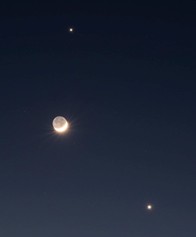
Image right: Here’s a beautiful picture of the Moon (380 thousand kilometres away), Venus (170 million kilometres) and Jupiter (800 million kilometres) appearing close together in the sky. Taken by our astrophotographer Dan Monk
So... what’s happening right now?
What we have happening right now is a sort of conjunction of the planets, or alignment - depending on how generous you’re feeling. The planets aren’t exactly very close together in the sky from our perspective, or in a perfect alignment in space. BUT! they are in the same general region in the sky, which doesn’t happen too often.

Image: Our solar system on the 10th of February. You can see that the planets are pretty much all on one side of the Sun. Credit: ThePlanetsToday.com
As you can see from the picture above, the Sun’s children are gathered mostly to one side. Meaning we can see almost all our brothers and sisters at once! Because the solar system is a flat-ish disk, at sunset they all appear one after the other in a pretty line. That’s why “planetary parade” is a wonderful phrase, even though it’s not a scientific term in astronomy.
How rare are they?
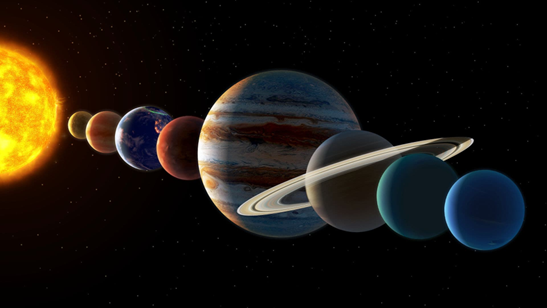
Image: All 8 planets in a perfect line! This is not the ”alignment” we’re seeing now. The actual term for when space objects lineup is a syzygy. Which is a very fun word to say. The chances of an event like this happening with all the planets is zero, due to all the different orbits and angles of the planets. Credit: StarWalk
Having the planets appear in one half of the sky is a special occasion. The last similar parade occurred in 2022, but this winter's event includes even more! At the end of February, we’ll have the chance to catch all 5 bright planets: Mercury, Venus, Mars, Jupiter and Saturn. Which doesn’t come around too often. The next one like this will occur in October 2028!
If we wanted to see the planets even closer together that would be a much rarer event. Even a loose grouping in one quadrant (90-degree sector) is rare, happening just seven times in the current millennium.
If we wanted to see all 7 other planets line up in the sky within 1 degree of each other, the probability would be about once every 13.4 trillion years. In comparison the Universe is 13.8 billion years old. So, we’d be waiting a good while. The movies make it seem like such a common occurrence, eh?
How can I see it?
When trying to find planets in the night sky, the best thing to do is look for the brightest stars in the sky that aren’t twinkling and seem to all be following each other in a line.
The planets move slowly around the Sun, so there’s usually a period of at least a few days if not a few weeks to see the parade. As for right now, Venus, Saturn, Jupiter and Mars have been visible since the end of December, and will continue to be visible for a couple weeks (unless you have a telescope, Uranus and Neptune won’t be visible).
Specifically for this February there will be a small window to see all 5 bright planets at once! If you’d like to play planetary bingo with the big 5, here’s what you will have to do.
In the last week of February (from the 22nd – 25th) head outside shortly after sunset, towards the south-west you will see an extremely bright object (the brightest thing in the sky). That’s Venus! Absolutely gorgeous and the brightest planet. Use it as your beacon.
Below Venus, close to the horizon will be Saturn. It will look much dimmer compared to Venus and will be the trickiest planet to see. Saturn is the faintest visible planet, and as the month goes on it will get closer to the Sun and become hard to see against the brightening twilight sky.
Mercury is here to rescue us however! Mercury is a very bright planet and will be visible for about an hour after sunset during this time (look very close to the horizon near the Sun). On the 24th of February, it will be in conjunction with Saturn! Giving you a nice bright target to find first, to then jump to the dimmer Saturn next to it – though you still may need some binoculars to find it.
Following the line that goes from Venus, continue up until you see Jupiter, high up and towards the south in the constellation of Taurus. It will be very bright. If you’re struggling to find it, find the constellation of Orion, and then follow the belt up to the right.
Then the last planet in the parade is Mars, it will be a bit beyond Orion’s left shoulder and be glowing a lovely yellow.
And BINGO! You have all the bright planets. I’d highly recommend downloading a stargazing app such as Stellarium to navigate the sky and see how the planets move each night.

Image: Five planets all at once! This is a visulisation of what the sky will look like on the 23rd of February at 18:30 UTC. Credit: Stellarium
Will more be happening in the future?
Other recent and near-future multi-planet viewing opportunities (not including Uranus and Neptune):
• January 2016 – Four planets visible at once before sunrise
• Late April to Late August 2022 – Four planets visible at once before sunrise
• Mid-June to Early July 2022 – Five planets visible at once before sunrise
• January to mid-February 2025 – Four planets visible at once after sunset
• Late August 2025 – Four planets visible at once before sunrise
• Late October 2028 – Five planets visible at once before sunrise
• Late February 2034 – Five planets visible at once after sunset (Venus and Mercury challenging to observe)
References:
Have all 8 planets ever aligned? | Live Science
Planetary parade February 2025: When, where and how to see it | Space
[checked_out] => 0 [checked_out_time] => 0000-00-00 00:00:00 [catid] => 34 [created] => 2025-02-18 14:37:43 [created_by] => 52030 [created_by_alias] => [modified] => 2025-02-18 14:39:16 [modified_by] => 52030 [modified_by_name] => Hannah Matterson [publish_up] => 2025-02-18 14:37:43 [publish_down] => 0000-00-00 00:00:00 [images] => {"image_intro":"images\/AAA\/Planetary-Parade-1.png","float_intro":"","image_intro_alt":"","image_intro_caption":"","image_fulltext":"","float_fulltext":"","image_fulltext_alt":"","image_fulltext_caption":""} [urls] => {"urla":false,"urlatext":"","targeta":"","urlb":false,"urlbtext":"","targetb":"","urlc":false,"urlctext":"","targetc":""} [attribs] => {"show_title":"","link_titles":"","show_tags":"","show_intro":"","info_block_position":"","info_block_show_title":"","show_category":"","link_category":"","show_parent_category":"","link_parent_category":"","show_author":"","link_author":"","show_create_date":"","show_modify_date":"","show_publish_date":"","show_item_navigation":"","show_icons":"","show_print_icon":"","show_email_icon":"","show_vote":"","show_hits":"","show_noauth":"","urls_position":"","alternative_readmore":"","article_layout":"","show_publishing_options":"","show_article_options":"","show_urls_images_backend":"","show_urls_images_frontend":""} [metadata] => {"robots":"","author":"","rights":"","xreference":""} [metakey] => [metadesc] => [access] => 1 [hits] => 6914 [xreference] => [featured] => 0 [language] => * [readmore] => 13645 [state] => 1 [category_title] => Latest News [category_route] => uncategorised/latest-news [category_access] => 1 [category_alias] => latest-news [author] => Hannah Matterson [author_email] => hannah@kielderobservatory.org [parent_title] => ROOT [parent_id] => 1 [parent_route] => [parent_alias] => root [rating] => [rating_count] => [published] => 1 [parents_published] => 1 [alternative_readmore] => [layout] => [params] => Joomla\Registry\Registry Object ( [data:protected] => stdClass Object ( [article_layout] => _:default [show_title] => 1 [link_titles] => 0 [show_intro] => 1 [info_block_position] => 0 [info_block_show_title] => 0 [show_category] => 0 [link_category] => 0 [show_parent_category] => 0 [link_parent_category] => 0 [show_author] => 0 [link_author] => 0 [show_create_date] => 0 [show_modify_date] => 0 [show_publish_date] => 0 [show_item_navigation] => 0 [show_vote] => 0 [show_readmore] => 1 [show_readmore_title] => 0 [readmore_limit] => 100 [show_tags] => 0 [show_icons] => 0 [show_print_icon] => 0 [show_email_icon] => 0 [show_hits] => 0 [show_noauth] => 0 [urls_position] => 0 [show_publishing_options] => 1 [show_article_options] => 1 [save_history] => 1 [history_limit] => 10 [show_urls_images_frontend] => 0 [show_urls_images_backend] => 1 [targeta] => 0 [targetb] => 0 [targetc] => 0 [float_intro] => right [float_fulltext] => none [category_layout] => _:blog [show_category_heading_title_text] => 1 [show_category_title] => 0 [show_description] => 1 [show_description_image] => 0 [maxLevel] => 1 [show_empty_categories] => 0 [show_no_articles] => 1 [show_subcat_desc] => 1 [show_cat_num_articles] => 0 [show_cat_tags] => 1 [show_base_description] => 1 [maxLevelcat] => -1 [show_empty_categories_cat] => 0 [show_subcat_desc_cat] => 1 [show_cat_num_articles_cat] => 1 [num_leading_articles] => 0 [num_intro_articles] => 27 [num_columns] => 1 [num_links] => 4 [multi_column_order] => 0 [show_subcategory_content] => 0 [show_pagination_limit] => 1 [filter_field] => hide [show_headings] => 1 [list_show_date] => 0 [date_format] => [list_show_hits] => 1 [list_show_author] => 1 [orderby_pri] => order [orderby_sec] => rdate [order_date] => published [show_pagination] => 1 [show_pagination_results] => 1 [show_featured] => show [show_feed_link] => 1 [feed_summary] => 0 [feed_show_readmore] => 0 [show_page_heading] => 0 [layout_type] => blog [menu_text] => 1 [menu_show] => 0 [secure] => 0 [page_title] => Latest News [page_description] => Kielder Observatory Astronomical Society [page_rights] => [robots] => [access-view] => 1 ) [separator] => . ) [displayDate] => 2025-02-18 14:37:43 [slug] => 434:aaa-what-s-a-planetary-parade [parent_slug] => [catslug] => 34:latest-news [event] => stdClass Object ( [afterDisplayTitle] => [beforeDisplayContent] => [afterDisplayContent] => ) [text] =>
You’ve likely come across news articles or headlines about a planetary parade happening in the sky recently. In this article, astronomer Rosie Braunholtz explains what makes a planetary parade special and how you can catch a glimpse of it.
)
AAA- What is a constellation?
Welcome to our “Ask An Astronomer” series where we answer the questions we regularly receive from members of the public during events and online. In this article our astronomer Ellie will be answering the question “What is a constellation?”.
Read Time
6 minutes
Welcome to our “Ask An Astronomer” series where we answer the questions we regularly receive from members of the public during events and online. In this article our astronomer Ellie will be answering the question “What is a constellation?”.
[fulltext] =>
So, what is a constellation?
Quick Answer...
A constellation is an apparent pattern of stars seen in the night sky. Different cultures have been dividing the sky up for as long as we have written records, starting in ancient Mesopotamia. As a result, there is a rich diversity in cultural views of the night sky, from lunar to solar systems based around the ecliptic as favoured in Europe and Asia, to systems based entirely around the Milky Way with constellations made from cosmic dust as in Andean astronomy. Since 1930 the International Astronomy Union has recognised 88 constellations which divide the sky. As well as formal constellations there are informal asterisms such as the Plough and the summer and winter triangles. These are most often used by amateur astronomers to navigate around the sky and to indicate the seasons.
Long Answer...
It’s easy to feel small when you stargaze, simply imagine the thousands of stars in your sky in their proper homes trillions of miles away, distant neighbours sending you messages in the form of light, messages that take sometimes millennia to arrive. It’s easy to become overwhelmed too, we’ve all been there. When faced with something so immense, I think it is the most human thing in the world to make patterns to try and break it all up- this is what constellations do.
A constellation is an apparent pattern of stars in the sky. These patterns are created by joining together the stars like a cosmic dot-to-dot until they resemble some such thing as a dog, or a bear, or a tragic heroine chained to a rock and left as a sacrifice to some sea monster, or some hair. Some resemble themselves better than others.
The practise of creating constellations is an old one with the earliest star lists coming from Babylon around the 12th Century BC. Some constellations still in use today can be traced back to these star lists, for example Taurus and Gemini. Initially, the purpose of these constellations may have been to act as a calendar, there exists examples of Babylonian planispheres showing the sky divided into 12 equal portions, each associated with a constellation. In time we know the sky acquired a more divine association as planets were named for important gods and goddesses, and stories began to appear to explain how the constellations came to be in the sky. The earliest example we have of star lore in this sense is the story of the Great Bull of the Heavens from the Epic of Gilgamesh.


Cuneiform planisphere and recreation
Babylonian astronomy spread to Egypt and from there it spread to Greece. In the 2nd century AD Claudius Ptolemy, an astronomer and mathematician from Alexandria, wrote the Almagest, a mathematical treatise about the motions of stars and planets, and a summary of Greek astronomical knowledge. In this he listed 48 constellations and defined their figures for generations to come.
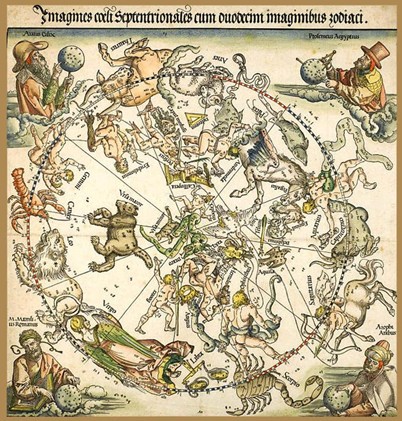
Ptolemy’s 48 constellations from the Almagest
Across the world, different constellation systems have been developed though. In China, for example, by the 13th century their view of the sky had developed to include 283 constellations. Astronomers here divided the sky into 4 sections called Azure Dragon, Black Tortoise, White Tiger, and Vermilion Bird. Each of these sections was further divided into 7 mansions along the ecliptic to give 28 mansions in total, these correspond to the motion of the Moon through the lunar month. The sky was also divided into the Purple Forbidden enclosure, the Heavenly Market enclosure, and the Supreme Palace enclosure.
Whilst European and Asian systems were generally centred around the ecliptic, the plane of the solar system and therefore the path the sun, moon, and planets will take through the sky, when the Spanish arrived in America, they were surprised to find the Inca with a view of the sky that focussed on the Milky Way instead. Inca astronomers divided the sky into 4 quadrants based on the rotation of the Milky Way overhead over a 24-hour period. In this sky they had 2 kinds of constellation, one being the familiar dot-to-dot of stars, but the other being dark constellations made using the dark dusty regions in the plane of the Milky Way.
As the world became more interconnected, and astronomers more taken to collaborate across continents, these different systems came into conflict. To further complicate things, it became rather trendy amongst European Astronomers to “find” new constellations to dedicate them to some important patron. By the 19th Century, the sky was getting just a bit crowded, and there were some disagreements over names and exact boundaries. To try and resolve some of these issues, the International Astronomical Union stepped in. In the first IAU general assembly, held in Rome in 1922, they set about to determining an internationally agreed upon set of constellations. The Commission on Notations and Units agreed on a list of 88 constellations across the whole sky, and they set about agreeing on the boundaries. By 1928 the boundaries as we know them today were approved, and in 1930 they were published to the wider world.
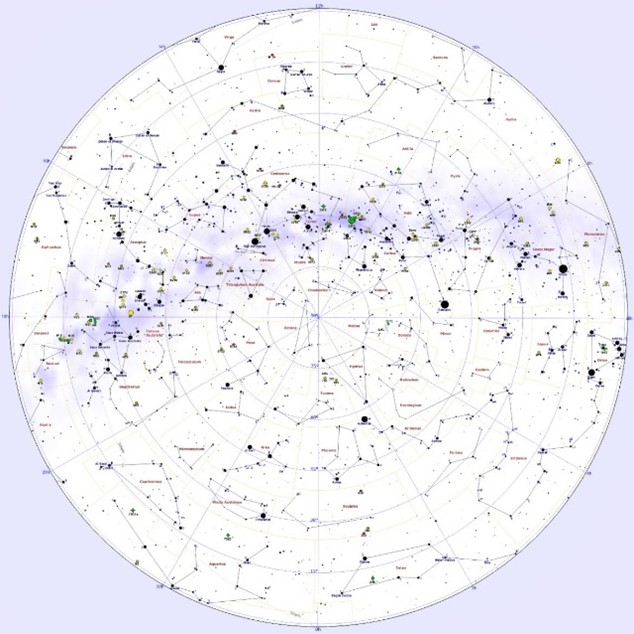
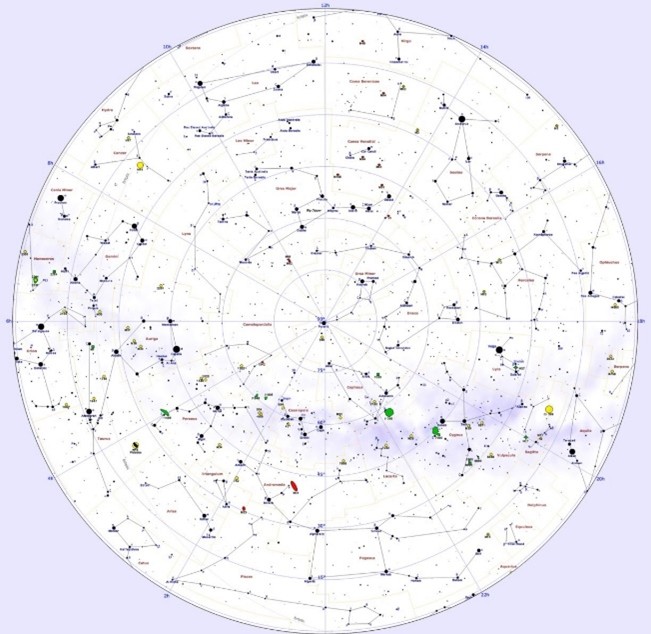
Northern and Southern celestial hemispheres with constellations. Image: Roberto Mura
The 88 constellations in the IAU list do have a significant bias towards the “Greco-Roman” tradition, you won’t find any Chinese or Inca constellations on the list for example, but I think that this can broadly be explained by the state of the IAU in 1922. As the first general assembly ended there were 19 member nations: Belgium, Canada, France, Great Britain, Greece, Japan, USA, Italy, Mexico, Australia, Brazil, Czechoslovakia, Denmark, the Netherlands, Norway, Poland, Romania, South Africa, and Spain. Within academic circles in these countries, it was likely that Greco-Roman constellations were already the established norm, the activity of formalising this was mostly about removing some of the more modern constellations.
With the existence of “formal” constellations, that does now open the sky up to informal constellations a.k.a. asterisms. Anyone can make an asterism; it is simply any pattern of any stars not recognised by the IAU. Some asterisms really take off too- look at the Plough/the Big Dipper! Consisting of just the back portion of the IAU accredited Ursa Major, the Plough is a handy asterism for finding the North Star. You simply start on the curved handle and follow the seven stars around, using the last two to create a line that you follow up across the sky until you hit Polaris, the North Star. Astronomers are also fond of using the summer and winter triangles as indicators of the observing season, harkening back to the ancient tradition of using the sky as a calendar.
So what is a constellation? Whatever you want it to be. The IAU might disagree with you, but as long as you call it an asterism, you’re covered.
[checked_out] => 0 [checked_out_time] => 0000-00-00 00:00:00 [catid] => 34 [created] => 2025-01-22 12:06:02 [created_by] => 52030 [created_by_alias] => [modified] => 2025-01-22 12:20:09 [modified_by] => 52030 [modified_by_name] => Hannah Matterson [publish_up] => 2025-01-22 12:19:15 [publish_down] => 0000-00-00 00:00:00 [images] => {"image_intro":"images\/AAA\/Constellations-1.png","float_intro":"","image_intro_alt":"","image_intro_caption":"","image_fulltext":"","float_fulltext":"","image_fulltext_alt":"","image_fulltext_caption":""} [urls] => {"urla":false,"urlatext":"","targeta":"","urlb":false,"urlbtext":"","targetb":"","urlc":false,"urlctext":"","targetc":""} [attribs] => {"show_title":"","link_titles":"","show_tags":"","show_intro":"","info_block_position":"","info_block_show_title":"","show_category":"","link_category":"","show_parent_category":"","link_parent_category":"","show_author":"","link_author":"","show_create_date":"","show_modify_date":"","show_publish_date":"","show_item_navigation":"","show_icons":"","show_print_icon":"","show_email_icon":"","show_vote":"","show_hits":"","show_noauth":"","urls_position":"","alternative_readmore":"","article_layout":"","show_publishing_options":"","show_article_options":"","show_urls_images_backend":"","show_urls_images_frontend":""} [metadata] => {"robots":"","author":"","rights":"","xreference":""} [metakey] => [metadesc] => [access] => 1 [hits] => 6573 [xreference] => [featured] => 0 [language] => * [readmore] => 8418 [state] => 1 [category_title] => Latest News [category_route] => uncategorised/latest-news [category_access] => 1 [category_alias] => latest-news [author] => Hannah Matterson [author_email] => hannah@kielderobservatory.org [parent_title] => ROOT [parent_id] => 1 [parent_route] => [parent_alias] => root [rating] => [rating_count] => [published] => 1 [parents_published] => 1 [alternative_readmore] => [layout] => [params] => Joomla\Registry\Registry Object ( [data:protected] => stdClass Object ( [article_layout] => _:default [show_title] => 1 [link_titles] => 0 [show_intro] => 1 [info_block_position] => 0 [info_block_show_title] => 0 [show_category] => 0 [link_category] => 0 [show_parent_category] => 0 [link_parent_category] => 0 [show_author] => 0 [link_author] => 0 [show_create_date] => 0 [show_modify_date] => 0 [show_publish_date] => 0 [show_item_navigation] => 0 [show_vote] => 0 [show_readmore] => 1 [show_readmore_title] => 0 [readmore_limit] => 100 [show_tags] => 0 [show_icons] => 0 [show_print_icon] => 0 [show_email_icon] => 0 [show_hits] => 0 [show_noauth] => 0 [urls_position] => 0 [show_publishing_options] => 1 [show_article_options] => 1 [save_history] => 1 [history_limit] => 10 [show_urls_images_frontend] => 0 [show_urls_images_backend] => 1 [targeta] => 0 [targetb] => 0 [targetc] => 0 [float_intro] => right [float_fulltext] => none [category_layout] => _:blog [show_category_heading_title_text] => 1 [show_category_title] => 0 [show_description] => 1 [show_description_image] => 0 [maxLevel] => 1 [show_empty_categories] => 0 [show_no_articles] => 1 [show_subcat_desc] => 1 [show_cat_num_articles] => 0 [show_cat_tags] => 1 [show_base_description] => 1 [maxLevelcat] => -1 [show_empty_categories_cat] => 0 [show_subcat_desc_cat] => 1 [show_cat_num_articles_cat] => 1 [num_leading_articles] => 0 [num_intro_articles] => 27 [num_columns] => 1 [num_links] => 4 [multi_column_order] => 0 [show_subcategory_content] => 0 [show_pagination_limit] => 1 [filter_field] => hide [show_headings] => 1 [list_show_date] => 0 [date_format] => [list_show_hits] => 1 [list_show_author] => 1 [orderby_pri] => order [orderby_sec] => rdate [order_date] => published [show_pagination] => 1 [show_pagination_results] => 1 [show_featured] => show [show_feed_link] => 1 [feed_summary] => 0 [feed_show_readmore] => 0 [show_page_heading] => 0 [layout_type] => blog [menu_text] => 1 [menu_show] => 0 [secure] => 0 [page_title] => Latest News [page_description] => Kielder Observatory Astronomical Society [page_rights] => [robots] => [access-view] => 1 ) [separator] => . ) [displayDate] => 2025-01-22 12:06:02 [slug] => 433:aaa-what-is-a-constellation [parent_slug] => [catslug] => 34:latest-news [event] => stdClass Object ( [afterDisplayTitle] => [beforeDisplayContent] => [afterDisplayContent] => ) [text] =>Welcome to our “Ask An Astronomer” series where we answer the questions we regularly receive from members of the public during events and online. In this article our astronomer Ellie will be answering the question “What is a constellation?”.
)
What’s Up? February 2025
It’s the shortest month of the year, but there’s still lots to see in the sky! From planetary parades to particularly bright stars, in this edition of What’s Up? we’ll be taking you through all the best things to see this month.
Read Time
5 minutes
It’s the shortest month of the year, but there’s still lots to see in the sky! From planetary parades to particularly bright stars, in this edition of What’s Up? we’ll be taking you through all the best things to see this month.
[fulltext] =>
Constellations
This month Orion will continue to loom large over the southern horizon, but he’s not alone there. This month, why not try to spot some of the smaller constellations like Canis Major and Lepus? To find Canis Major you would be best looking for its brightest star – Sirius (also our object of the month!). Sirius is the brightest star in the sky, so finding it should be fairly easy, but if you want to be 100% certain that you have it you can use Orion’s belt as a guide.
Orion’s belt consists of 3 stars – Mintaka, Alnilam, and Alnitak. To find Sirius you want to draw a line from Mintaka on the right to Alnitak on the left and then continue it down to the brightest star you can see. Canis Major is supposed to resemble a dog, and it certainly does that very well. There is a distinct head, body, legs, and tail. In fact, the elongated body makes it look very specifically like a dachshund!

How to find Sirius and Canis Major using Orion. Credit: Stellarium
Finding Lepus, the rabbit, can be a bit trickier as there isn’t a particularly notable star to aim for, but it is directly below Orion and its two brightest stars, Arneb and Nihal, will look similar to Orion’s bottom left star Saiph.
Also returning to our skies this month is Leo the Lion! This large constellation will be rising out of the eastern horizon as it gets dark and to spot it you can look for the distinctive “backwards question mark” of the Lion’s mane. You’ll be hearing a lot more about Leo from us as it rises higher in the sky towards Spring.

Leo rising in the eastern sky. Credit: Stellarium
Object of the Month – Sirius
Usually we like to focus on objects like galaxies, clusters, and nebulas for this section, but this month I want to pay special attention to just one star. Or technically two I suppose.
As previously mentioned, Sirius is the brightest star in the sky and it can be easily located using Orion’s belt. We only have Sirius in our sky for a small portion of the year as it is part of the Southern Celestial Hemisphere. To the naked eye Sirius will appear to shimmer and twinkle in the night sky, an effect which is magnified when seen through a pair of binoculars or a telescope. This twinkling is caused by our atmosphere because as the starlight passes through it, it is distorted. Low down, there is more atmosphere for the light to pass through so the effect is greater than when a star is directly above you.

Sirius through a telescope appears to “flash” different colours as you watch it.
Sirius is approximately 8.6 light years away from us making it one of the closest stars you can see in the sky, and this is one reason why it is so bright. The other reason is simply that it is intrinsically bright being around 25 times more luminous than our Sun. Sirius is also a binary star with Sirius A being the brighter and Sirius B a smaller white dwarf star.
This is the one time we would recommend you look at an object out of focus. While beautiful to see normally, when you unfocus your view of Sirius it begins to look like a sparkler with different colours shooting off in all directions.
“Planetary Parade”
In January we saw the start of the “planetary parade”, an alignment of the solar system planets that allowed us to see the big 4 (Venus, Saturn, Jupiter, and Mars) stretching across the sky at the same time, with Uranus and Neptune also joining in the fun for those with telescopes. There is still time to see the planets this month, and Mercury will be saying hello!
Mercury spent January on the other side of the Sun from the rest of the solar system, meaning it set before the Sun did. This month it is coming to the dark side and so you are in with a chance of seeing 5 planets with the naked eye stretching across the sky from east to west. For the best chance of seeing it, you will want to find somewhere with low horizons because as the Sun sets both Saturn and Mercury will be very low in the sky. Uranus and Neptune will continue to only be visible to those with telescopes and dark skies.
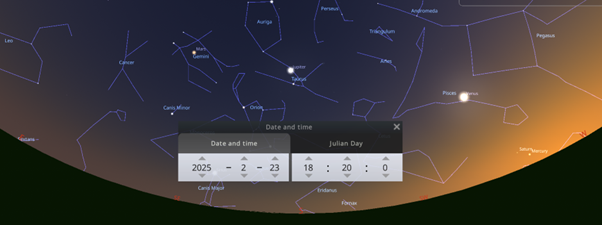
Mercury, Saturn, Venus, Jupiter, and Mars in alignment on the 23rd February 2025. Credit: Stellarium
The Moon Phases
First Quarter: 5th February
Full Moon: 12th February
Third Quarter: 20th February
New Moon: 28th February
[checked_out] => 0 [checked_out_time] => 0000-00-00 00:00:00 [catid] => 34 [created] => 2025-01-22 10:59:04 [created_by] => 52030 [created_by_alias] => [modified] => 2025-01-30 12:49:56 [modified_by] => 52030 [modified_by_name] => Hannah Matterson [publish_up] => 2025-01-22 10:59:04 [publish_down] => 0000-00-00 00:00:00 [images] => {"image_intro":"images\/whatsup\/Feb25-1.jpg","float_intro":"","image_intro_alt":"","image_intro_caption":"","image_fulltext":"","float_fulltext":"","image_fulltext_alt":"","image_fulltext_caption":""} [urls] => {"urla":false,"urlatext":"","targeta":"","urlb":false,"urlbtext":"","targetb":"","urlc":false,"urlctext":"","targetc":""} [attribs] => {"show_title":"","link_titles":"","show_tags":"","show_intro":"","info_block_position":"","info_block_show_title":"","show_category":"","link_category":"","show_parent_category":"","link_parent_category":"","show_author":"","link_author":"","show_create_date":"","show_modify_date":"","show_publish_date":"","show_item_navigation":"","show_icons":"","show_print_icon":"","show_email_icon":"","show_vote":"","show_hits":"","show_noauth":"","urls_position":"","alternative_readmore":"","article_layout":"","show_publishing_options":"","show_article_options":"","show_urls_images_backend":"","show_urls_images_frontend":""} [metadata] => {"robots":"","author":"","rights":"","xreference":""} [metakey] => [metadesc] => [access] => 1 [hits] => 6955 [xreference] => [featured] => 0 [language] => * [readmore] => 6428 [state] => 1 [category_title] => Latest News [category_route] => uncategorised/latest-news [category_access] => 1 [category_alias] => latest-news [author] => Hannah Matterson [author_email] => hannah@kielderobservatory.org [parent_title] => ROOT [parent_id] => 1 [parent_route] => [parent_alias] => root [rating] => [rating_count] => [published] => 1 [parents_published] => 1 [alternative_readmore] => [layout] => [params] => Joomla\Registry\Registry Object ( [data:protected] => stdClass Object ( [article_layout] => _:default [show_title] => 1 [link_titles] => 0 [show_intro] => 1 [info_block_position] => 0 [info_block_show_title] => 0 [show_category] => 0 [link_category] => 0 [show_parent_category] => 0 [link_parent_category] => 0 [show_author] => 0 [link_author] => 0 [show_create_date] => 0 [show_modify_date] => 0 [show_publish_date] => 0 [show_item_navigation] => 0 [show_vote] => 0 [show_readmore] => 1 [show_readmore_title] => 0 [readmore_limit] => 100 [show_tags] => 0 [show_icons] => 0 [show_print_icon] => 0 [show_email_icon] => 0 [show_hits] => 0 [show_noauth] => 0 [urls_position] => 0 [show_publishing_options] => 1 [show_article_options] => 1 [save_history] => 1 [history_limit] => 10 [show_urls_images_frontend] => 0 [show_urls_images_backend] => 1 [targeta] => 0 [targetb] => 0 [targetc] => 0 [float_intro] => right [float_fulltext] => none [category_layout] => _:blog [show_category_heading_title_text] => 1 [show_category_title] => 0 [show_description] => 1 [show_description_image] => 0 [maxLevel] => 1 [show_empty_categories] => 0 [show_no_articles] => 1 [show_subcat_desc] => 1 [show_cat_num_articles] => 0 [show_cat_tags] => 1 [show_base_description] => 1 [maxLevelcat] => -1 [show_empty_categories_cat] => 0 [show_subcat_desc_cat] => 1 [show_cat_num_articles_cat] => 1 [num_leading_articles] => 0 [num_intro_articles] => 27 [num_columns] => 1 [num_links] => 4 [multi_column_order] => 0 [show_subcategory_content] => 0 [show_pagination_limit] => 1 [filter_field] => hide [show_headings] => 1 [list_show_date] => 0 [date_format] => [list_show_hits] => 1 [list_show_author] => 1 [orderby_pri] => order [orderby_sec] => rdate [order_date] => published [show_pagination] => 1 [show_pagination_results] => 1 [show_featured] => show [show_feed_link] => 1 [feed_summary] => 0 [feed_show_readmore] => 0 [show_page_heading] => 0 [layout_type] => blog [menu_text] => 1 [menu_show] => 0 [secure] => 0 [page_title] => Latest News [page_description] => Kielder Observatory Astronomical Society [page_rights] => [robots] => [access-view] => 1 ) [separator] => . ) [displayDate] => 2025-01-22 10:59:04 [slug] => 432:what-s-up-february-2025 [parent_slug] => [catslug] => 34:latest-news [event] => stdClass Object ( [afterDisplayTitle] => [beforeDisplayContent] => [afterDisplayContent] => ) [text] =>
It’s the shortest month of the year, but there’s still lots to see in the sky! From planetary parades to particularly bright stars, in this edition of What’s Up? we’ll be taking you through all the best things to see this month.
)
What's Up? January 2025
Happy New year to one and all! It’s 2025 and to kick things off, January is a fantastic time of year for observing our night skies. Remember to wrap up warm though, as well as being one of the darkest months, it’s also one of the coldest! Brrrrrrr.
Read Time
3 minutes
Happy New year to one and all! It’s 2025 and to kick things off, January is a fantastic time of year for observing our night skies. Remember to wrap up warm though, as well as being one of the darkest months, it’s also one of the coldest! Brrrrrrr.
[fulltext] =>
Constellations
The magnificent constellation of Orion continues to dominate the south facing sky this month. Although only the 26th largest constellation (there are 88 of them visible from around the world), it is certainly one of the most recognizable due to the 3 bright stars in a line forming “Orion’s belt”. It’s amazing when you realize that the middle star of the “belt” (Alnilam) is more than twice as far away from us as the star on the left (Alnitak)! This is a very good example of how stars may look the same brightness but one may be so much brighter but much further away than the other! The famous Orion Nebulae (M42) can be seen below the belt as the middle “star” in Orion’s sword and is the closest star forming region to us located some 1500 light-years away. It can be seen with the naked eye but looks great through binoculars or a small telescope.
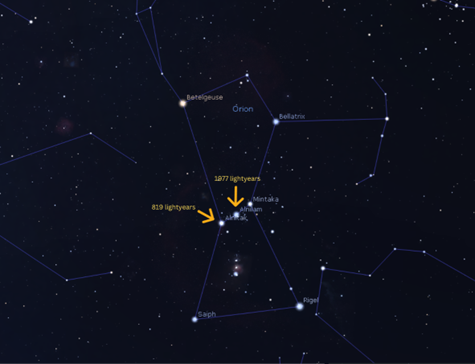
Image credit: Stellarium.org
Up to the top left of Orion is the zodiacal constellation of Gemini, which is the Latin word for twins. It looks like 2 “stick” people holding hands and represents the twins Castor and Pollux. In Greek mythology, the twins were the sons of Leda, but they had different fathers. Castor’s father was Tyndareus, king of Sparta. Pollux’s father was none other than Zeus. The legend goes Castor’s cousins killed him while Pollux was an immortal demigod. Zues offered Pollux the choice of becoming immortal like his brother, and the 2 were forever cast into the sky. The constellation is dominated by its 2 main stars, aptly named Castor and Pollux. Castor is the fainter of the 2 and is nearly twice as far away from us as Pollux.

Image credit: Stellarium.org
Object of the month: Mars
This January is a great month for observing the “red” planet as Mars lies in the opposite direction to the Sun in the sky on the 16th, making it closer, brighter and larger than at other times. It is also optimally positioned to be observable for much of the night. Look for the copper colored (not red!) bright object in the sky within the constellation of Gemini which is mentioned above in the Constellations section. Of course, Mars is the only planet we currently know of in the Universe that is entirely inhabited by robots!

Image credit: in-the-sky.org
Meteor Shower
3/4 January: Quadrantid meteor shower peak
The only meteor shower in January is the Quadrantids which peaks on the 4th in the very early hours. With no Moon in the sky at that time to spoil the view, there could be as many as 120 meteors per hour making it one of the best showers of the year. The meteors normally appear bluish or yellowish-white in colour with fine tails. Don’t forget to make a wish!
The Moon and Planets
4th January: Evening lunar occultation of Saturn
6th January: First Quarter
10th January: Venus at greatest eastern elongation (47.2o from the Sun; evening)
13th January: Full Moon
16th January: Mars reaches opposition
18th January: Venus 2.2° north of Saturn (evening)
21st January: Last Quarter
29th January: New Moon
Wishing you all a Happy New Year and clear skies!
[checked_out] => 0 [checked_out_time] => 0000-00-00 00:00:00 [catid] => 34 [created] => 2024-12-18 15:15:50 [created_by] => 52030 [created_by_alias] => [modified] => 2024-12-18 15:16:35 [modified_by] => 52030 [modified_by_name] => Hannah Matterson [publish_up] => 2024-12-18 15:15:50 [publish_down] => 0000-00-00 00:00:00 [images] => {"image_intro":"images\/whatsup\/WUJ25c.png","float_intro":"","image_intro_alt":"","image_intro_caption":"","image_fulltext":"","float_fulltext":"","image_fulltext_alt":"","image_fulltext_caption":""} [urls] => {"urla":false,"urlatext":"","targeta":"","urlb":false,"urlbtext":"","targetb":"","urlc":false,"urlctext":"","targetc":""} [attribs] => {"show_title":"","link_titles":"","show_tags":"","show_intro":"","info_block_position":"","info_block_show_title":"","show_category":"","link_category":"","show_parent_category":"","link_parent_category":"","show_author":"","link_author":"","show_create_date":"","show_modify_date":"","show_publish_date":"","show_item_navigation":"","show_icons":"","show_print_icon":"","show_email_icon":"","show_vote":"","show_hits":"","show_noauth":"","urls_position":"","alternative_readmore":"","article_layout":"","show_publishing_options":"","show_article_options":"","show_urls_images_backend":"","show_urls_images_frontend":""} [metadata] => {"robots":"","author":"","rights":"","xreference":""} [metakey] => [metadesc] => [access] => 1 [hits] => 7623 [xreference] => [featured] => 0 [language] => * [readmore] => 5377 [state] => 1 [category_title] => Latest News [category_route] => uncategorised/latest-news [category_access] => 1 [category_alias] => latest-news [author] => Hannah Matterson [author_email] => hannah@kielderobservatory.org [parent_title] => ROOT [parent_id] => 1 [parent_route] => [parent_alias] => root [rating] => [rating_count] => [published] => 1 [parents_published] => 1 [alternative_readmore] => [layout] => [params] => Joomla\Registry\Registry Object ( [data:protected] => stdClass Object ( [article_layout] => _:default [show_title] => 1 [link_titles] => 0 [show_intro] => 1 [info_block_position] => 0 [info_block_show_title] => 0 [show_category] => 0 [link_category] => 0 [show_parent_category] => 0 [link_parent_category] => 0 [show_author] => 0 [link_author] => 0 [show_create_date] => 0 [show_modify_date] => 0 [show_publish_date] => 0 [show_item_navigation] => 0 [show_vote] => 0 [show_readmore] => 1 [show_readmore_title] => 0 [readmore_limit] => 100 [show_tags] => 0 [show_icons] => 0 [show_print_icon] => 0 [show_email_icon] => 0 [show_hits] => 0 [show_noauth] => 0 [urls_position] => 0 [show_publishing_options] => 1 [show_article_options] => 1 [save_history] => 1 [history_limit] => 10 [show_urls_images_frontend] => 0 [show_urls_images_backend] => 1 [targeta] => 0 [targetb] => 0 [targetc] => 0 [float_intro] => right [float_fulltext] => none [category_layout] => _:blog [show_category_heading_title_text] => 1 [show_category_title] => 0 [show_description] => 1 [show_description_image] => 0 [maxLevel] => 1 [show_empty_categories] => 0 [show_no_articles] => 1 [show_subcat_desc] => 1 [show_cat_num_articles] => 0 [show_cat_tags] => 1 [show_base_description] => 1 [maxLevelcat] => -1 [show_empty_categories_cat] => 0 [show_subcat_desc_cat] => 1 [show_cat_num_articles_cat] => 1 [num_leading_articles] => 0 [num_intro_articles] => 27 [num_columns] => 1 [num_links] => 4 [multi_column_order] => 0 [show_subcategory_content] => 0 [show_pagination_limit] => 1 [filter_field] => hide [show_headings] => 1 [list_show_date] => 0 [date_format] => [list_show_hits] => 1 [list_show_author] => 1 [orderby_pri] => order [orderby_sec] => rdate [order_date] => published [show_pagination] => 1 [show_pagination_results] => 1 [show_featured] => show [show_feed_link] => 1 [feed_summary] => 0 [feed_show_readmore] => 0 [show_page_heading] => 0 [layout_type] => blog [menu_text] => 1 [menu_show] => 0 [secure] => 0 [page_title] => Latest News [page_description] => Kielder Observatory Astronomical Society [page_rights] => [robots] => [access-view] => 1 ) [separator] => . ) [displayDate] => 2024-12-18 15:15:50 [slug] => 427:what-s-up-january-2025 [parent_slug] => [catslug] => 34:latest-news [event] => stdClass Object ( [afterDisplayTitle] => [beforeDisplayContent] => [afterDisplayContent] => ) [text] =>
Happy New year to one and all! It’s 2025 and to kick things off, January is a fantastic time of year for observing our night skies. Remember to wrap up warm though, as well as being one of the darkest months, it’s also one of the coldest! Brrrrrrr.
)
National volunteer award for inspirational Hamish
A volunteer who credits the charity where he works for saving his life and bringing him joy has been honoured with a national award.
Read Time
4 minutes
A volunteer who credits the charity where he works for saving his life and bringing him joy has been honoured with a national award.
[fulltext] =>
Hamish Newhouse, 44, was presented with a Volunteer Award from The Marsh Trust and ASDC (Association for Science and Discovery Centres) at a ceremony at The Royal Society in London in recognition of his work at Kielder Observatory.
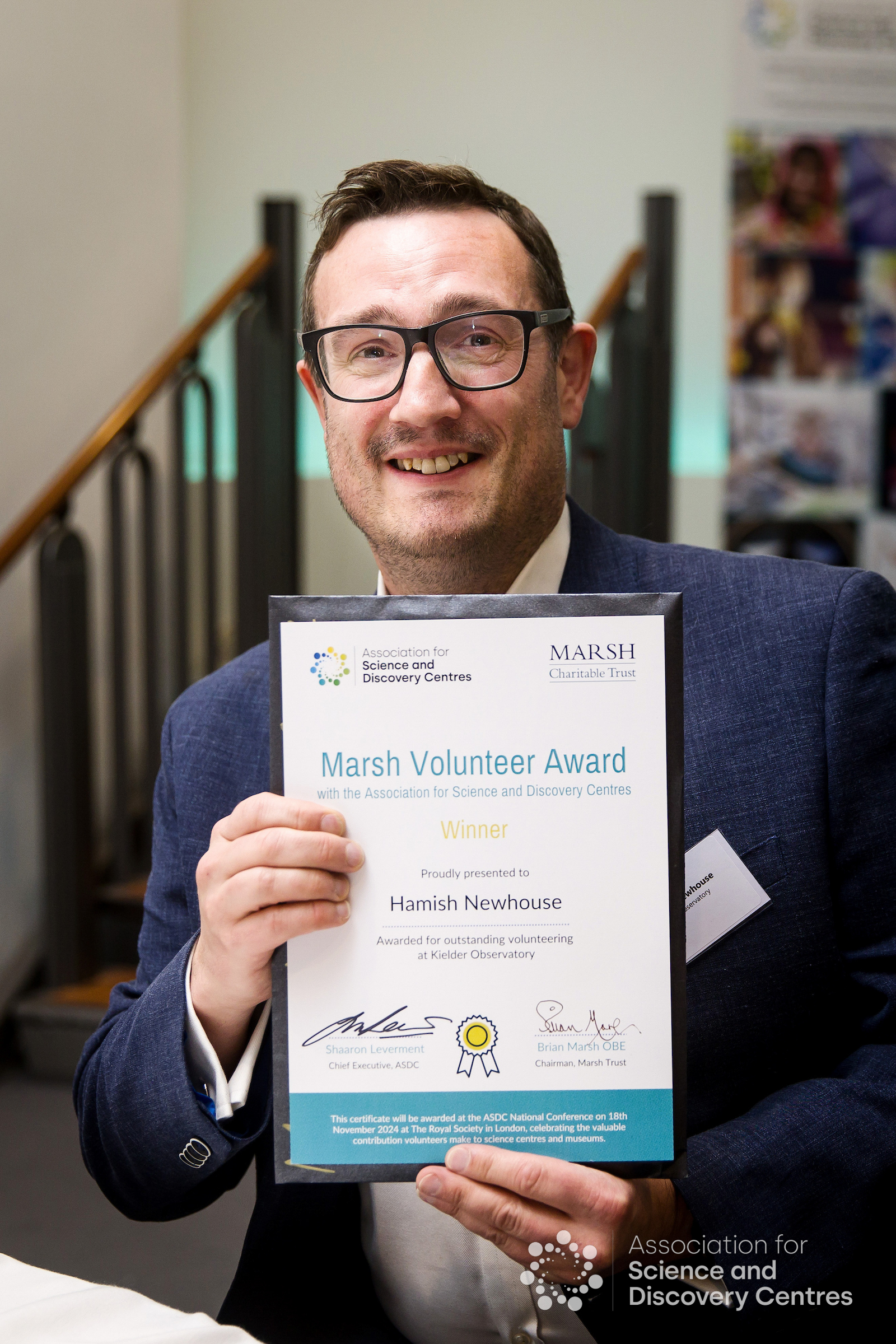
The self-confessed ‘space geek’ began volunteering at the observatory three years ago after his wife gifted him a stargazing experience for his birthday. He loved it so much he continued making the 4.5-hour round trip from his home in Northallerton, North Yorkshire, to its base in the beautiful Kielder Forest, Northumberland, every month.
His volunteer work proved to be a lifesaver when his mental health took a dark turn after he was forced to close his 15-year-old veterinary supplies business a year ago, which had never fully recovered from the impact of the Covid lockdowns.
“It came to a point last Christmas when I’d had enough of life, and I made steps to end it,” he recalled. “I never thought when I started volunteering that literally three years later it would save me.
“The people at Kielder Observatory just wrapped their arms around me and gave me a huge opportunity to rediscover joy in my life. They would give me opportunities to try new things, such as talking to people at the West End Refugee Service about space and the universe. It was a humbling experience working.
“It takes well over two hours to drive up to Northumberland, but the drive in itself is beautiful, and the observatory is such a magical place to be. It has fast become my happy place. On a dark clear night, when our universe is visible, there isn’t a place like it. Add this to the passion, knowledge and friendliness of the staff and other volunteers, and it is a truly inspirational organisation.”
It was the team at Kielder who put Hamish forward for his award, which celebrates inspiring examples of volunteer contributions and impact within the science centre and museum sector.
Dan Monk, Director of Astrophotography at Kielder and Volunteer Lead, said: “Hamish is a fantastic volunteer whose enthusiasm is a real asset to our events. His passion for astronomy always comes through to our guests and the team love having him around. He is a positive influence on us all and has even mastered our secret hot chocolate recipe. His commitment to the observatory epitomises what we’re all about - making astronomy accessible to all.”
Leigh Venus, CEO of Kielder Observatory, said: “Hamish's story is a powerful reminder of the life-changing impact of volunteering and the unique sense of community we foster at Kielder Observatory. His courage in sharing his journey highlights the importance of supporting mental health and creating spaces where people can find purpose and joy. We are incredibly grateful for Hamish and all our volunteers, whose passion and dedication inspire others and make our mission possible.”

Shaaron Leverment, Chief Executive, Association for Science and Discovery Centres, said: “This is our third year running the volunteer awards supported by The Marsh Trust, and each year we’re privileged to shine a spotlight on the heart-warming stories of the volunteers who give their time and dedication to the UK’s science and discovery centres. On behalf of the ASDC team, I’d like to say thank you to Hamish for his honesty and bravery in sharing how his role as a volunteer at Kielder Observatory saved him, inspiring others to give it a go - and find a way forward through by doing what you love.”
Hamish, who now works as a contractor escort for the Ministry of Justice in Stockton, added: “Twelve months ago if you’d said I’d be getting an award, I wouldn’t have thought it was possible. It’s been such an honour. I’m so delighted.
“I would say to anyone thinking of volunteering, do it! If you love astronomy, space, late nights and coffee then definitely join our volunteer team. It is so rewarding.”
[checked_out] => 0 [checked_out_time] => 0000-00-00 00:00:00 [catid] => 34 [created] => 2024-11-28 12:20:21 [created_by] => 52030 [created_by_alias] => [modified] => 2024-11-28 12:28:38 [modified_by] => 52030 [modified_by_name] => Hannah Matterson [publish_up] => 2024-11-28 12:20:21 [publish_down] => 0000-00-00 00:00:00 [images] => {"image_intro":"images\/Hamish-Award-3.jpg","float_intro":"","image_intro_alt":"","image_intro_caption":"","image_fulltext":"","float_fulltext":"","image_fulltext_alt":"","image_fulltext_caption":""} [urls] => {"urla":false,"urlatext":"","targeta":"","urlb":false,"urlbtext":"","targetb":"","urlc":false,"urlctext":"","targetc":""} [attribs] => {"show_title":"","link_titles":"","show_tags":"","show_intro":"","info_block_position":"","info_block_show_title":"","show_category":"","link_category":"","show_parent_category":"","link_parent_category":"","show_author":"","link_author":"","show_create_date":"","show_modify_date":"","show_publish_date":"","show_item_navigation":"","show_icons":"","show_print_icon":"","show_email_icon":"","show_vote":"","show_hits":"","show_noauth":"","urls_position":"","alternative_readmore":"","article_layout":"","show_publishing_options":"","show_article_options":"","show_urls_images_backend":"","show_urls_images_frontend":""} [metadata] => {"robots":"","author":"","rights":"","xreference":""} [metakey] => [metadesc] => [access] => 1 [hits] => 6142 [xreference] => [featured] => 0 [language] => * [readmore] => 4621 [state] => 1 [category_title] => Latest News [category_route] => uncategorised/latest-news [category_access] => 1 [category_alias] => latest-news [author] => Hannah Matterson [author_email] => hannah@kielderobservatory.org [parent_title] => ROOT [parent_id] => 1 [parent_route] => [parent_alias] => root [rating] => [rating_count] => [published] => 1 [parents_published] => 1 [alternative_readmore] => [layout] => [params] => Joomla\Registry\Registry Object ( [data:protected] => stdClass Object ( [article_layout] => _:default [show_title] => 1 [link_titles] => 0 [show_intro] => 1 [info_block_position] => 0 [info_block_show_title] => 0 [show_category] => 0 [link_category] => 0 [show_parent_category] => 0 [link_parent_category] => 0 [show_author] => 0 [link_author] => 0 [show_create_date] => 0 [show_modify_date] => 0 [show_publish_date] => 0 [show_item_navigation] => 0 [show_vote] => 0 [show_readmore] => 1 [show_readmore_title] => 0 [readmore_limit] => 100 [show_tags] => 0 [show_icons] => 0 [show_print_icon] => 0 [show_email_icon] => 0 [show_hits] => 0 [show_noauth] => 0 [urls_position] => 0 [show_publishing_options] => 1 [show_article_options] => 1 [save_history] => 1 [history_limit] => 10 [show_urls_images_frontend] => 0 [show_urls_images_backend] => 1 [targeta] => 0 [targetb] => 0 [targetc] => 0 [float_intro] => right [float_fulltext] => none [category_layout] => _:blog [show_category_heading_title_text] => 1 [show_category_title] => 0 [show_description] => 1 [show_description_image] => 0 [maxLevel] => 1 [show_empty_categories] => 0 [show_no_articles] => 1 [show_subcat_desc] => 1 [show_cat_num_articles] => 0 [show_cat_tags] => 1 [show_base_description] => 1 [maxLevelcat] => -1 [show_empty_categories_cat] => 0 [show_subcat_desc_cat] => 1 [show_cat_num_articles_cat] => 1 [num_leading_articles] => 0 [num_intro_articles] => 27 [num_columns] => 1 [num_links] => 4 [multi_column_order] => 0 [show_subcategory_content] => 0 [show_pagination_limit] => 1 [filter_field] => hide [show_headings] => 1 [list_show_date] => 0 [date_format] => [list_show_hits] => 1 [list_show_author] => 1 [orderby_pri] => order [orderby_sec] => rdate [order_date] => published [show_pagination] => 1 [show_pagination_results] => 1 [show_featured] => show [show_feed_link] => 1 [feed_summary] => 0 [feed_show_readmore] => 0 [show_page_heading] => 0 [layout_type] => blog [menu_text] => 1 [menu_show] => 0 [secure] => 0 [page_title] => Latest News [page_description] => Kielder Observatory Astronomical Society [page_rights] => [robots] => [access-view] => 1 ) [separator] => . ) [displayDate] => 2024-11-28 12:20:21 [slug] => 410:national-volunteer-award-for-inspirational-hamish [parent_slug] => [catslug] => 34:latest-news [event] => stdClass Object ( [afterDisplayTitle] => [beforeDisplayContent] => [afterDisplayContent] => ) [text] =>A volunteer who credits the charity where he works for saving his life and bringing him joy has been honoured with a national award.
)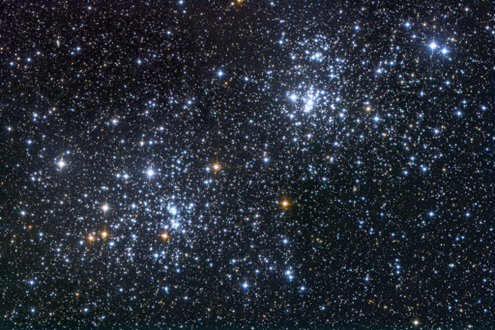
What's Up? December 2024
Ho Ho Ho! The festive season is already upon us! How has this happened again. Blink and the year is practically gone! In this edition of What’s Up, we’re going to be showing you all the interesting objects in the night sky you can look at during the month of December, taking you through to the New Year.
Read Time
6 minutes
Ho Ho Ho! The festive season is already upon us! How has this happened again. Blink and the year is practically gone! In this edition of What’s Up, we’re going to be showing you all the interesting objects in the night sky you can look at during the month of December, taking you through to the New Year.
[fulltext] =>
Festive Constellations
During the holidays hopefully you’ll have more time to look outside and see our old favourites again.
At this time of year, the hunter Orion, is well and truly back in our skies!
Orion is one of the most recognizable constellations across the world. In Greek mythology, Orion is known as a hunter, holding a shield in one hand and a sword in the other. In the northern hemisphere, his appearance signals the arrival of colder weather.
If you take the belt of Orion (which are the three stars in the middle) and follow them towards the right, it leads you to a very bright amber star by the name of Aldebaran. It is known as the eye of the bull, as it’s situated within the constellation of Taurus. The star is a red giant, which causes it’s gorgeous golden colour. This means it’s running out of fuel in the core of our star, and therefore is much cooler and redder than our Sun.
To the right of Aldebaran, but still within Taurus, is another famous object in the night sky, the Pleiades. They are also known as the seven sisters, as you can count about 7 stars located together in a small cluster. This cluster looks like a little fuzzy patch, but go somewhere dark and let you eyes adjust, you should be able to count them all. Look though a pair of binoculars or telescope, and you can see many more stars within the cluster!

Image: Winter Sky at Kielder Observatory showing Orion, Aldebaran and the Pleiades
Object of the month: The Double Cluster in Perseus

Image: The Double Cluster in Perseus. Credit: Roth Ritter, Dark Atmospheres Astrophotography
The deep sky object in this month's What’s Up is one of our favourites here at the observatory. It is best seen with a pair of binoculars or a small telescope.
If you find the constellation of Cassiopeia, towards the bottom left of the “W” is Perseus, the hero who saved her daughter. Just in between these two constellations are a double cluster of stars creatively named “The Double Cluster in Perseus”. This is probably the best time of year to see the double Cluster in Perseus with the naked eye as it’s very high up. It will look like a faint fuzzy patch.
This fuzzy smudge in the sky has been seen for millennia on dark nights. The Greeks noted a “light” in Perseus in around 150 BCE. However, it wasn’t until the invention of the telescope that we discovered it’s actually two groups of stars that appear to be side by side. If you have a small telescope or binoculars at home, this is a great object to try and spot. Both clusters sit around 7500 light years away (about 400ly away from each other) and are only 13 million years old, which is very, very young for stars! The cluster is dominated by a few hundred baby stars shining a bright blue, however there are already one or two stars growing a few metaphorical grey hairs and turning orange.
Meteor Showers!
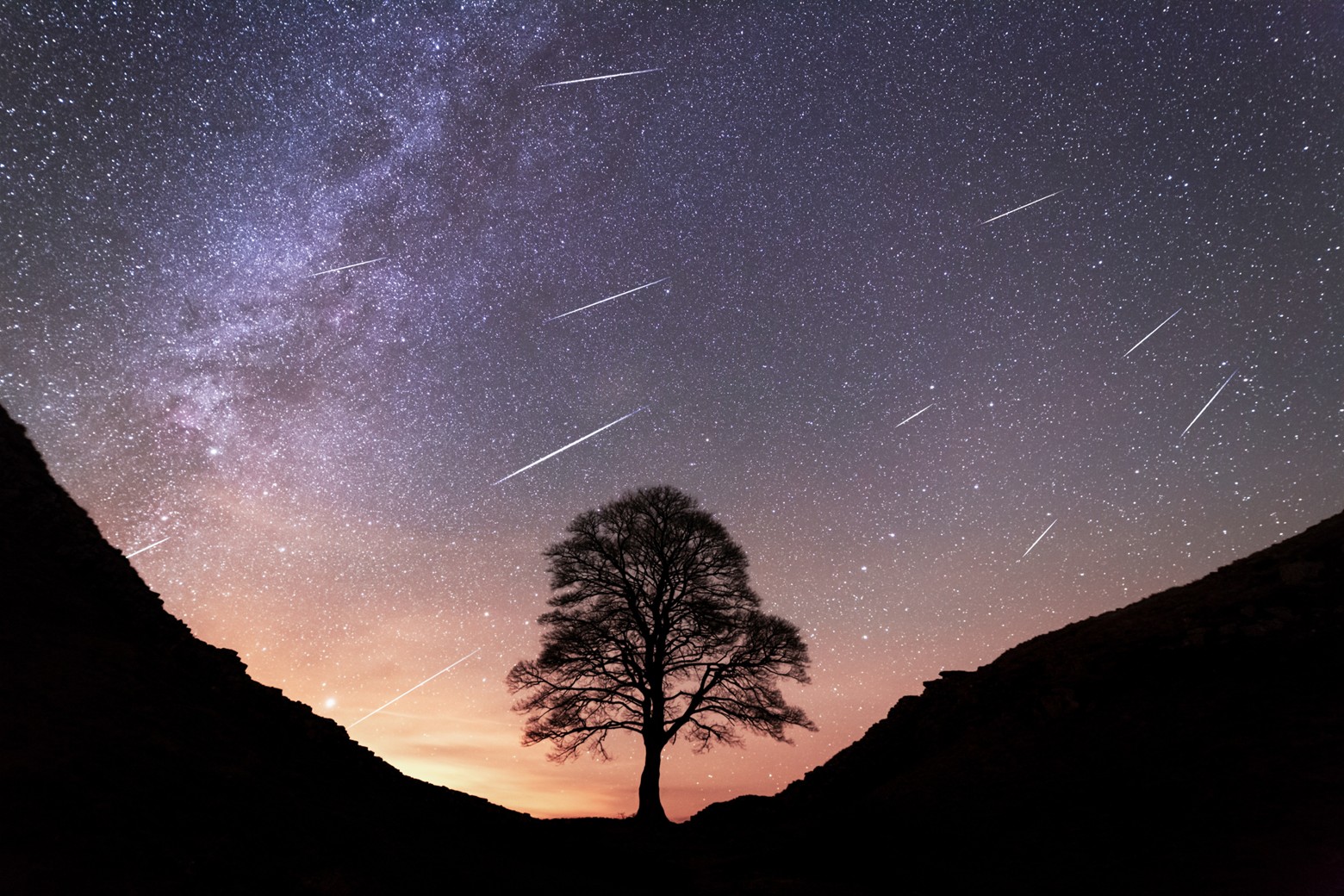
Image: Geminid Shower at Sycamore Gap. Credit: Dan Monk
The Geminid Meteor shower is back! This is one of the most active and beautiful meteor showers of the year. At its peak and can rain up to 100 shooting stars an hour! The whole shower will be active from the 5th and 20th of December, but the peak will be on the 13th/14th of December. Sadly, this year that falls right about when the full moon is here. The full moon provides a lot of light pollution so we might not see tons of shooting stars, but we should still see a few. They will be radiating from the constellation Gemini but you will see them across the whole sky.
We have one more meteor shower this month called the Ursid meteor shower! This is a relatively lower active meteor shower but we should hopefully still see some shooting stars. This year it also falls at a time when there’s less than a half moon and it won’t be rising until about 2am. The peak of the Ursids is on the 23rd of December, so fingers crossed for clear skies!
Winter Solstice
The shortest day of the year (in the Northern Hemisphere) is on the 21st of December. There will only be around 7 hours and 40 minutes of daylight in Northumberland! The reason it’s the shortest day is because the Earth’s North Pole is being tilted the farthest away from the Sun, and the Sun’s rays are shining on the Southern Hemisphere.

Image: The tilted Earth orbiting the Sun causes solstices. Credit: timeanddate.com
The word “solstice” is named after the Latin words “sol” and “sister”, which mean “sun” and “to stand”. Referring to the way the Sun appears to stand still and then slowly return to either the north or south.
Around the world different cultures have many different ways they celebrate this time of year. The Pagan celebration of Yule dates back millennia. Many modern Christian traditions originate from Celtic and Druid customs for the winter solstice, such as decorating with evergreen plants like holly, ivy and mistletoe, burning yule logs and making wreaths.
In China, people celebrate with food which symbolises reunion and harmony - dumplings and rice flour balls. In Japan they celebrate by taking a hot citrus bath for healing and good luck!
Some Middle Eastern communities celebrate the winter solstice as “Yalda Night”. It involves families coming together to eat, recite poetry, and serve foods that symbolise abundance, such as pomegranates.
In the UK people still gather at the ancient Stonehenge for a druid and pagan ceremony. Some stay all night with food, blankets and instruments, playing music and telling stories.

Image: Winter Solstice at Stonehenge. Credit: GettyImages
The Moon and Planets
Saturn, Jupiter and Mars are all visible by eye this month. Uranus and Neptune also if you have a telescope!
New Moon: 1 December
First Quarter: 8 December
Full Moon: 15 December
Last Quarter: 22 December
New Moon: 30 December
Happy Stargazing! See you all in the New Year!
[checked_out] => 0 [checked_out_time] => 0000-00-00 00:00:00 [catid] => 34 [created] => 2024-11-26 10:23:36 [created_by] => 52030 [created_by_alias] => [modified] => 2024-11-26 10:25:53 [modified_by] => 52030 [modified_by_name] => Hannah Matterson [publish_up] => 2024-11-26 10:23:36 [publish_down] => 0000-00-00 00:00:00 [images] => {"image_intro":"images\/Blog-Images\/Double-Cluster.png","float_intro":"","image_intro_alt":"","image_intro_caption":"","image_fulltext":"","float_fulltext":"","image_fulltext_alt":"","image_fulltext_caption":""} [urls] => {"urla":false,"urlatext":"","targeta":"","urlb":false,"urlbtext":"","targetb":"","urlc":false,"urlctext":"","targetc":""} [attribs] => {"show_title":"","link_titles":"","show_tags":"","show_intro":"","info_block_position":"","info_block_show_title":"","show_category":"","link_category":"","show_parent_category":"","link_parent_category":"","show_author":"","link_author":"","show_create_date":"","show_modify_date":"","show_publish_date":"","show_item_navigation":"","show_icons":"","show_print_icon":"","show_email_icon":"","show_vote":"","show_hits":"","show_noauth":"","urls_position":"","alternative_readmore":"","article_layout":"","show_publishing_options":"","show_article_options":"","show_urls_images_backend":"","show_urls_images_frontend":""} [metadata] => {"robots":"","author":"","rights":"","xreference":""} [metakey] => [metadesc] => [access] => 1 [hits] => 6740 [xreference] => [featured] => 0 [language] => * [readmore] => 12166 [state] => 1 [category_title] => Latest News [category_route] => uncategorised/latest-news [category_access] => 1 [category_alias] => latest-news [author] => Hannah Matterson [author_email] => hannah@kielderobservatory.org [parent_title] => ROOT [parent_id] => 1 [parent_route] => [parent_alias] => root [rating] => [rating_count] => [published] => 1 [parents_published] => 1 [alternative_readmore] => [layout] => [params] => Joomla\Registry\Registry Object ( [data:protected] => stdClass Object ( [article_layout] => _:default [show_title] => 1 [link_titles] => 0 [show_intro] => 1 [info_block_position] => 0 [info_block_show_title] => 0 [show_category] => 0 [link_category] => 0 [show_parent_category] => 0 [link_parent_category] => 0 [show_author] => 0 [link_author] => 0 [show_create_date] => 0 [show_modify_date] => 0 [show_publish_date] => 0 [show_item_navigation] => 0 [show_vote] => 0 [show_readmore] => 1 [show_readmore_title] => 0 [readmore_limit] => 100 [show_tags] => 0 [show_icons] => 0 [show_print_icon] => 0 [show_email_icon] => 0 [show_hits] => 0 [show_noauth] => 0 [urls_position] => 0 [show_publishing_options] => 1 [show_article_options] => 1 [save_history] => 1 [history_limit] => 10 [show_urls_images_frontend] => 0 [show_urls_images_backend] => 1 [targeta] => 0 [targetb] => 0 [targetc] => 0 [float_intro] => right [float_fulltext] => none [category_layout] => _:blog [show_category_heading_title_text] => 1 [show_category_title] => 0 [show_description] => 1 [show_description_image] => 0 [maxLevel] => 1 [show_empty_categories] => 0 [show_no_articles] => 1 [show_subcat_desc] => 1 [show_cat_num_articles] => 0 [show_cat_tags] => 1 [show_base_description] => 1 [maxLevelcat] => -1 [show_empty_categories_cat] => 0 [show_subcat_desc_cat] => 1 [show_cat_num_articles_cat] => 1 [num_leading_articles] => 0 [num_intro_articles] => 27 [num_columns] => 1 [num_links] => 4 [multi_column_order] => 0 [show_subcategory_content] => 0 [show_pagination_limit] => 1 [filter_field] => hide [show_headings] => 1 [list_show_date] => 0 [date_format] => [list_show_hits] => 1 [list_show_author] => 1 [orderby_pri] => order [orderby_sec] => rdate [order_date] => published [show_pagination] => 1 [show_pagination_results] => 1 [show_featured] => show [show_feed_link] => 1 [feed_summary] => 0 [feed_show_readmore] => 0 [show_page_heading] => 0 [layout_type] => blog [menu_text] => 1 [menu_show] => 0 [secure] => 0 [page_title] => Latest News [page_description] => Kielder Observatory Astronomical Society [page_rights] => [robots] => [access-view] => 1 ) [separator] => . ) [displayDate] => 2024-11-26 10:23:36 [slug] => 409:what-s-up-december-2025 [parent_slug] => [catslug] => 34:latest-news [event] => stdClass Object ( [afterDisplayTitle] => [beforeDisplayContent] => [afterDisplayContent] => ) [text] =>Ho Ho Ho! The festive season is already upon us! How has this happened again. Blink and the year is practically gone! In this edition of What’s Up, we’re going to be showing you all the interesting objects in the night sky you can look at during the month of December, taking you through to the New Year.
)
The Secret Life of Nebula
Robert Williams, President of Huddersfield Astronomy Society, is exploiring nebula in this mini series. In part 1 he takes a closer look at Messier 42, the Great Nebula of Orion.
Read Time
3 minutes
Robert Williams, President of Huddersfield Astronomy Society, is exploiring nebula in this mini series. In part 1 he takes a closer look at Messier 42, the Great Nebula of Orion.
[fulltext] =>
The Orion Nebula, also known to Amateur Astronomers as Messier 42, is one of the best-known fuzzy blobs in the night sky. Its location, close to the celestial equator, means that it can be viewed, at some time of the years, from almost every inhabited location on Earth. Because of this, it is right of passage for any budding stargazer, to view, and then image this amazing structure, which is located in our, relatively close, starry neighbourhood.

Messier 42 – Imaged from Norfolk in 2021, during a photographic Aurora. Credit: Robert Williams
Messier 42 has been known about for longer than the telescope has been used and has been recorded by many civilisations in numerous ways. Most viewers of this misty patch in the sky, widely known as the middle of the Sword of Orion, see the 4 or 5 stars depending upon their location. From a very dark site, such as Kielder Forest and other registered Dark Sky Discovery Sites, it is possible to see that the 4 or more stars that make up the centre of the Nebula, more usually known as the Trapezium Cluster, are surrounded by a cloud of glowing gas (Messier 42) which itself is embedded within a much larger structure. This larger structure is the front-side edge of a huge dusty cloud - an enormous, but very cold bubble of dust and gas, known as the Orion Molecular Cloud.
The Orion Molecular Cloud stretches right across the entire constellation of Orion and is split up into individual structures, each of which were responsible for the construction of the Orion nebula alongside the Flame Nebula and9 Horsehead Nebula near the star Zeta Orionis [Alnitak, LHS Star of Orion's Belt] and Messier 78 NE of Alnitak), as well as many of the less well known structures residing in Orion and neighbouring constellations.

IC405 - The Flaming Star Nebula - imaged from Norfolk in 2023. Credit: Robert Williams
What is less-well known is that the Orion nebula is missing at least 2 stars.
In the constellation of Auriga, resides another Nebula – the Flaming Star Nebula. As its name suggests this nebula is being created by a star in the 'fast lane' - AE Aurigae. Scientists have discovered that around 5 million years ago, AE Aurigae was originally born within and, at the same time as the stars, of the Trapezium Cluster.

Star-chart showing the juxtaposition of Messier 42, IC 405 and Mu Columbae in the sky. Star-chart created in Carte du Ciel [SkyCharts]
Additionally, another star, Mu Columbae, in the constellation of Columbae the Dove (which is in the far south of the sky and not visible from Kielder), was also ejected from the Trapezium at around the same time. Furthermore, another star in the constellation of Leo may also have been ejected, but the evidence for this is less certain. Both AE Aurigae and Mu Columbae have similar stellar properties (Mass, type, temperature, age) to the stars of the trapezium Cluster.
[checked_out] => 0 [checked_out_time] => 0000-00-00 00:00:00 [catid] => 34 [created] => 2024-11-25 16:36:43 [created_by] => 52030 [created_by_alias] => [modified] => 2024-11-26 10:15:06 [modified_by] => 52030 [modified_by_name] => Hannah Matterson [publish_up] => 2024-11-26 10:14:50 [publish_down] => 0000-00-00 00:00:00 [images] => {"image_intro":"images\/Blog-Images\/RWArticles\/Image1.jpg","float_intro":"","image_intro_alt":"","image_intro_caption":"","image_fulltext":"","float_fulltext":"","image_fulltext_alt":"","image_fulltext_caption":""} [urls] => {"urla":false,"urlatext":"","targeta":"","urlb":false,"urlbtext":"","targetb":"","urlc":false,"urlctext":"","targetc":""} [attribs] => {"show_title":"","link_titles":"","show_tags":"","show_intro":"","info_block_position":"","info_block_show_title":"","show_category":"","link_category":"","show_parent_category":"","link_parent_category":"","show_author":"","link_author":"","show_create_date":"","show_modify_date":"","show_publish_date":"","show_item_navigation":"","show_icons":"","show_print_icon":"","show_email_icon":"","show_vote":"","show_hits":"","show_noauth":"","urls_position":"","alternative_readmore":"","article_layout":"","show_publishing_options":"","show_article_options":"","show_urls_images_backend":"","show_urls_images_frontend":""} [metadata] => {"robots":"","author":"","rights":"","xreference":""} [metakey] => [metadesc] => [access] => 1 [hits] => 6340 [xreference] => [featured] => 0 [language] => * [readmore] => 3924 [state] => 1 [category_title] => Latest News [category_route] => uncategorised/latest-news [category_access] => 1 [category_alias] => latest-news [author] => Hannah Matterson [author_email] => hannah@kielderobservatory.org [parent_title] => ROOT [parent_id] => 1 [parent_route] => [parent_alias] => root [rating] => [rating_count] => [published] => 1 [parents_published] => 1 [alternative_readmore] => [layout] => [params] => Joomla\Registry\Registry Object ( [data:protected] => stdClass Object ( [article_layout] => _:default [show_title] => 1 [link_titles] => 0 [show_intro] => 1 [info_block_position] => 0 [info_block_show_title] => 0 [show_category] => 0 [link_category] => 0 [show_parent_category] => 0 [link_parent_category] => 0 [show_author] => 0 [link_author] => 0 [show_create_date] => 0 [show_modify_date] => 0 [show_publish_date] => 0 [show_item_navigation] => 0 [show_vote] => 0 [show_readmore] => 1 [show_readmore_title] => 0 [readmore_limit] => 100 [show_tags] => 0 [show_icons] => 0 [show_print_icon] => 0 [show_email_icon] => 0 [show_hits] => 0 [show_noauth] => 0 [urls_position] => 0 [show_publishing_options] => 1 [show_article_options] => 1 [save_history] => 1 [history_limit] => 10 [show_urls_images_frontend] => 0 [show_urls_images_backend] => 1 [targeta] => 0 [targetb] => 0 [targetc] => 0 [float_intro] => right [float_fulltext] => none [category_layout] => _:blog [show_category_heading_title_text] => 1 [show_category_title] => 0 [show_description] => 1 [show_description_image] => 0 [maxLevel] => 1 [show_empty_categories] => 0 [show_no_articles] => 1 [show_subcat_desc] => 1 [show_cat_num_articles] => 0 [show_cat_tags] => 1 [show_base_description] => 1 [maxLevelcat] => -1 [show_empty_categories_cat] => 0 [show_subcat_desc_cat] => 1 [show_cat_num_articles_cat] => 1 [num_leading_articles] => 0 [num_intro_articles] => 27 [num_columns] => 1 [num_links] => 4 [multi_column_order] => 0 [show_subcategory_content] => 0 [show_pagination_limit] => 1 [filter_field] => hide [show_headings] => 1 [list_show_date] => 0 [date_format] => [list_show_hits] => 1 [list_show_author] => 1 [orderby_pri] => order [orderby_sec] => rdate [order_date] => published [show_pagination] => 1 [show_pagination_results] => 1 [show_featured] => show [show_feed_link] => 1 [feed_summary] => 0 [feed_show_readmore] => 0 [show_page_heading] => 0 [layout_type] => blog [menu_text] => 1 [menu_show] => 0 [secure] => 0 [page_title] => Latest News [page_description] => Kielder Observatory Astronomical Society [page_rights] => [robots] => [access-view] => 1 ) [separator] => . ) [displayDate] => 2024-11-25 16:36:43 [slug] => 407:the-secret-life-of-nebula [parent_slug] => [catslug] => 34:latest-news [event] => stdClass Object ( [afterDisplayTitle] => [beforeDisplayContent] => [afterDisplayContent] => ) [text] =>Robert Williams, President of Huddersfield Astronomy Society, is exploiring nebula in this mini series. In part 1 he takes a closer look at Messier 42, the Great Nebula of Orion.
)